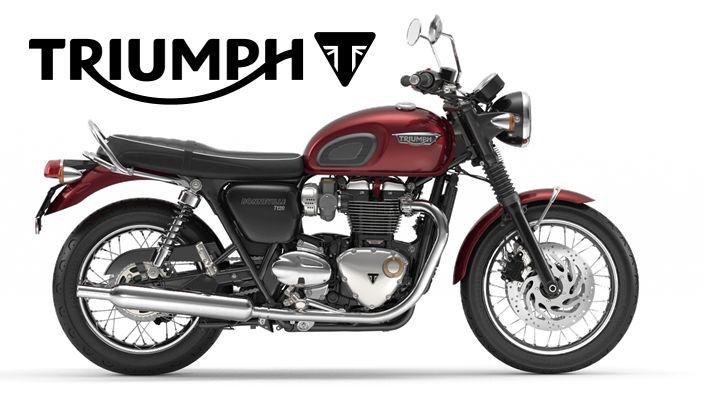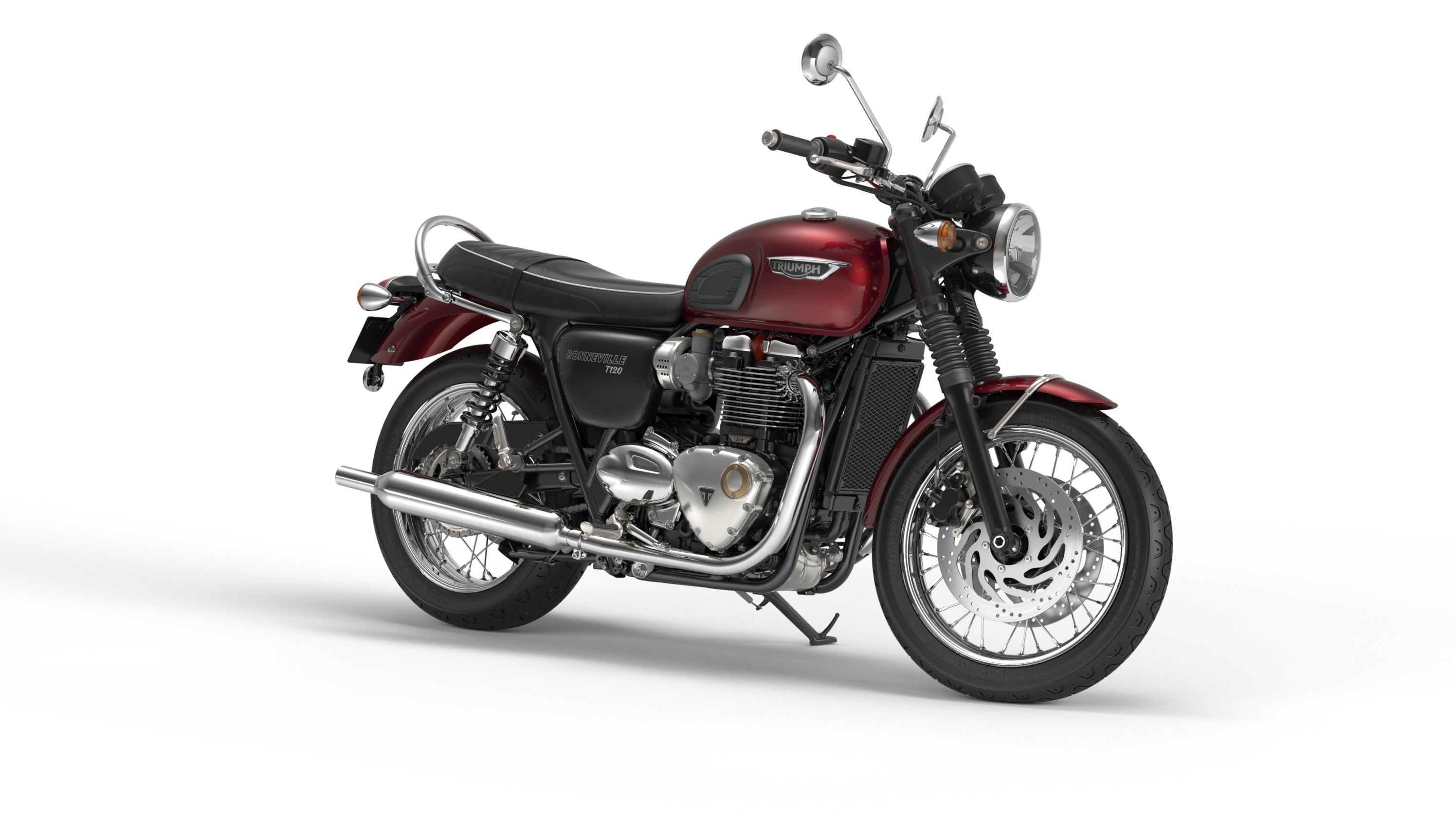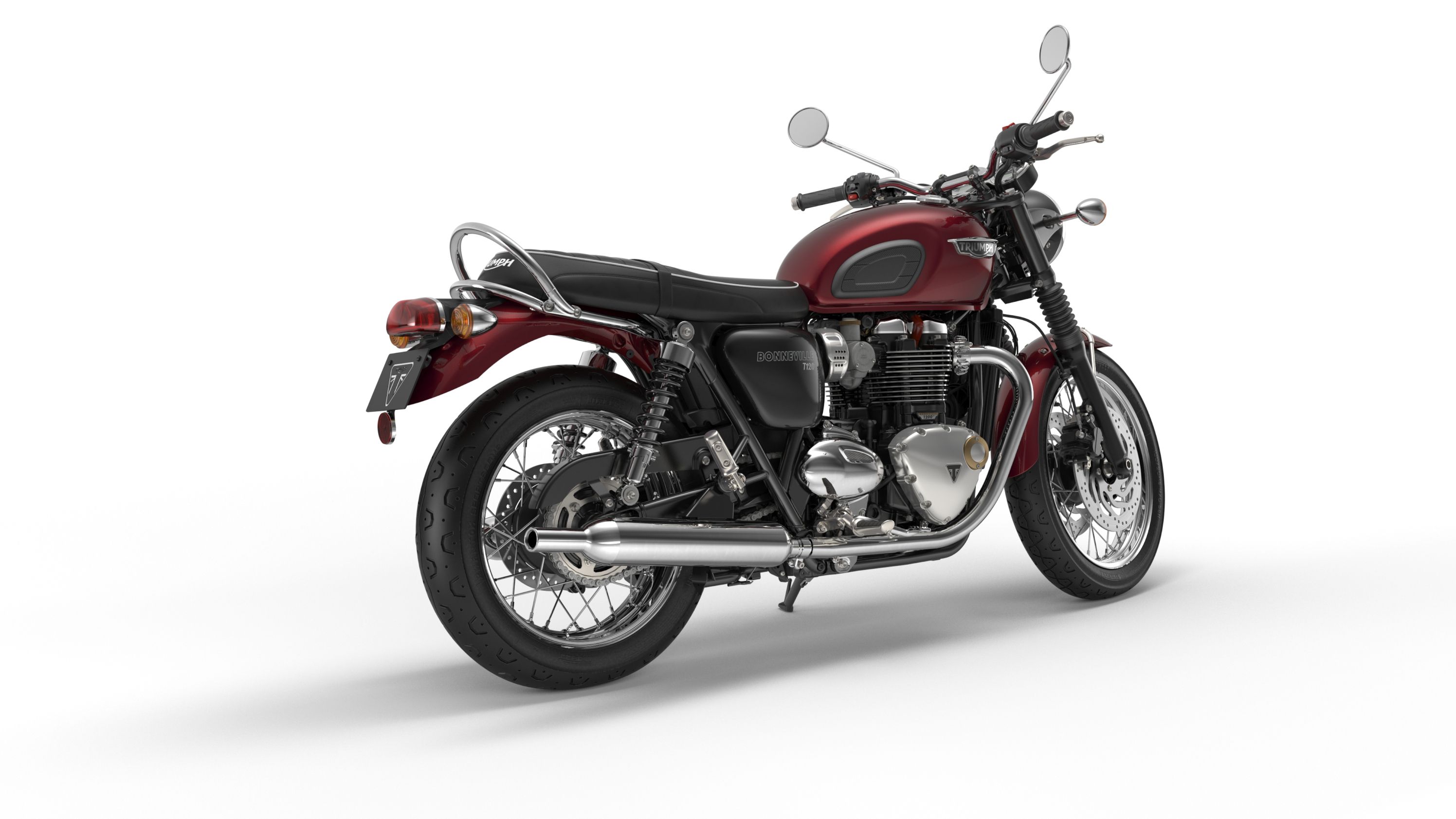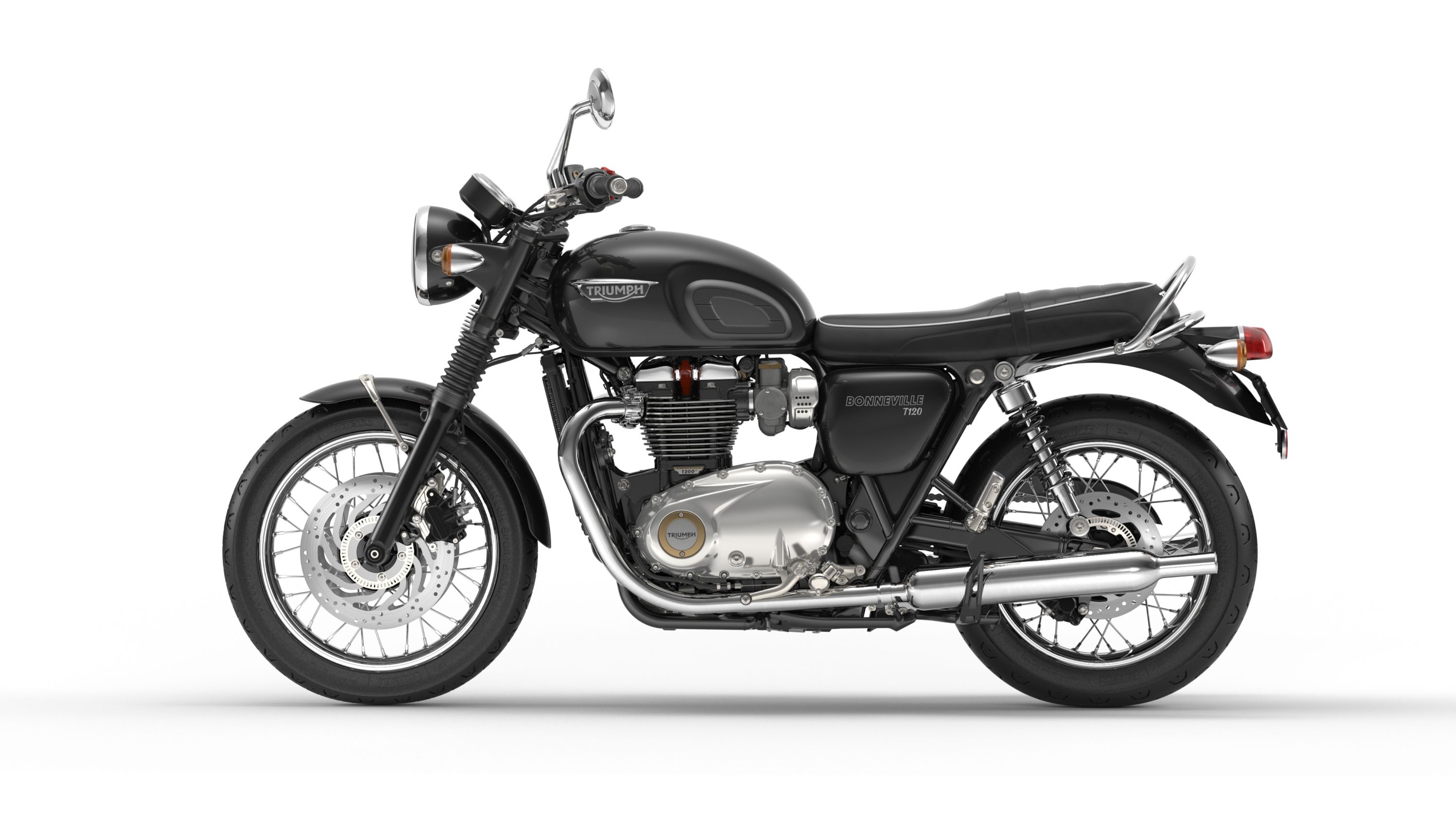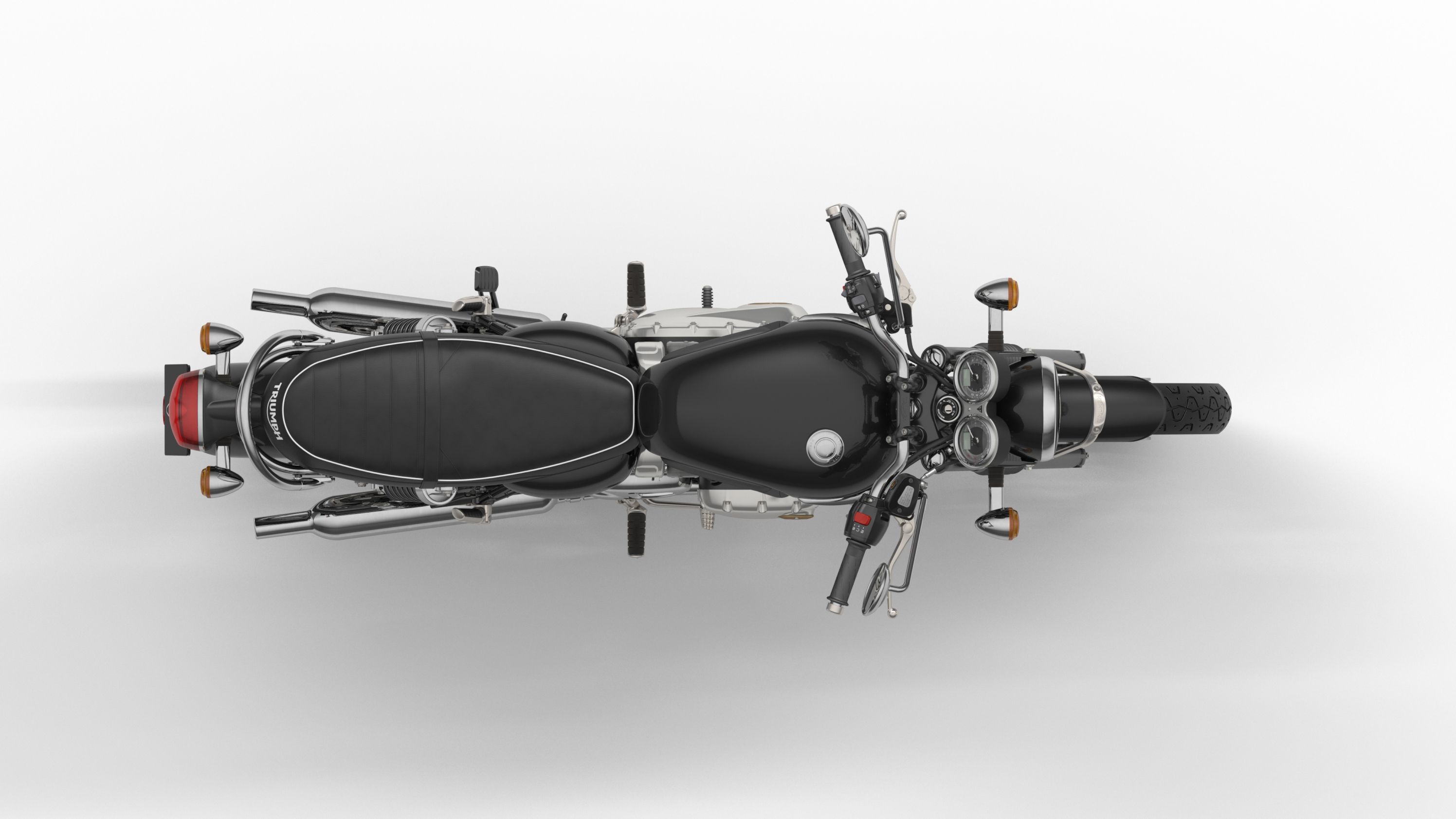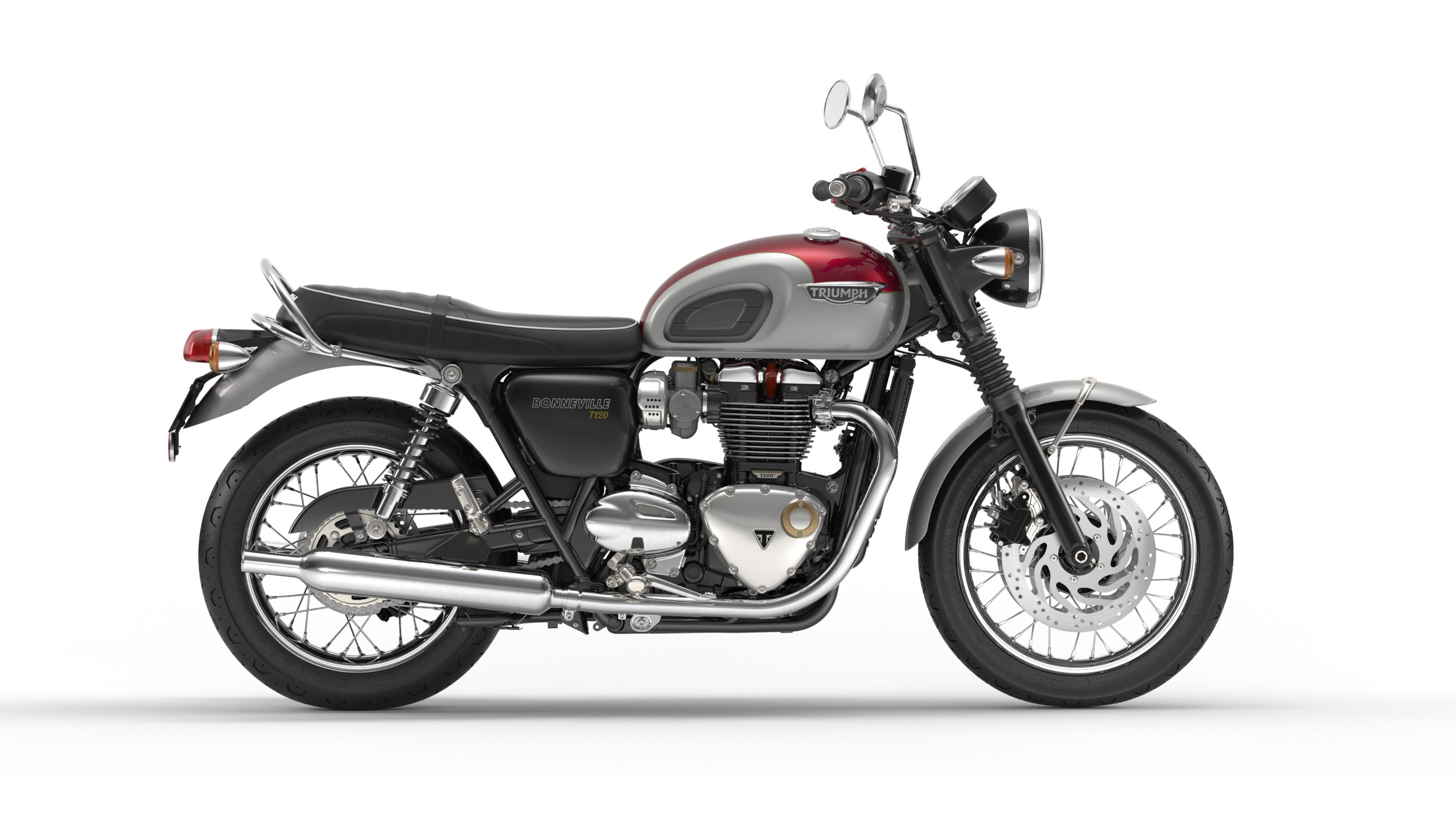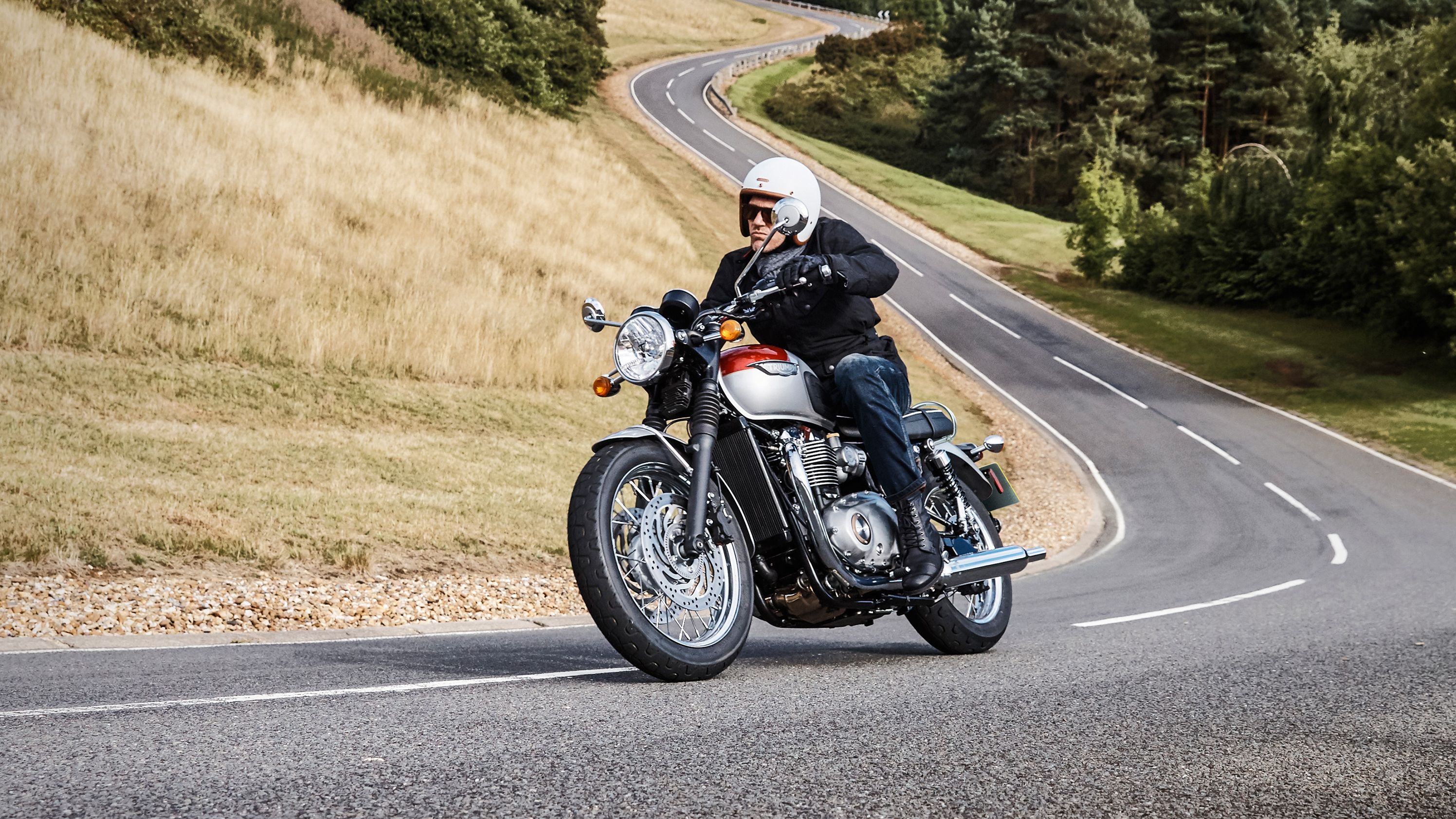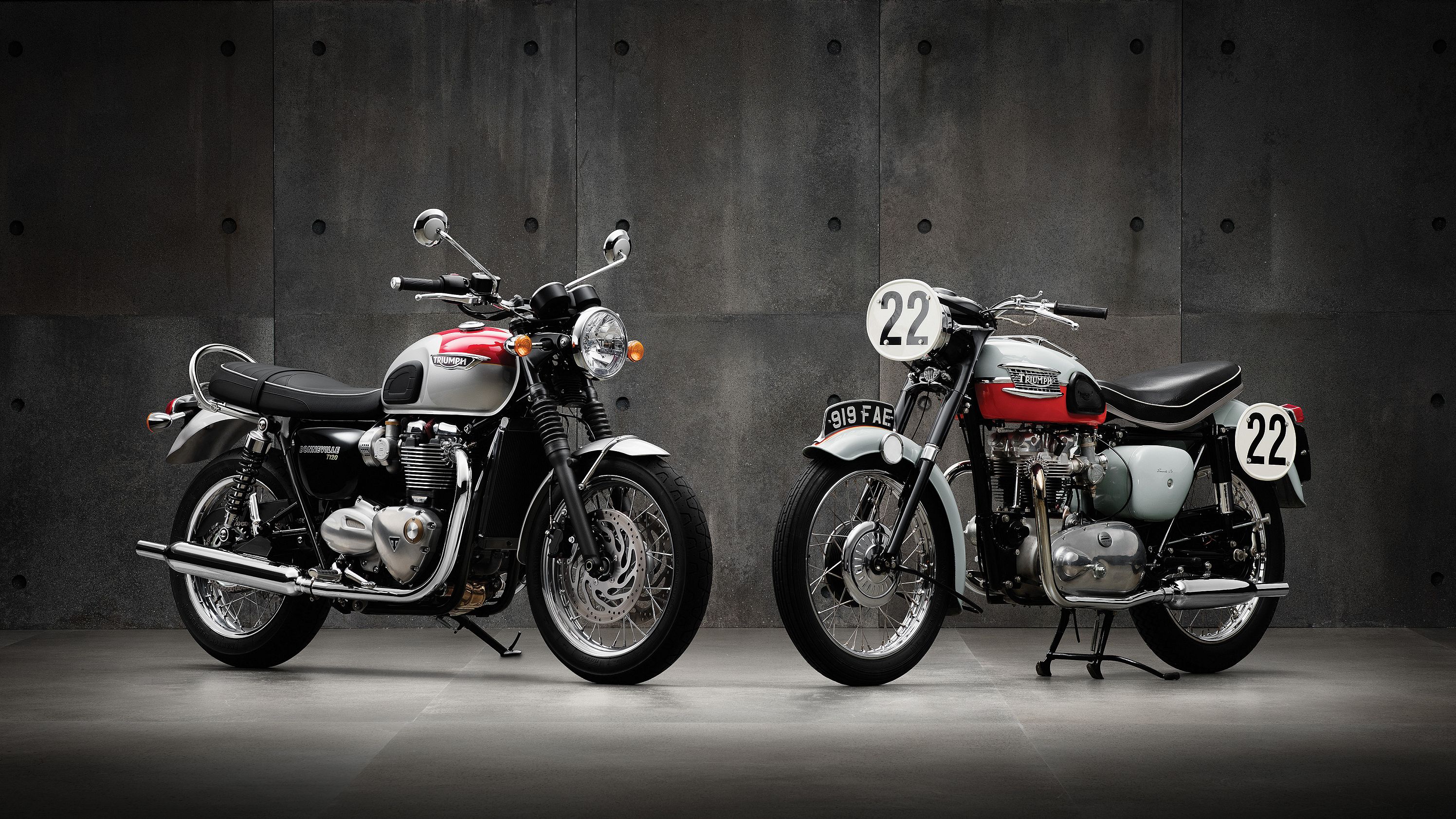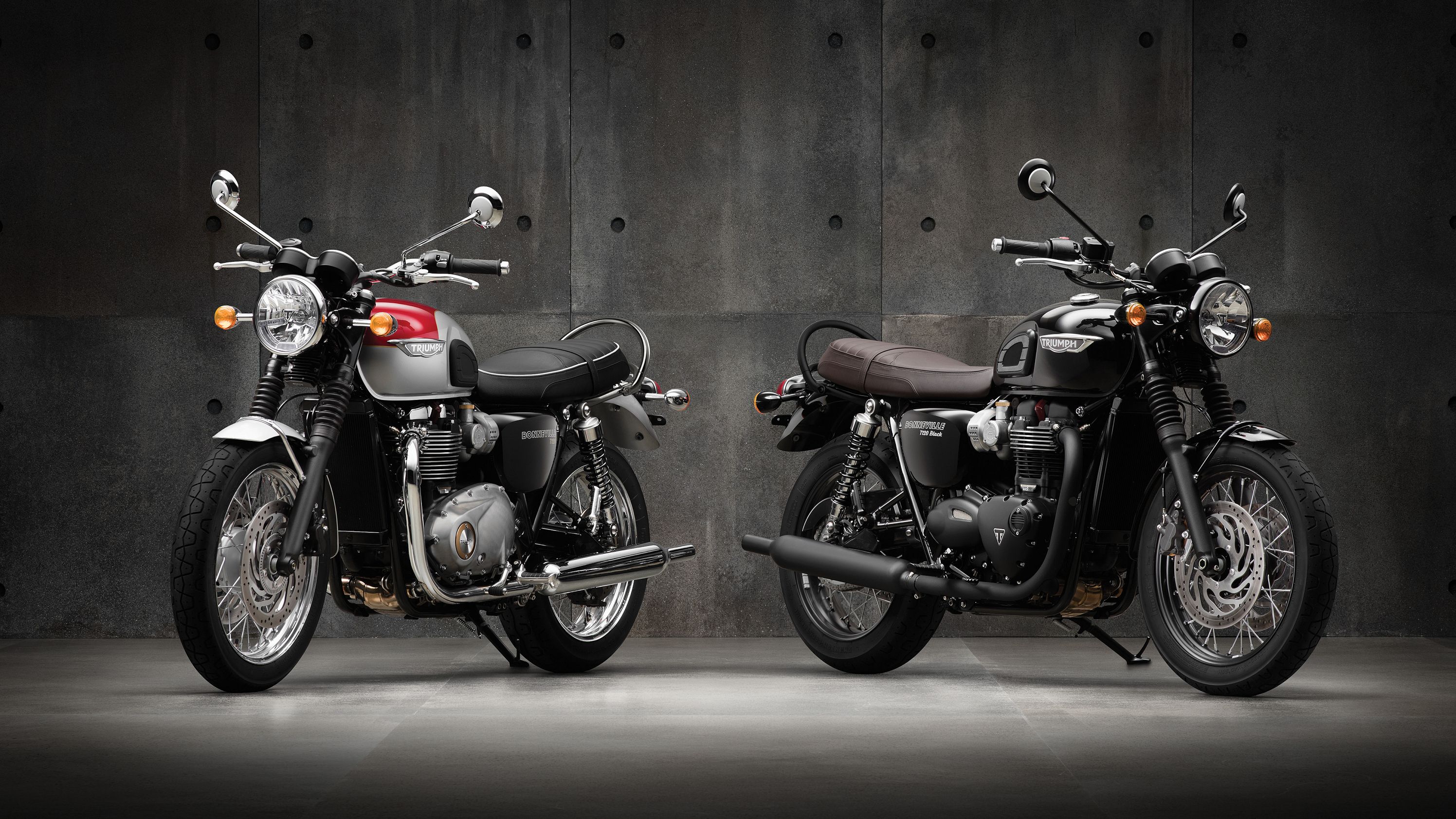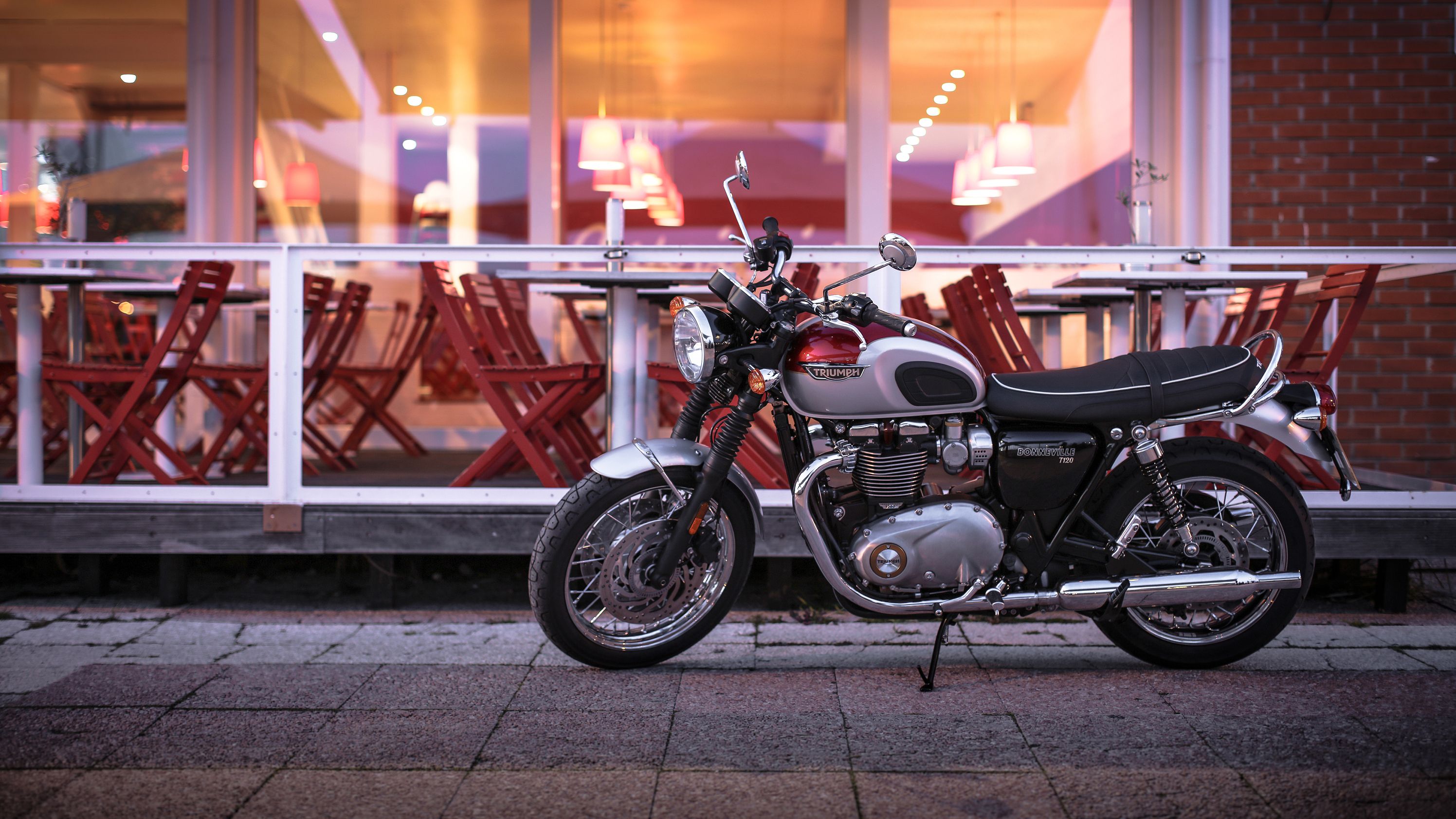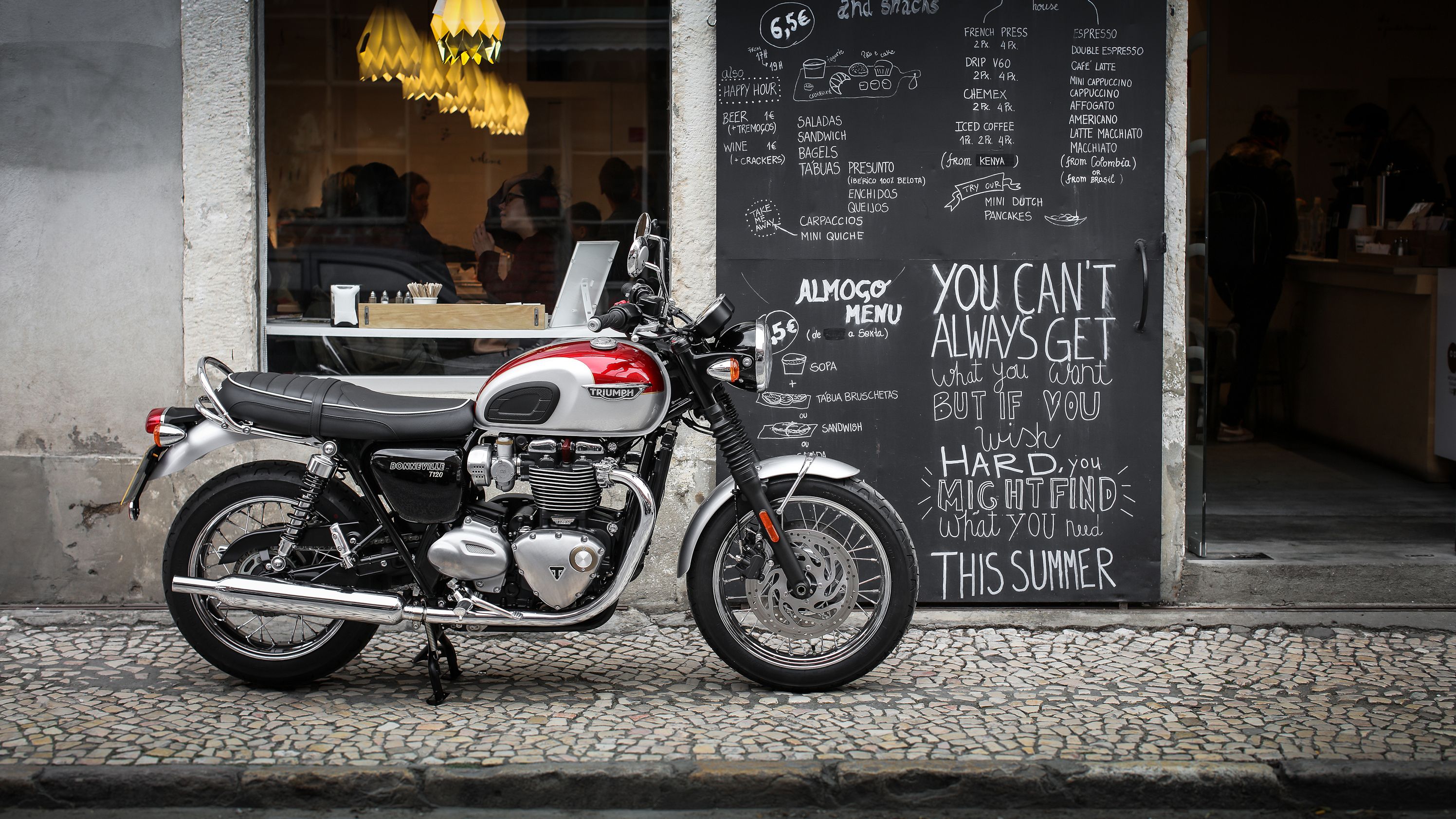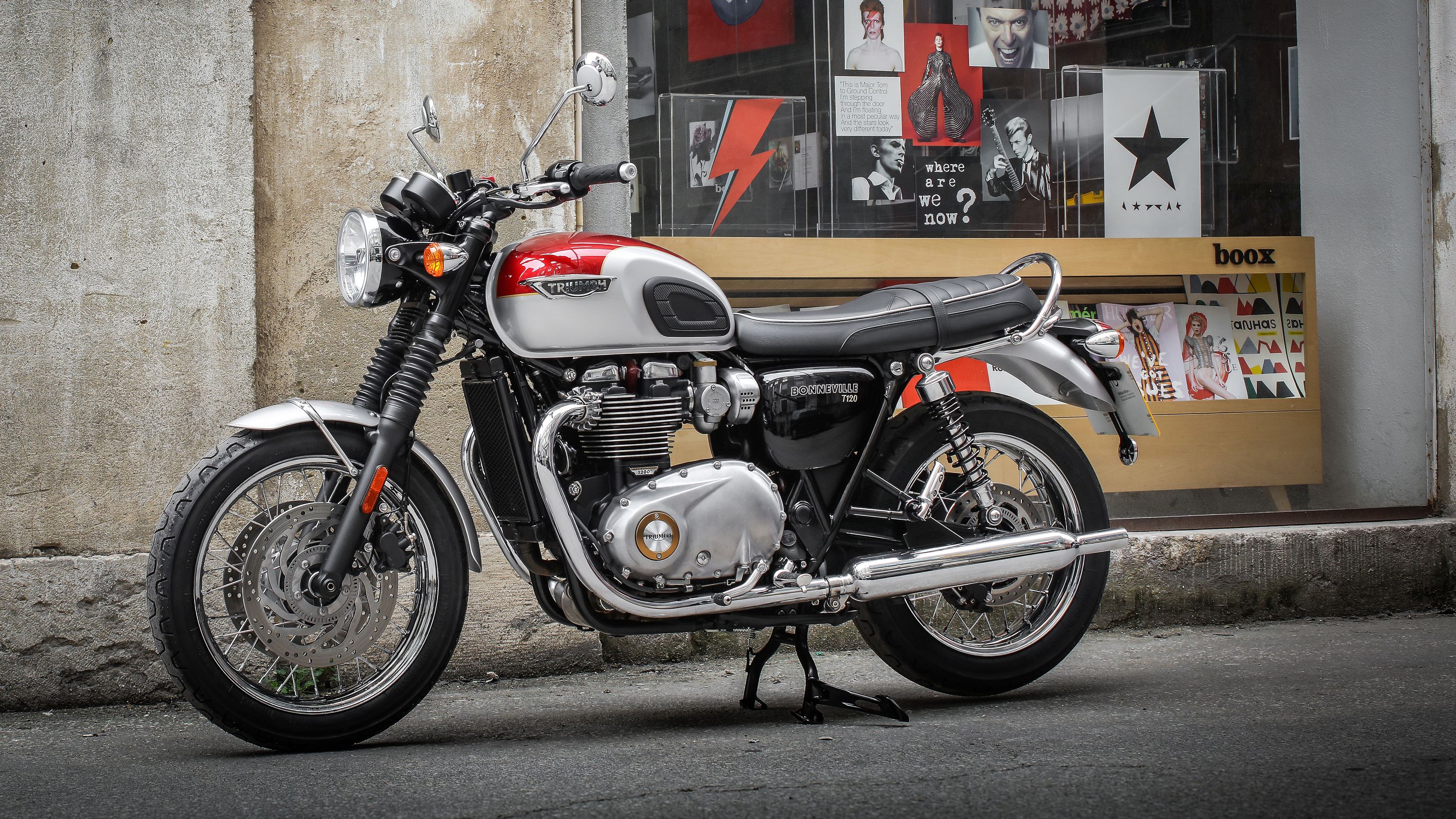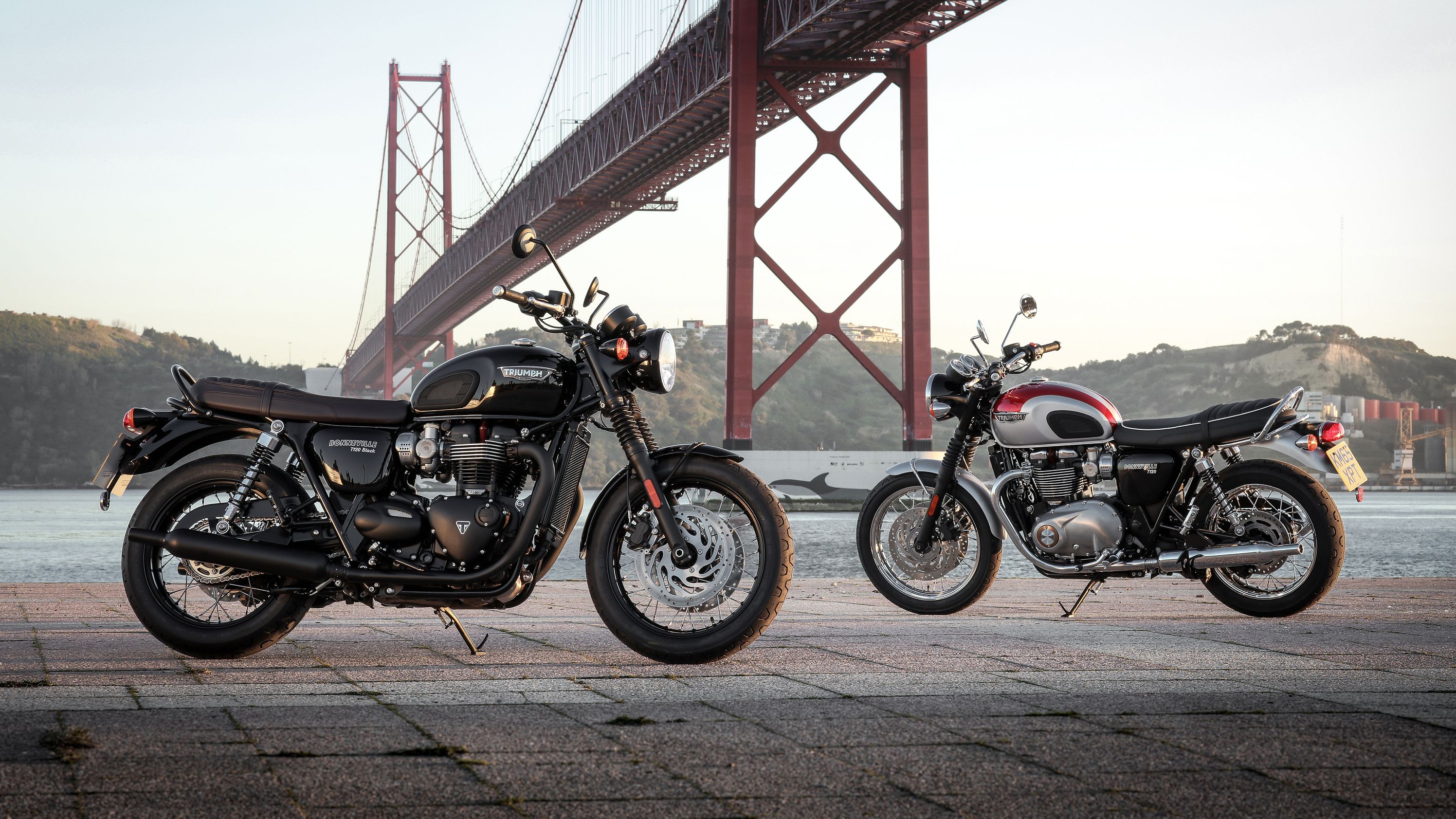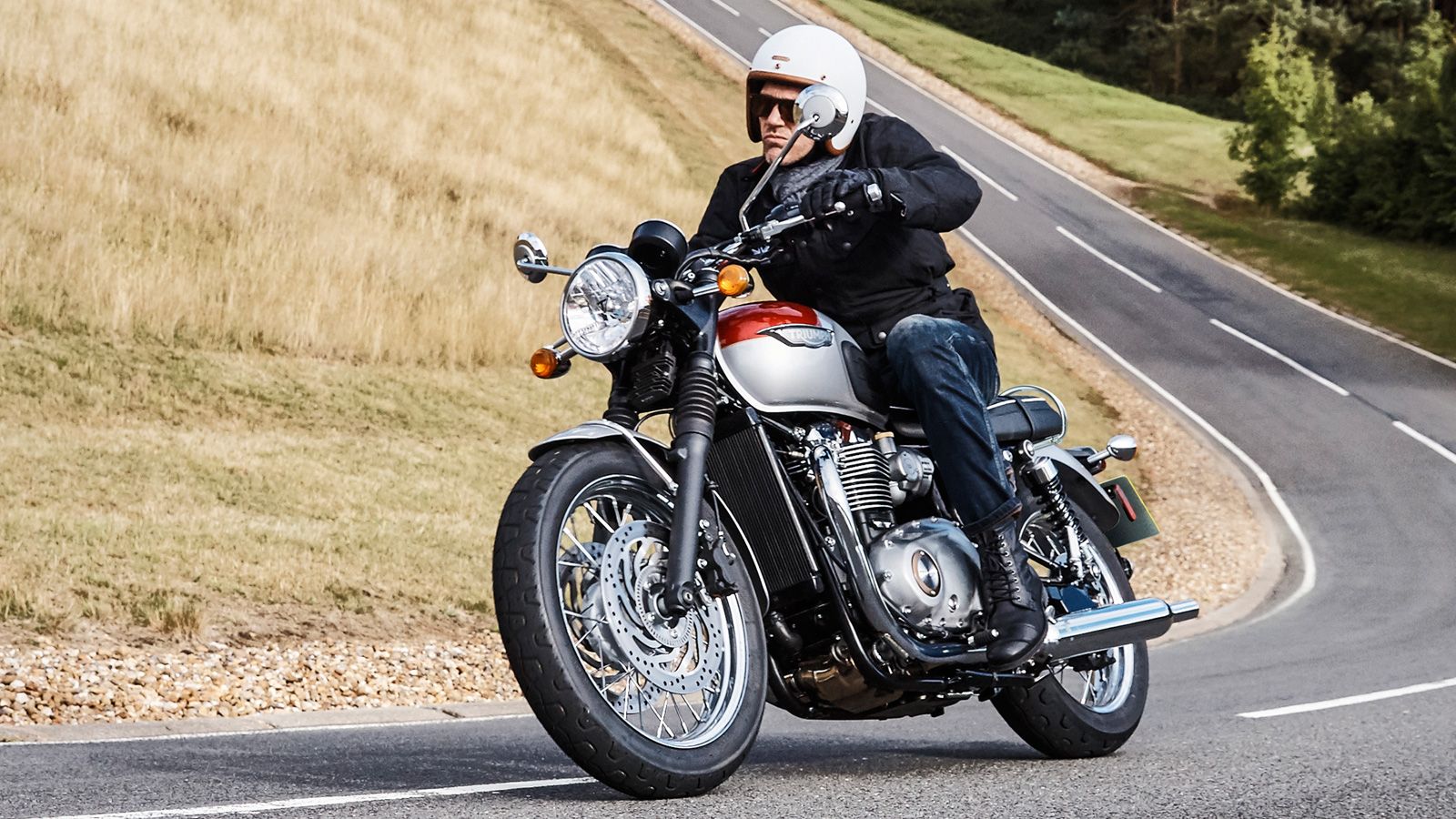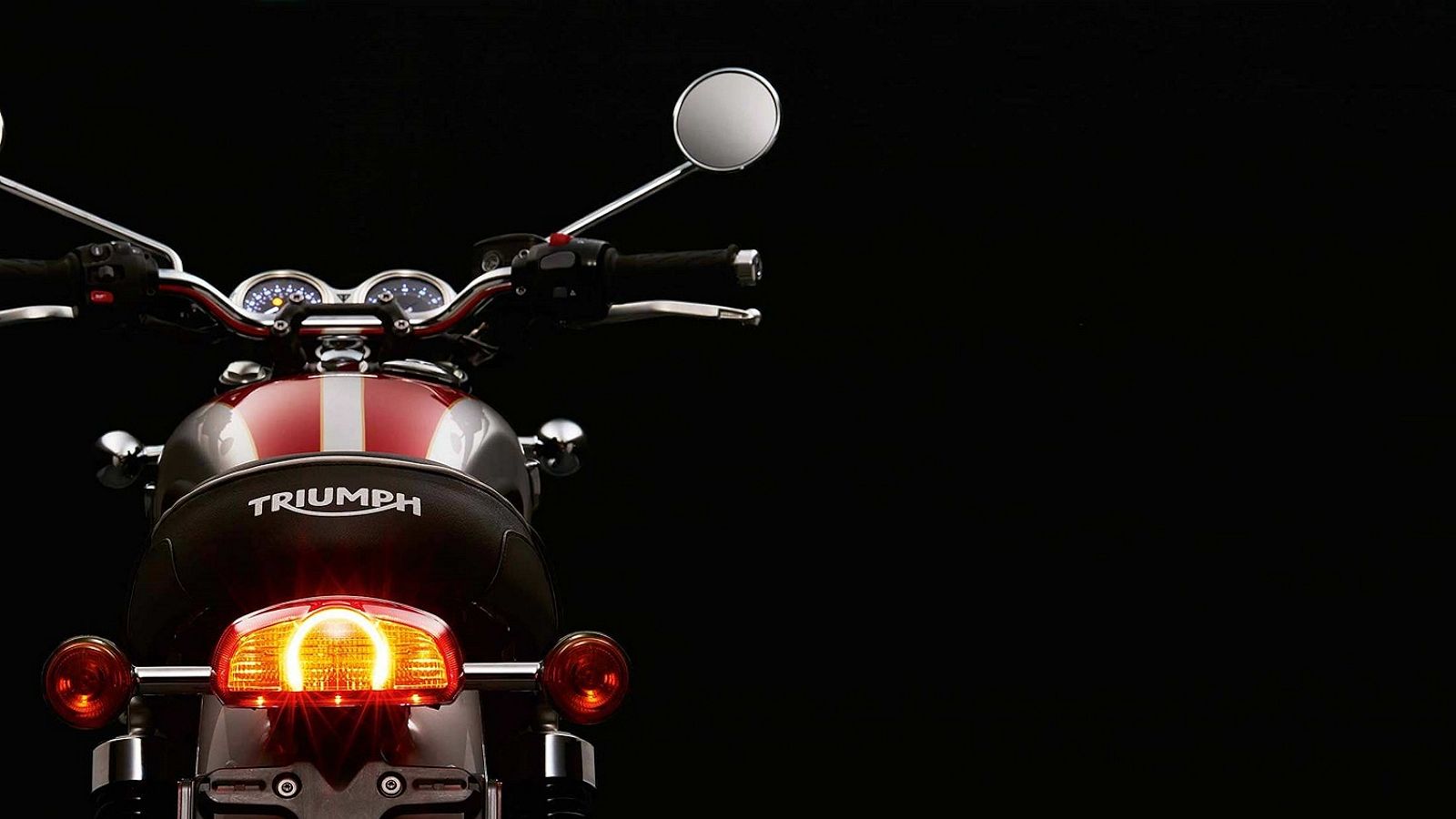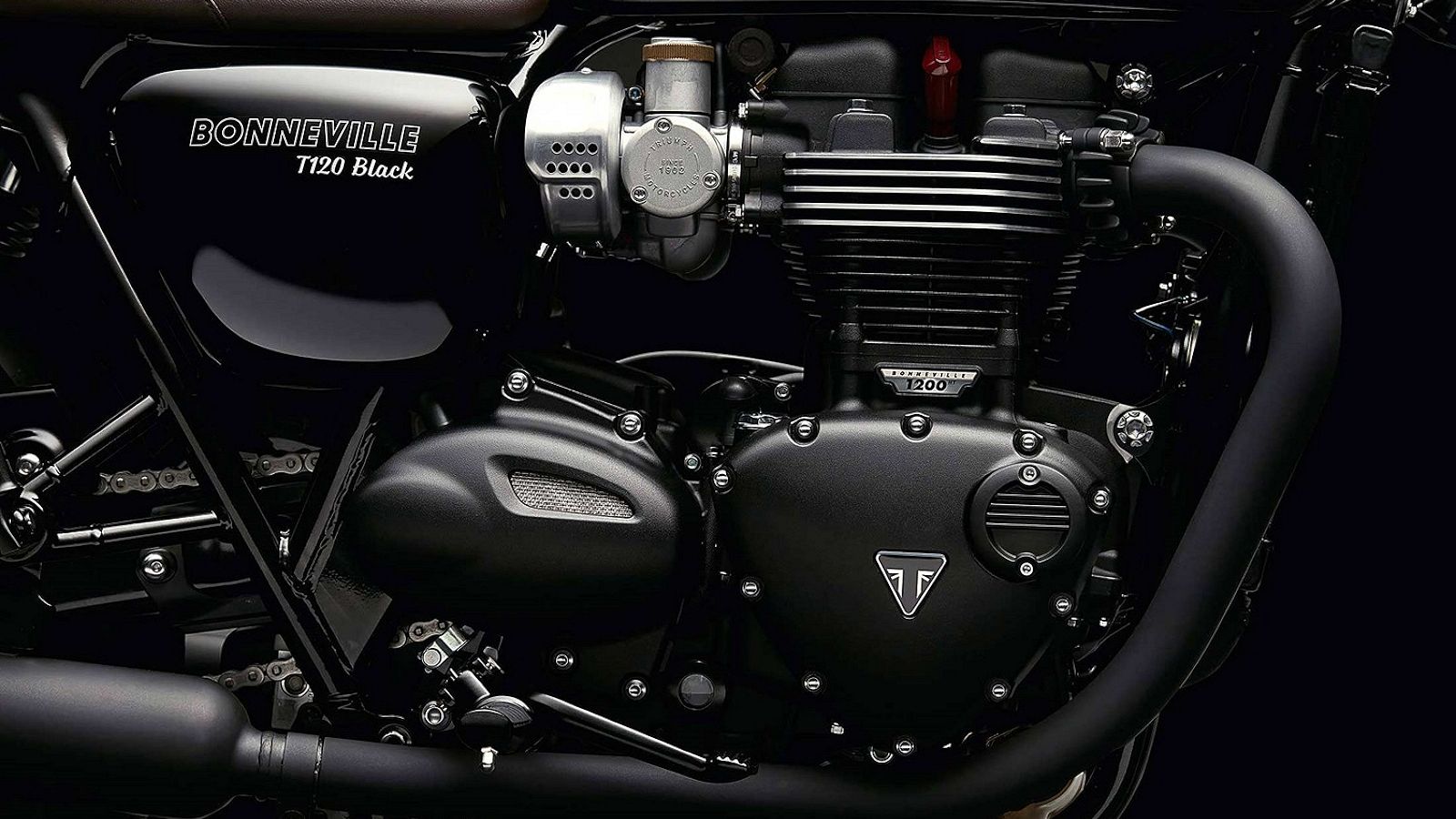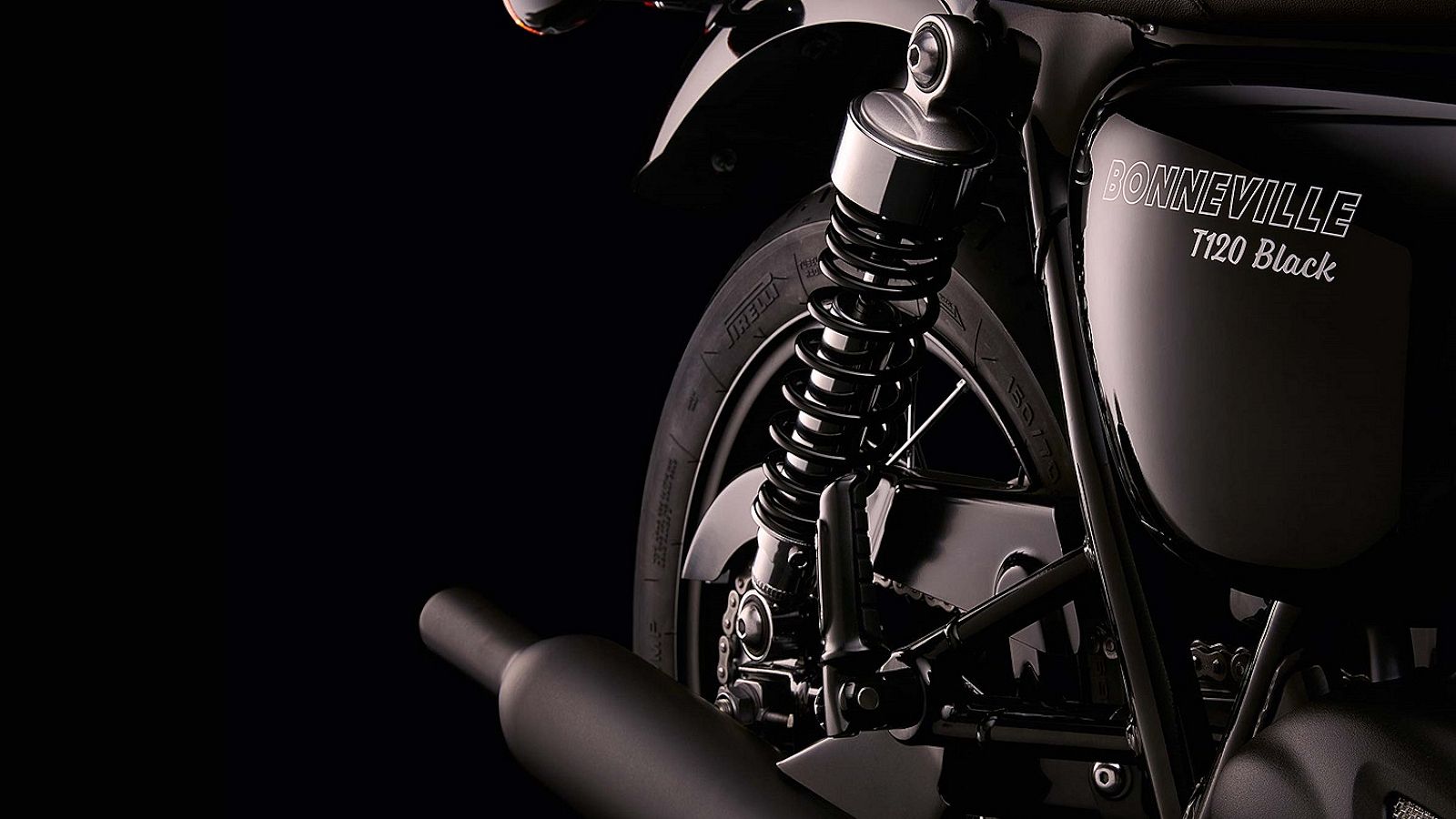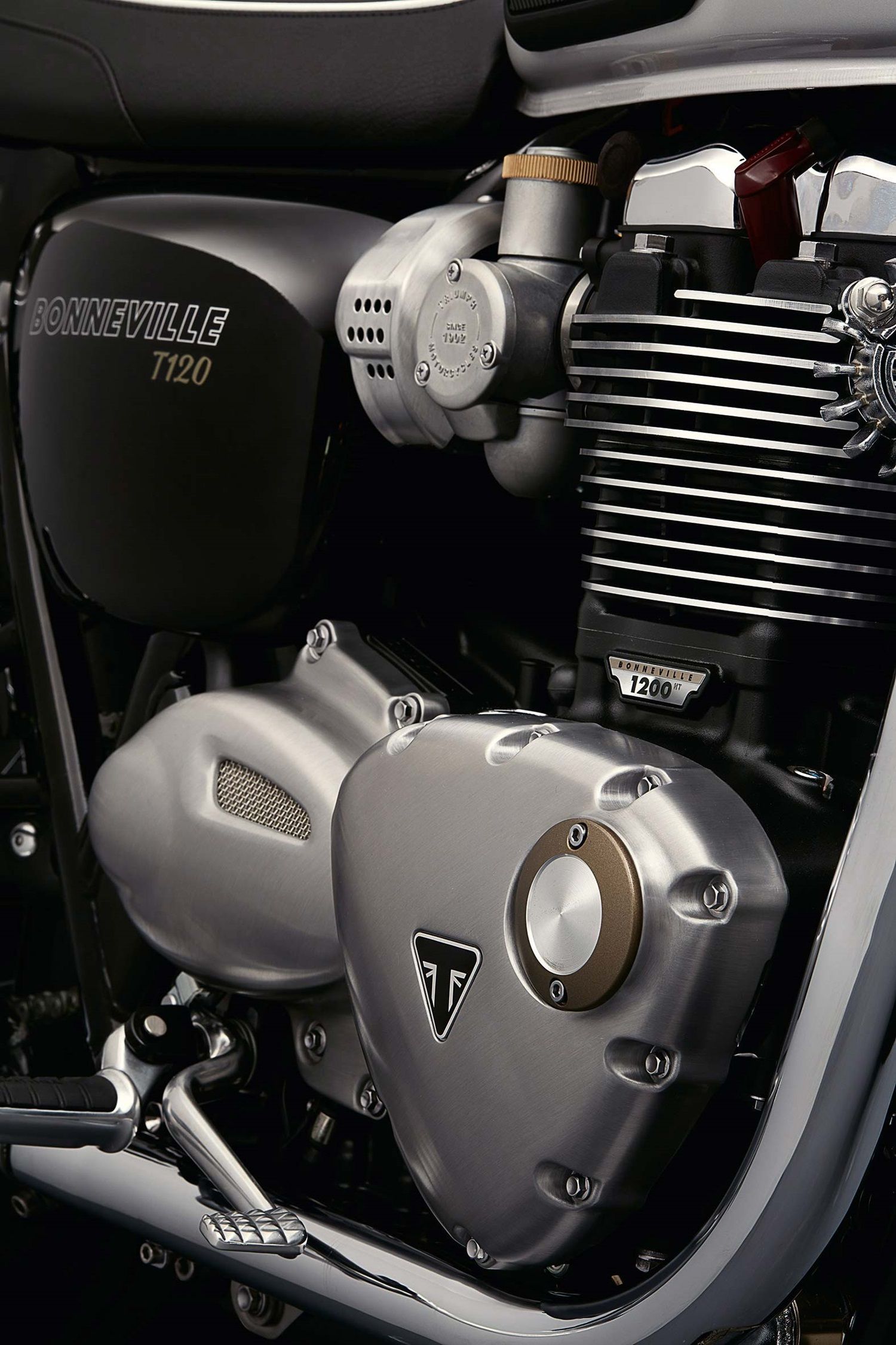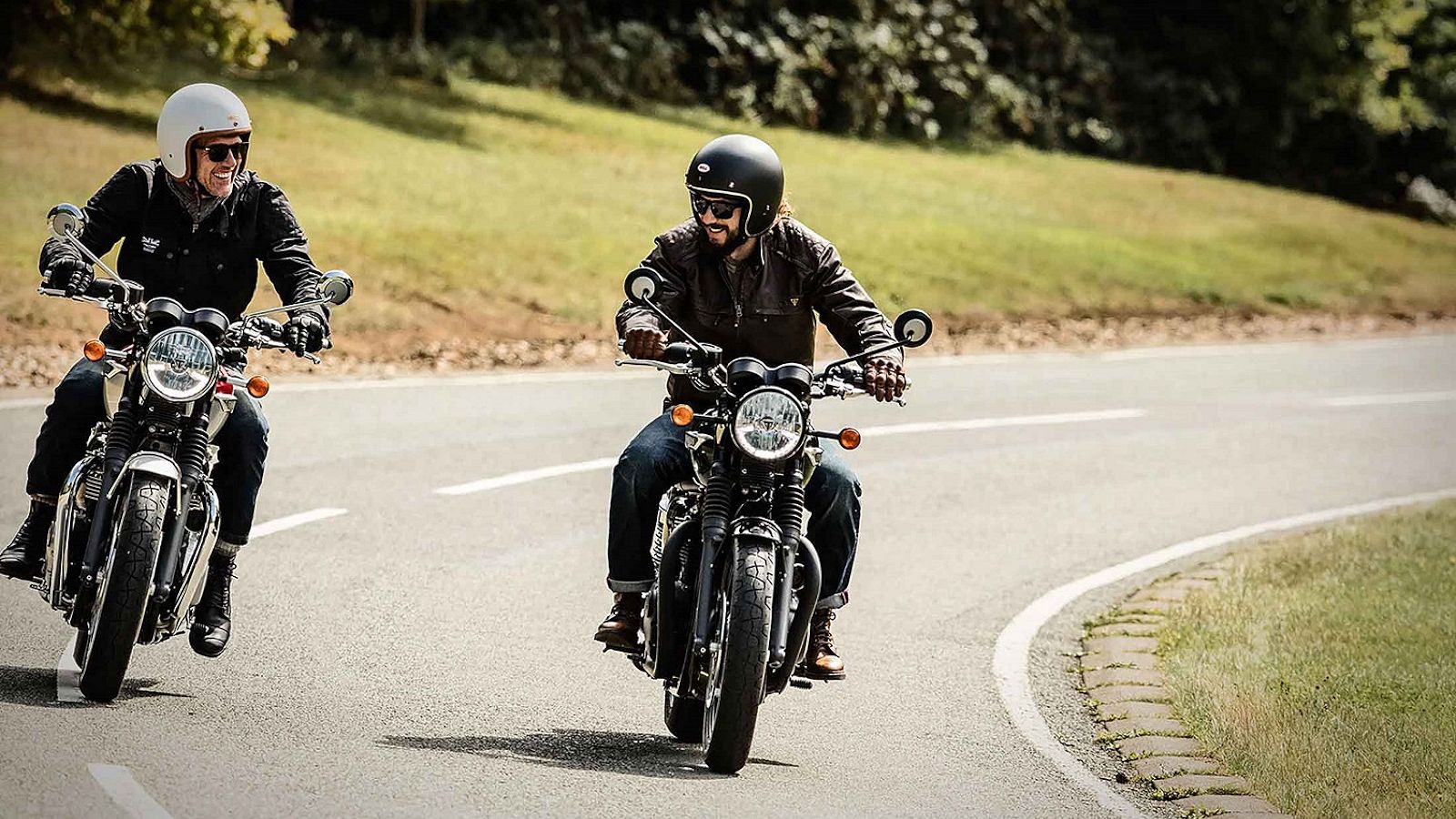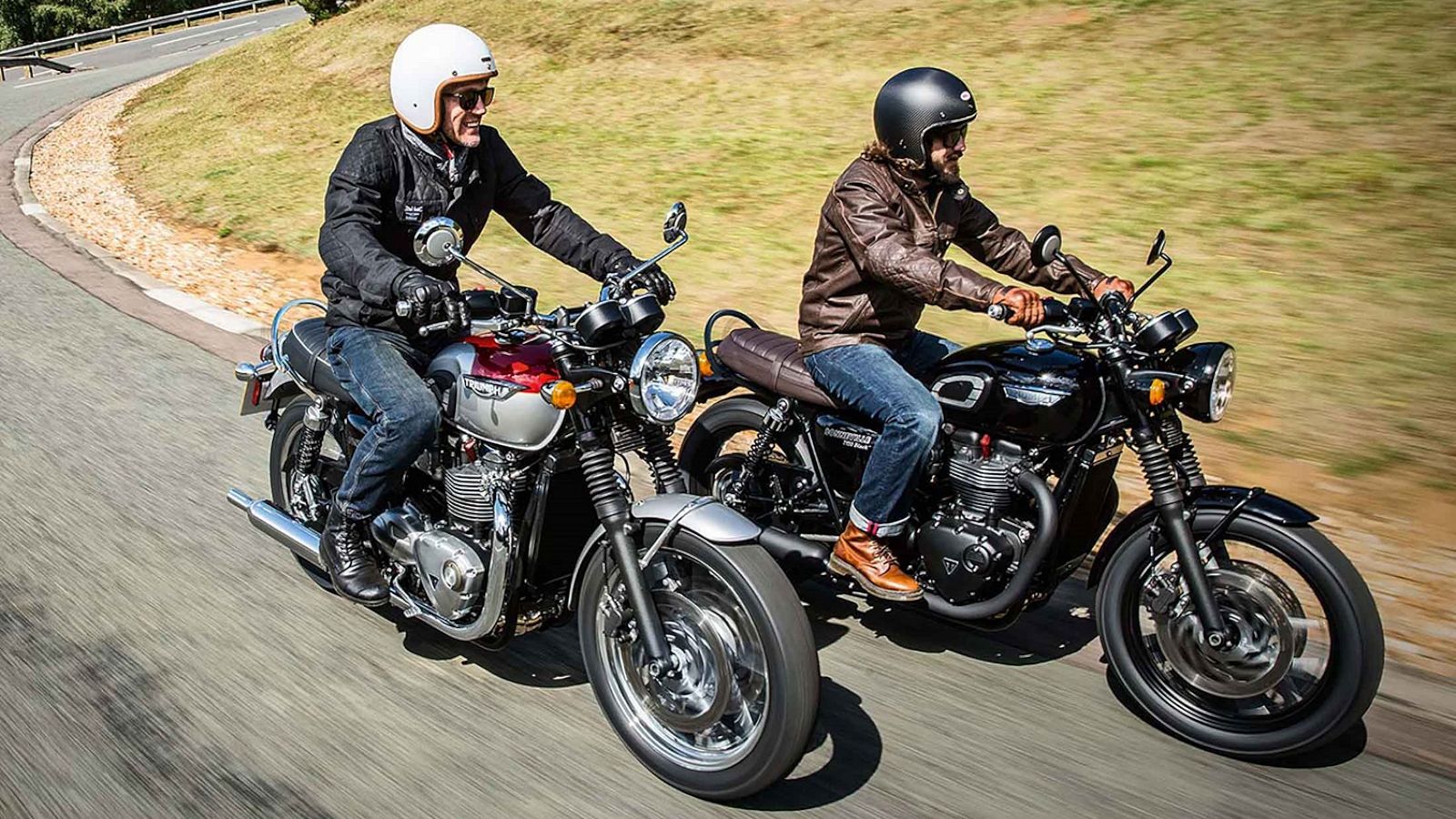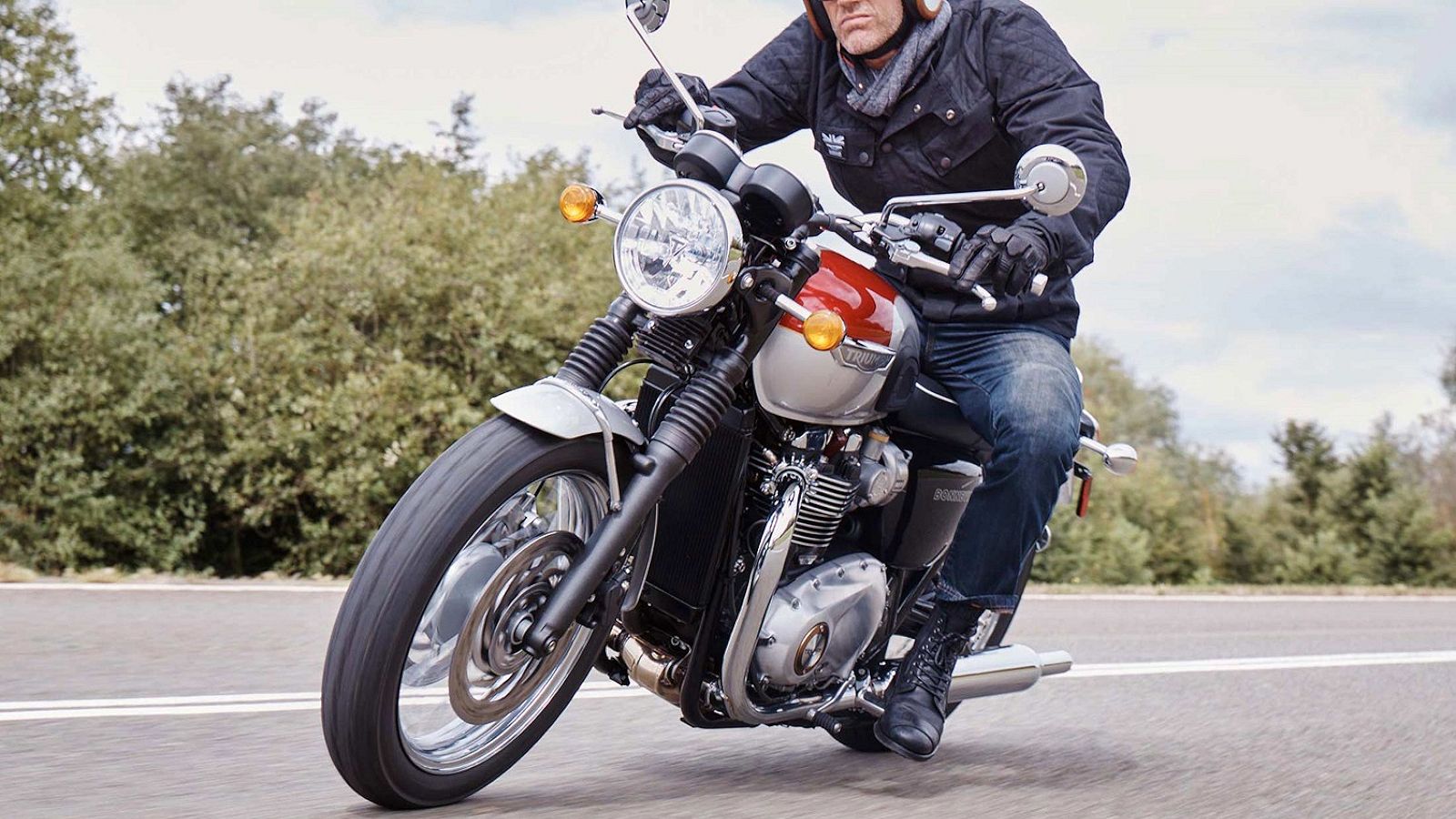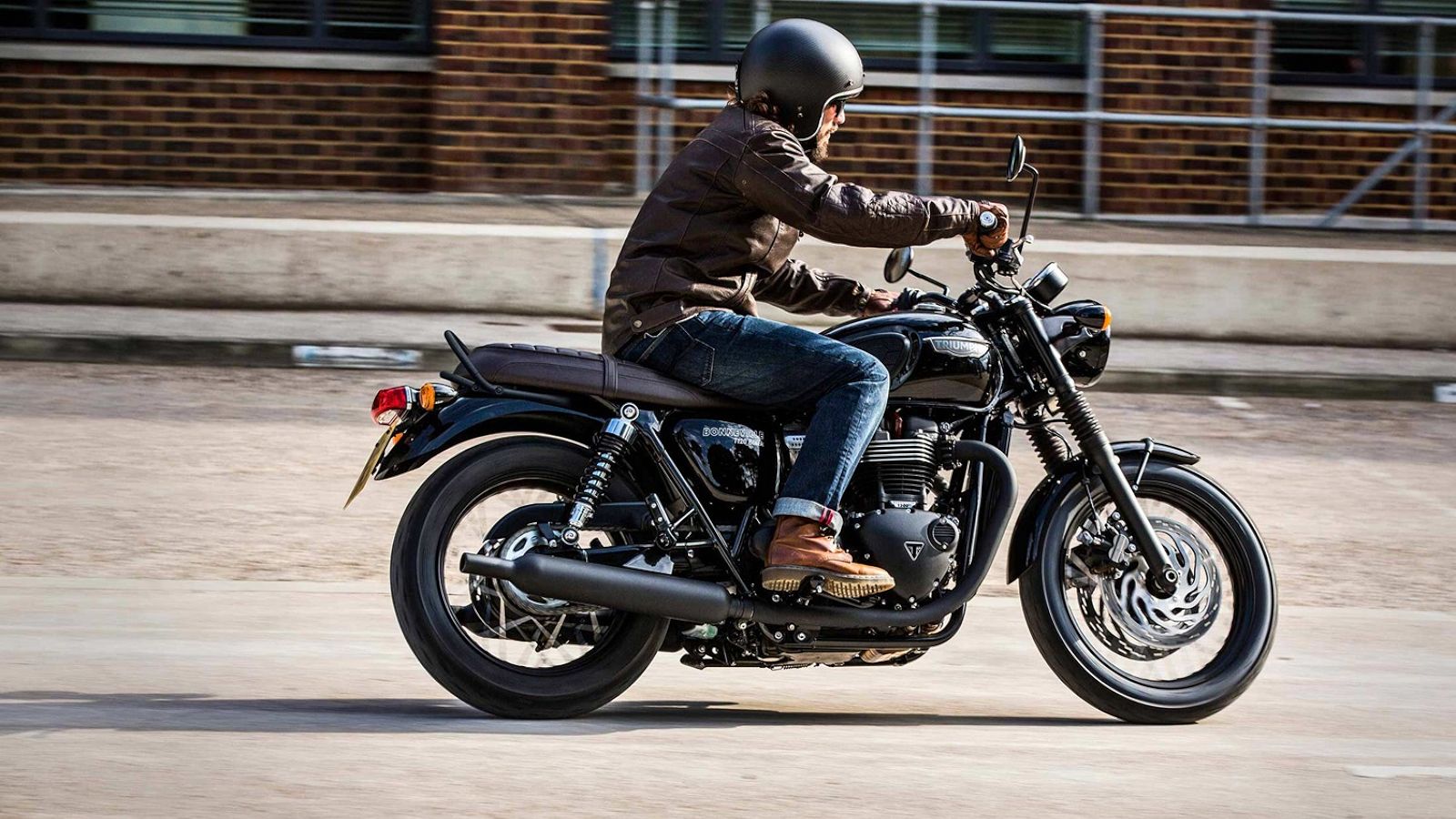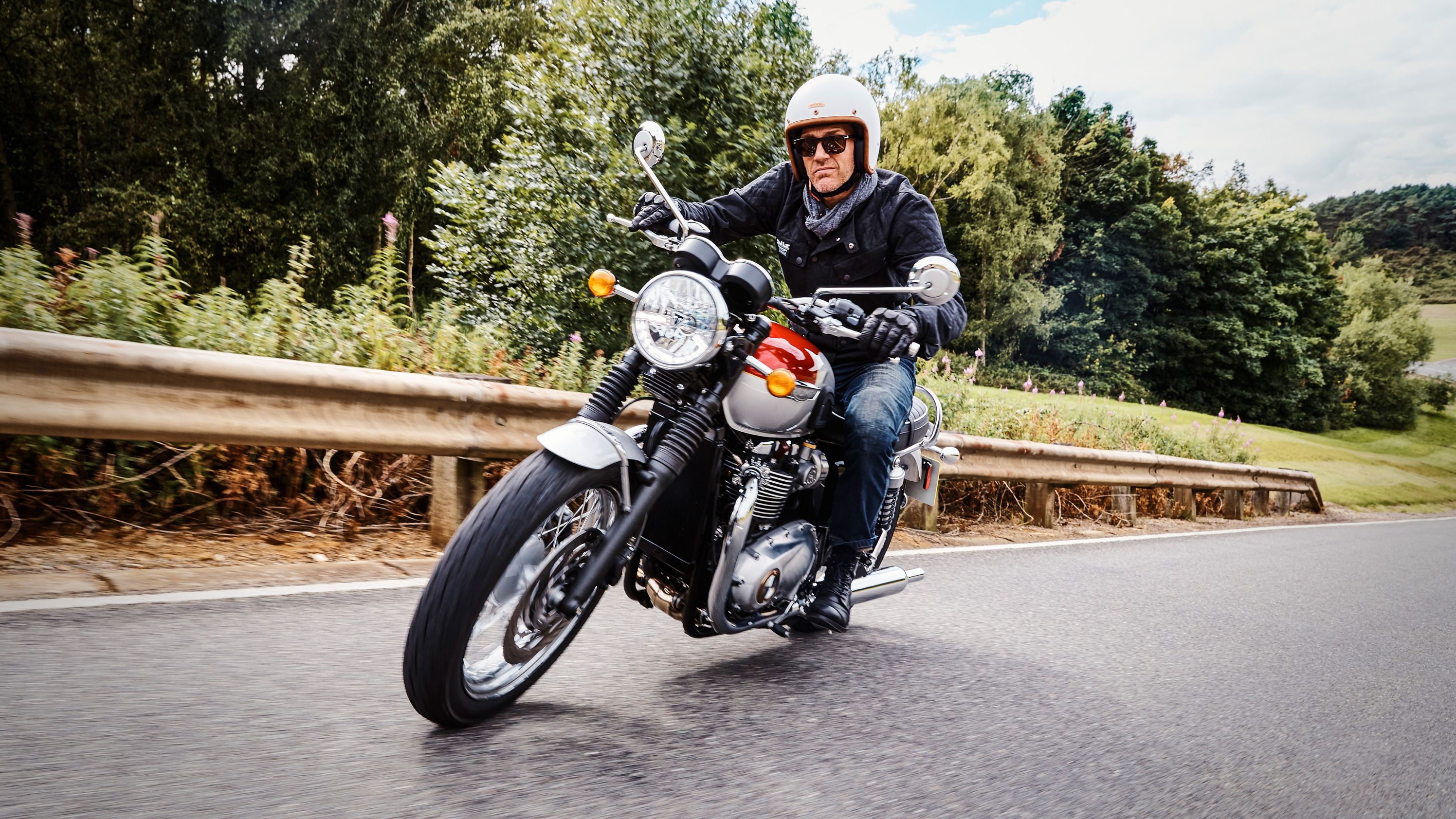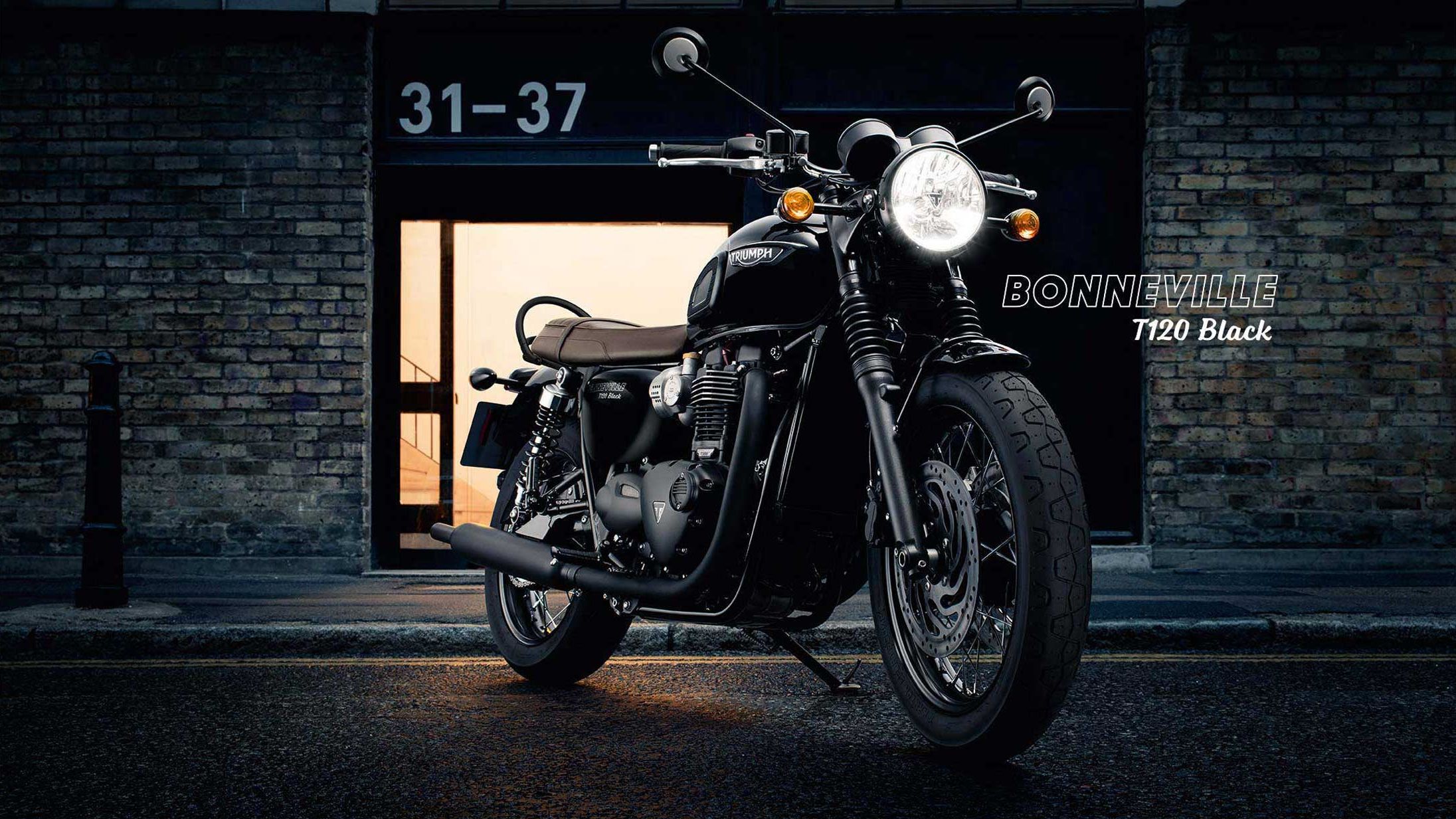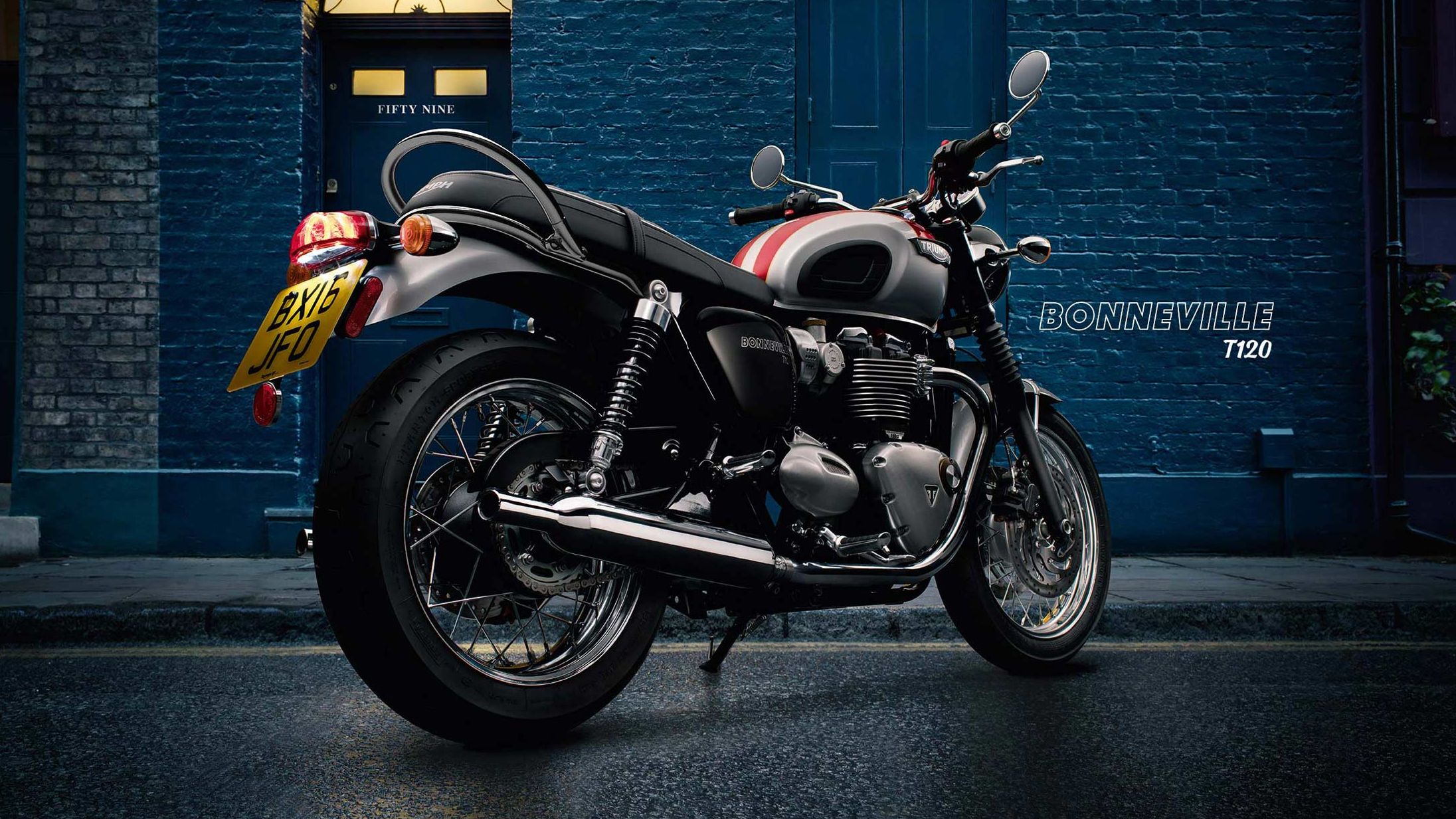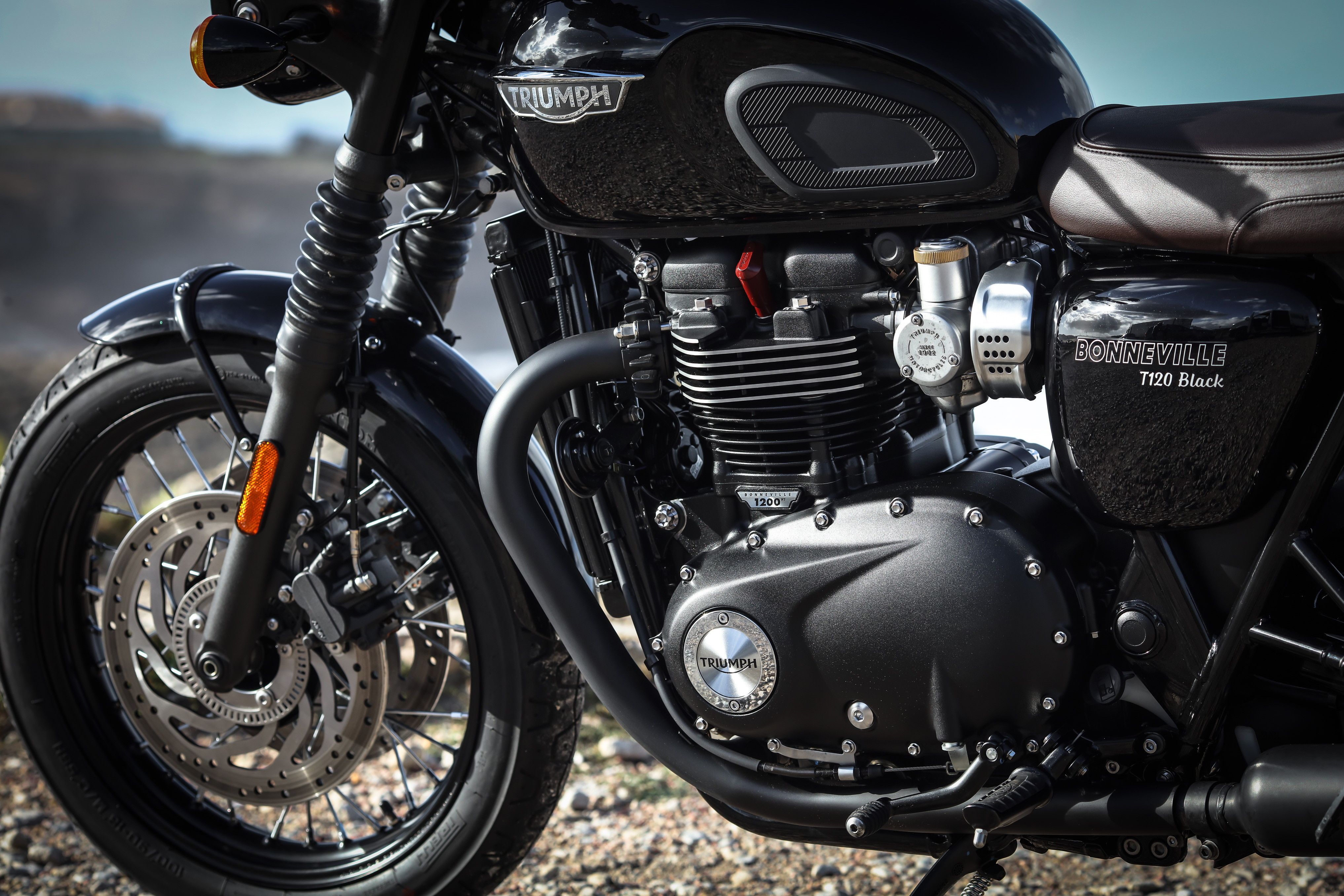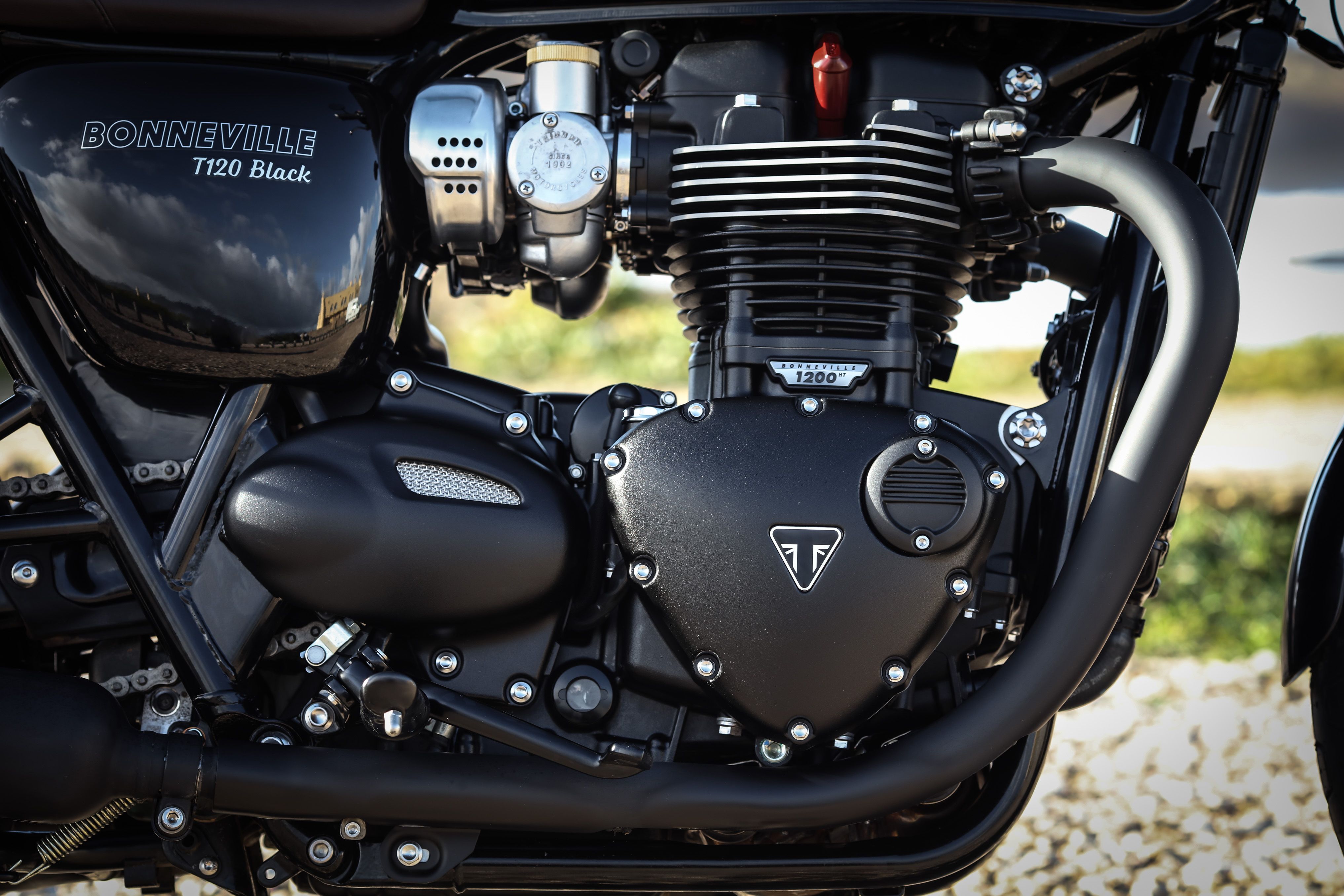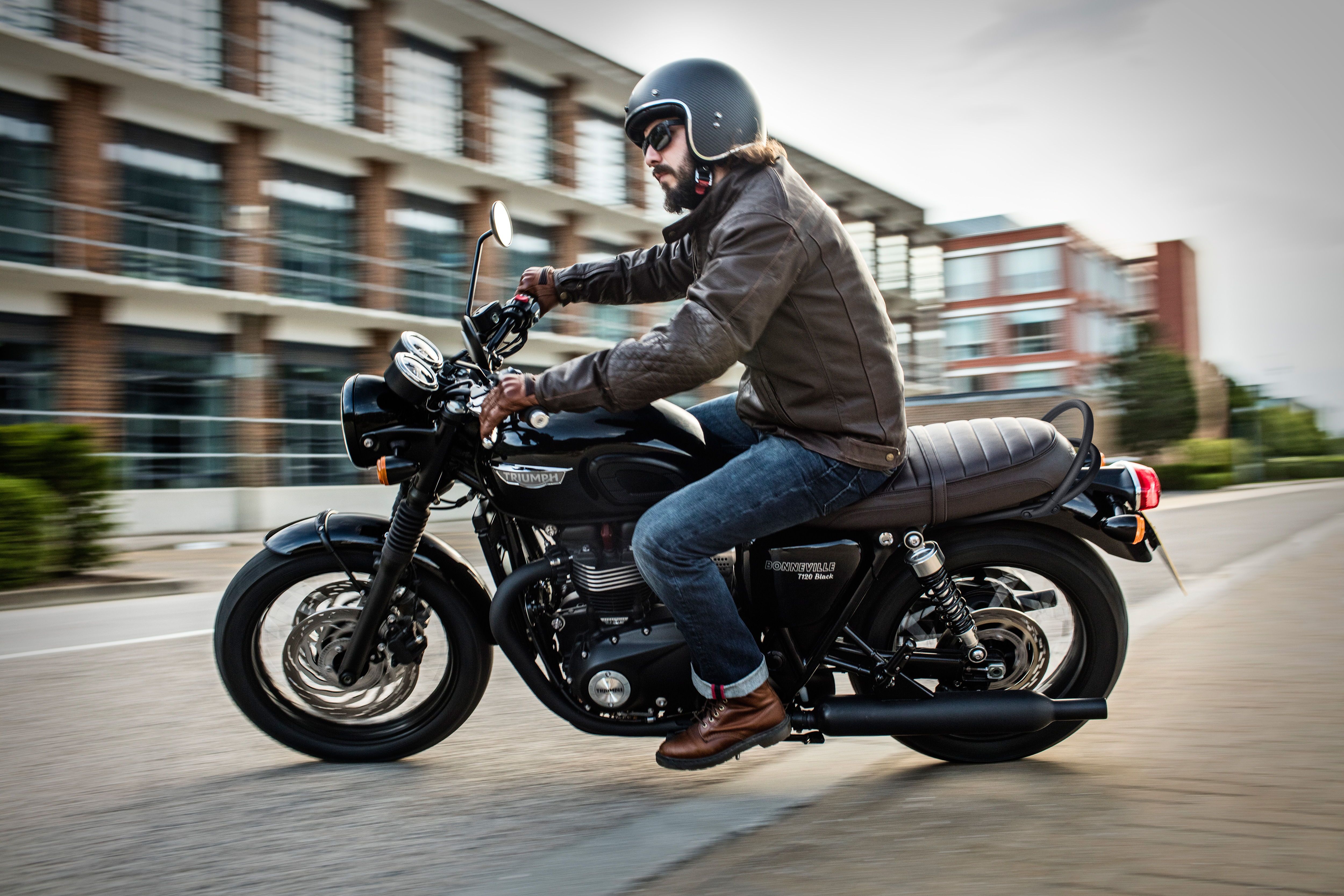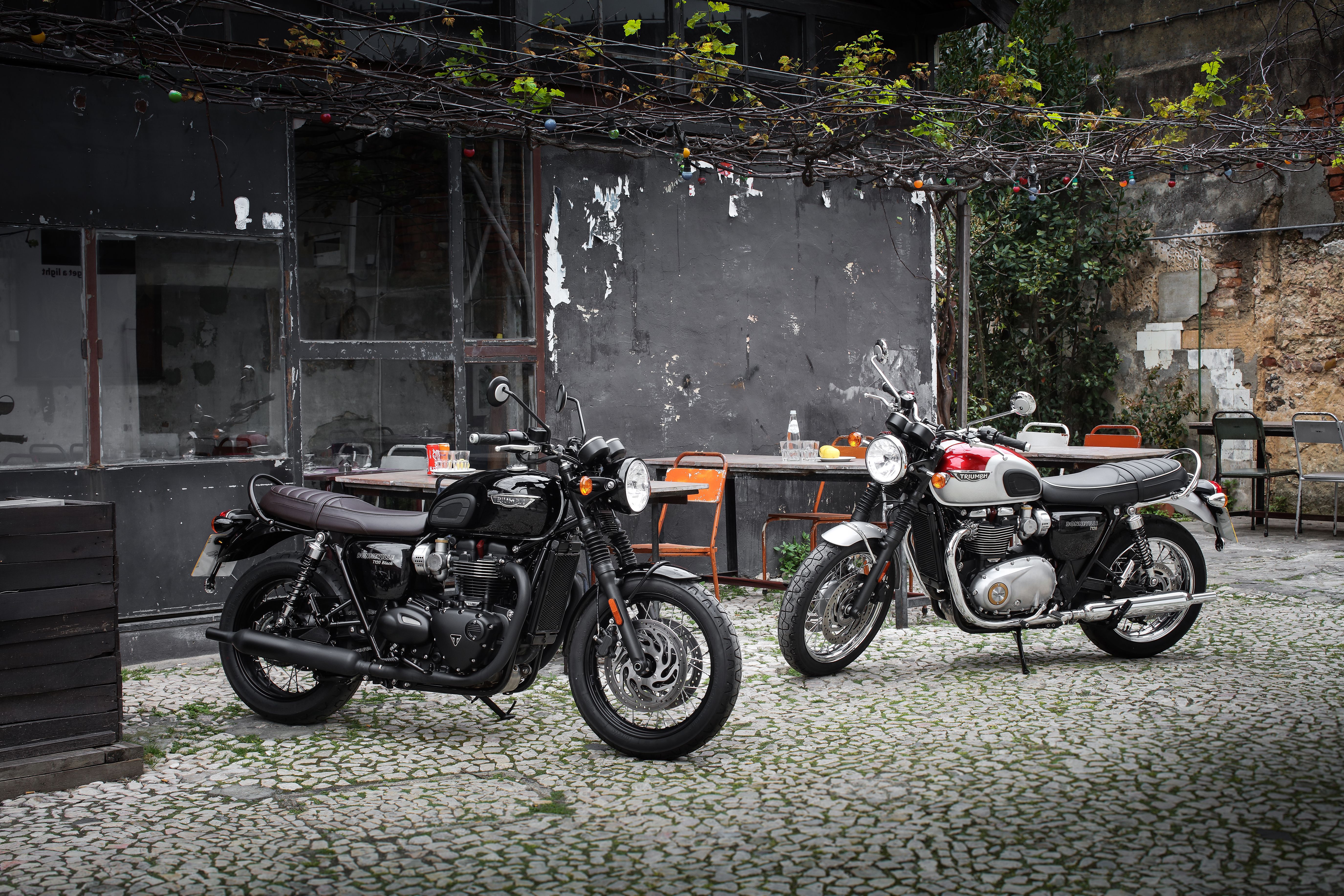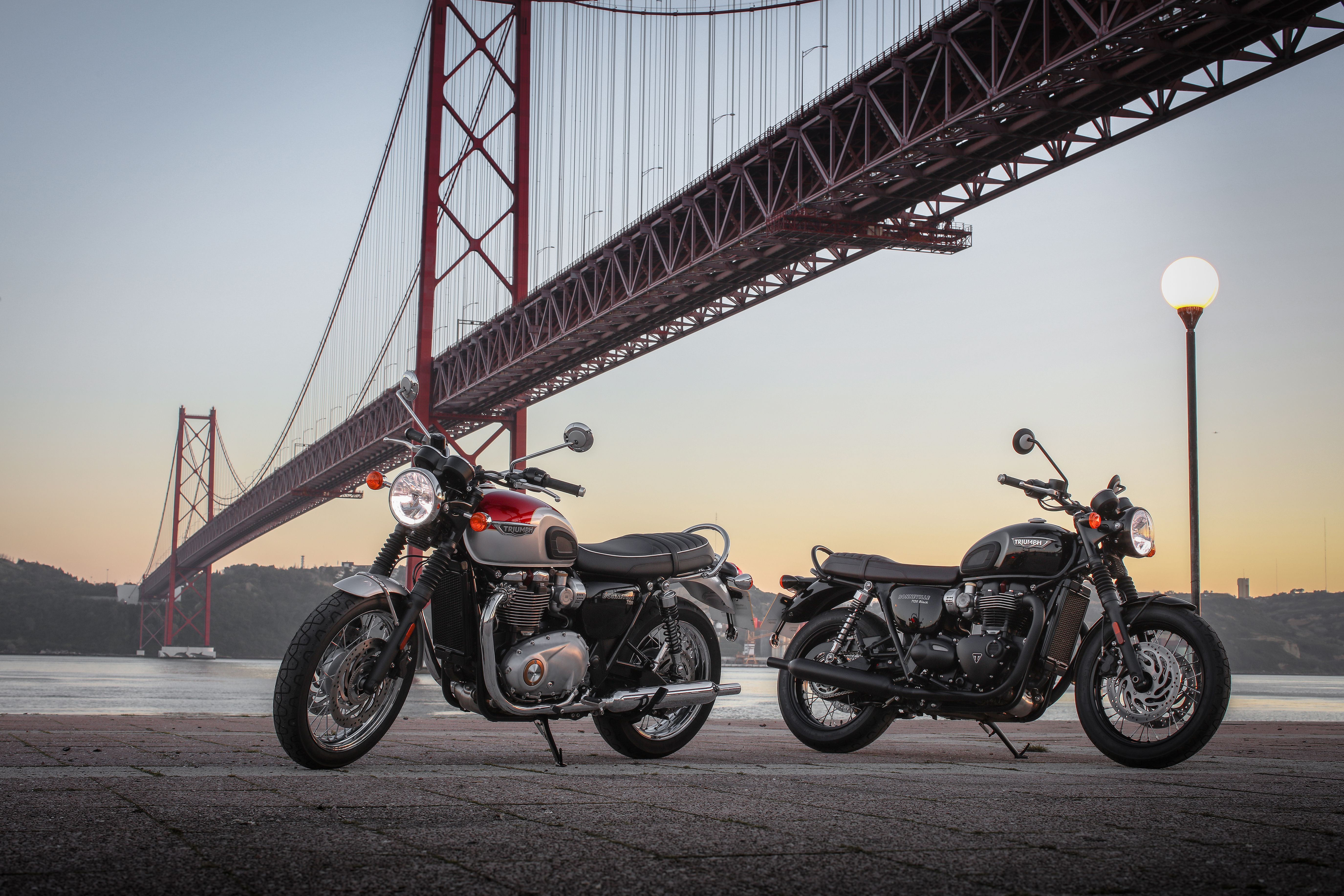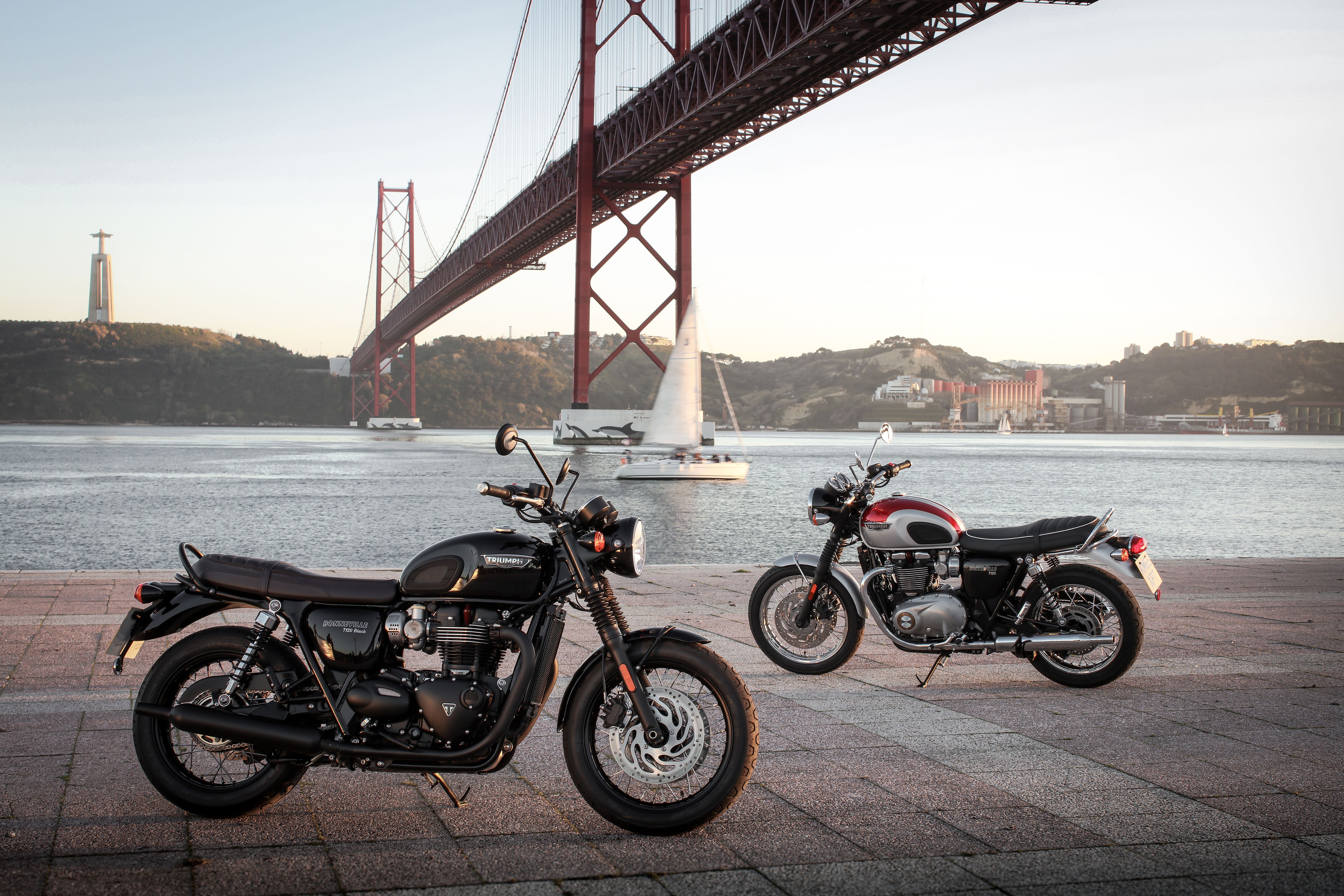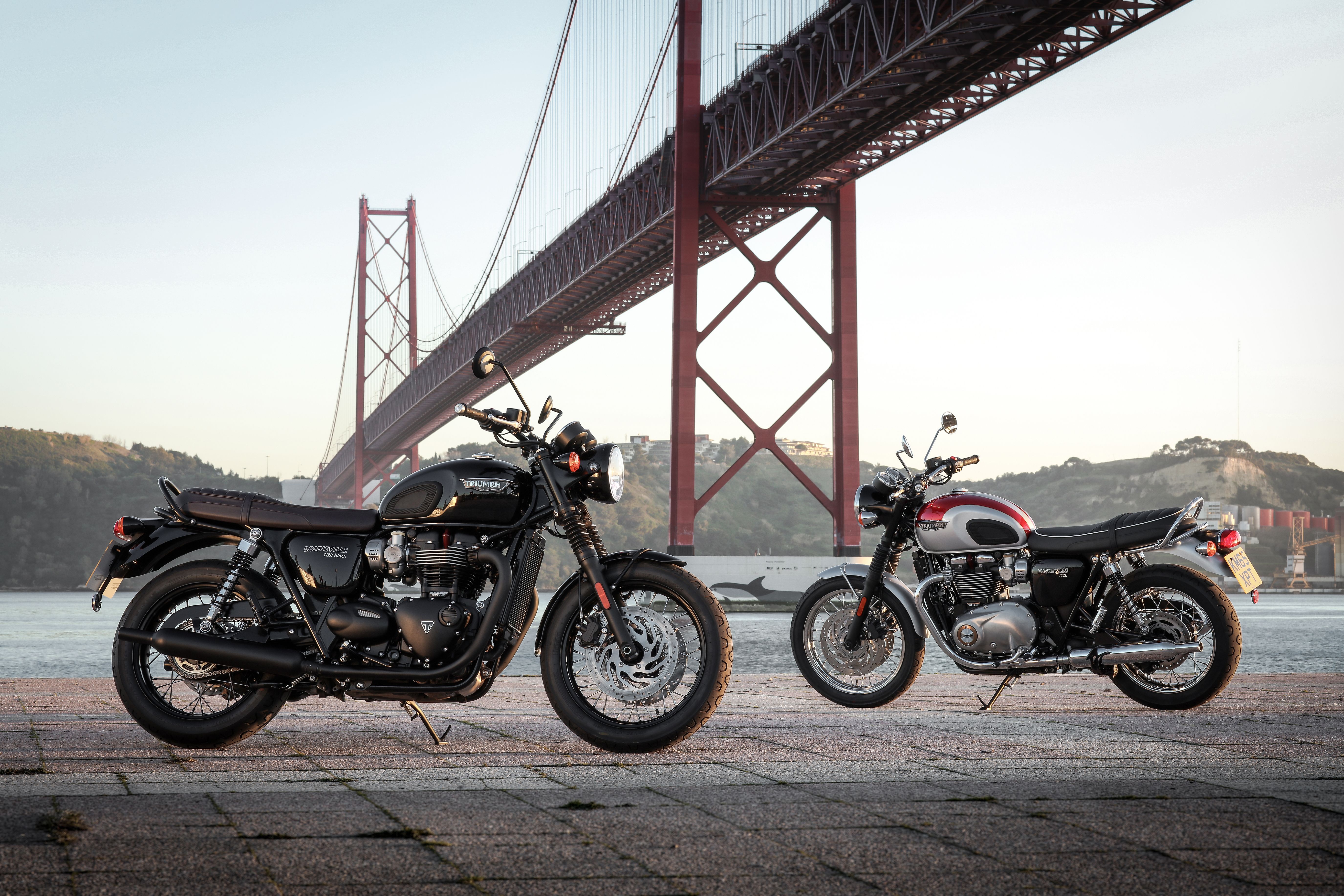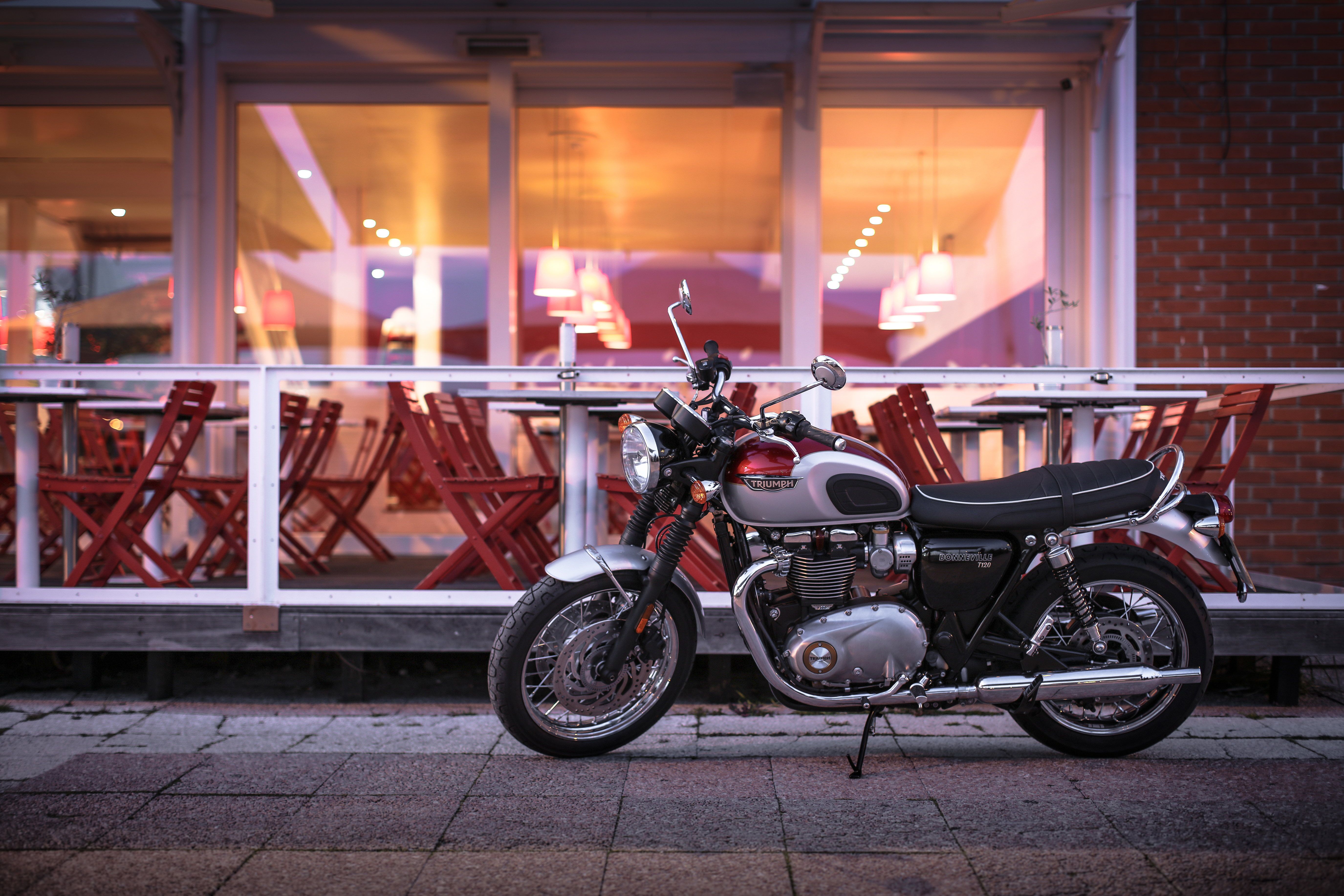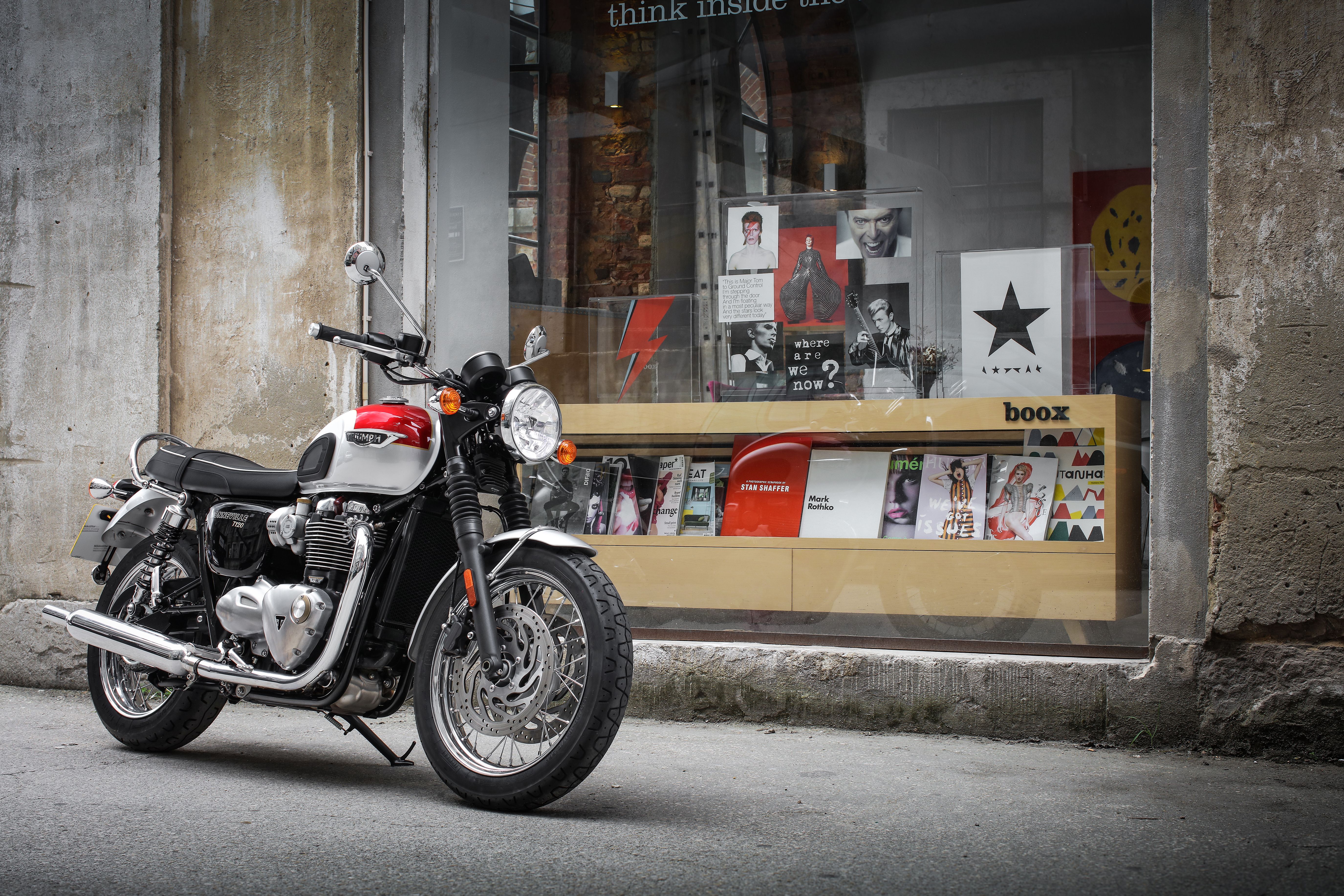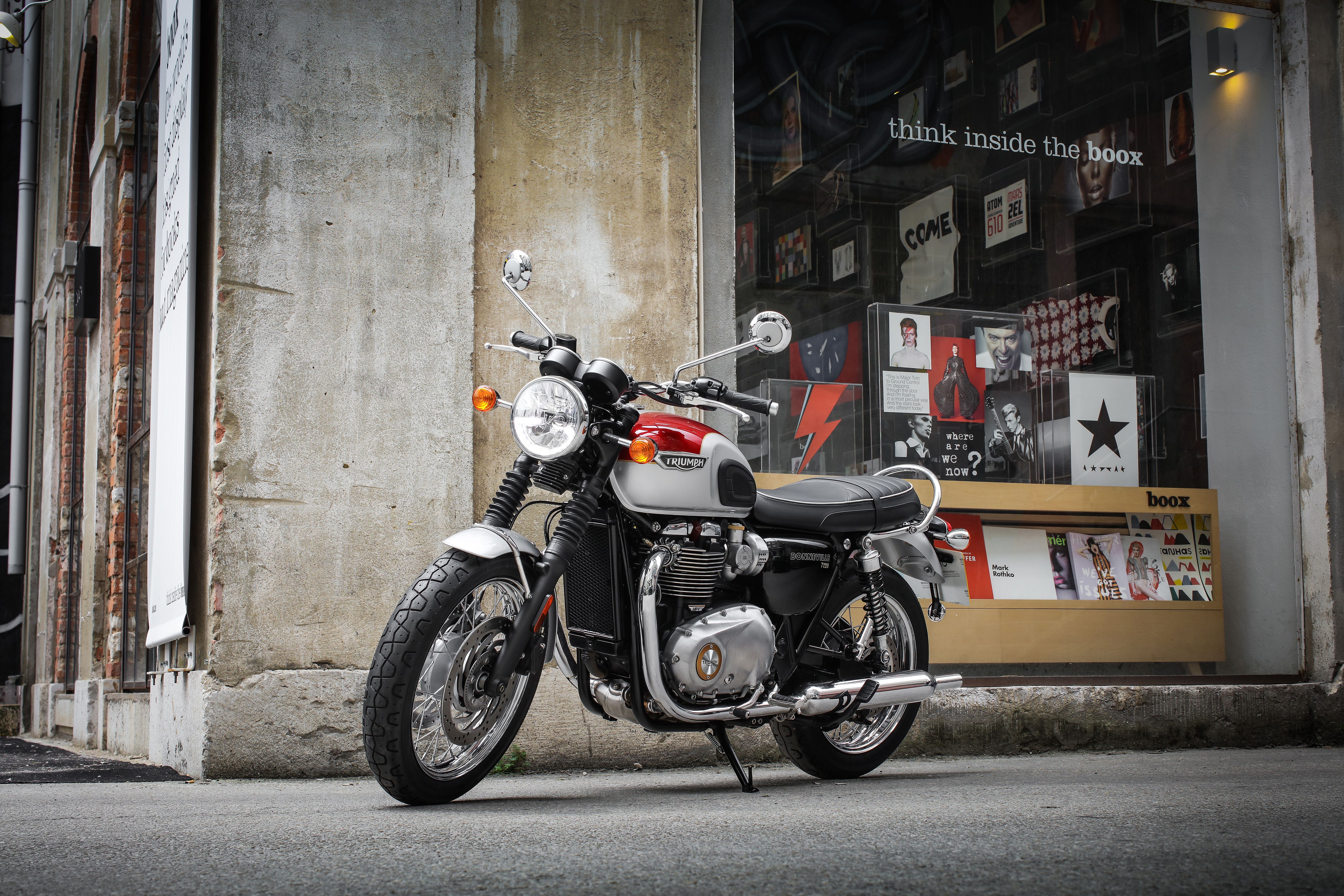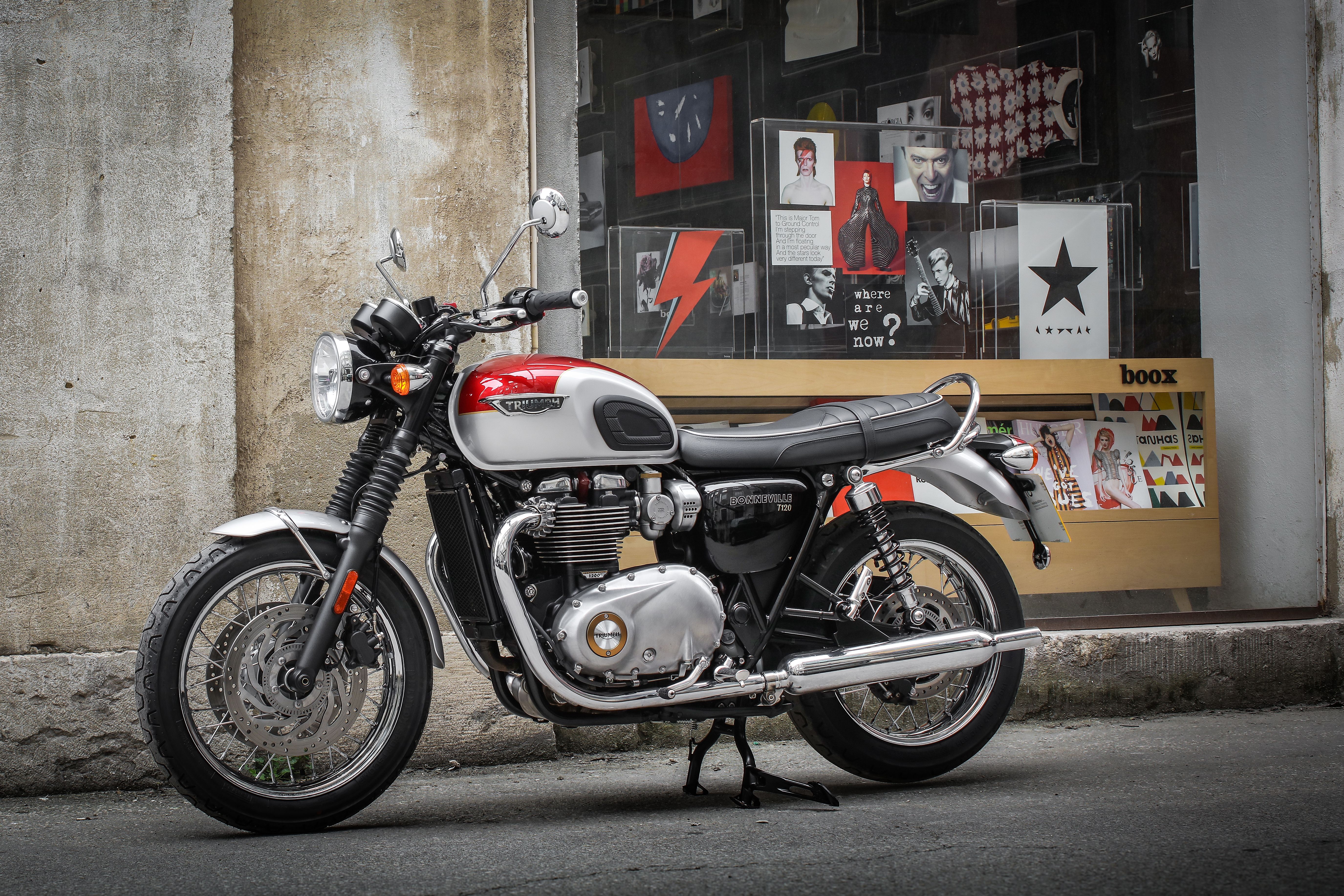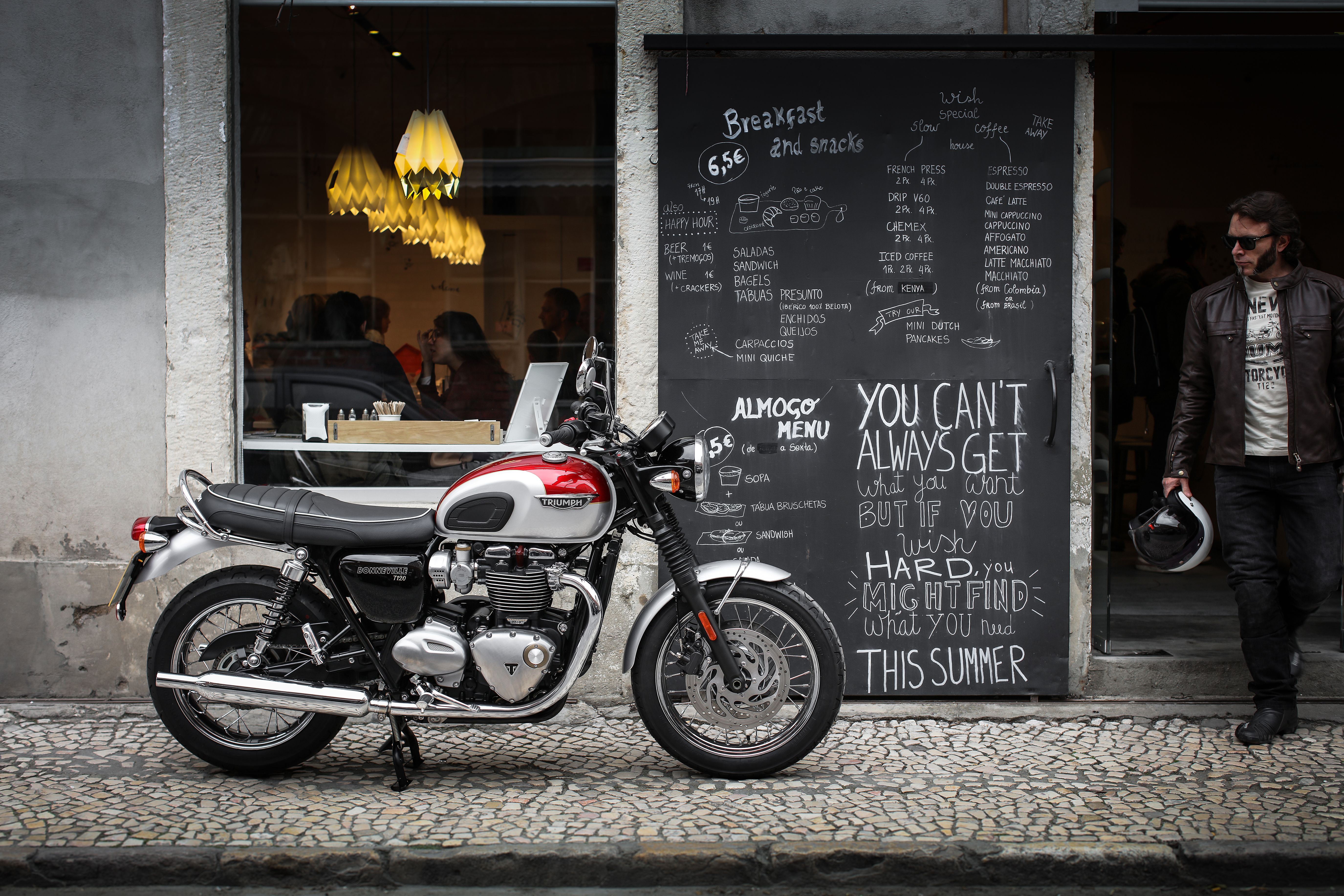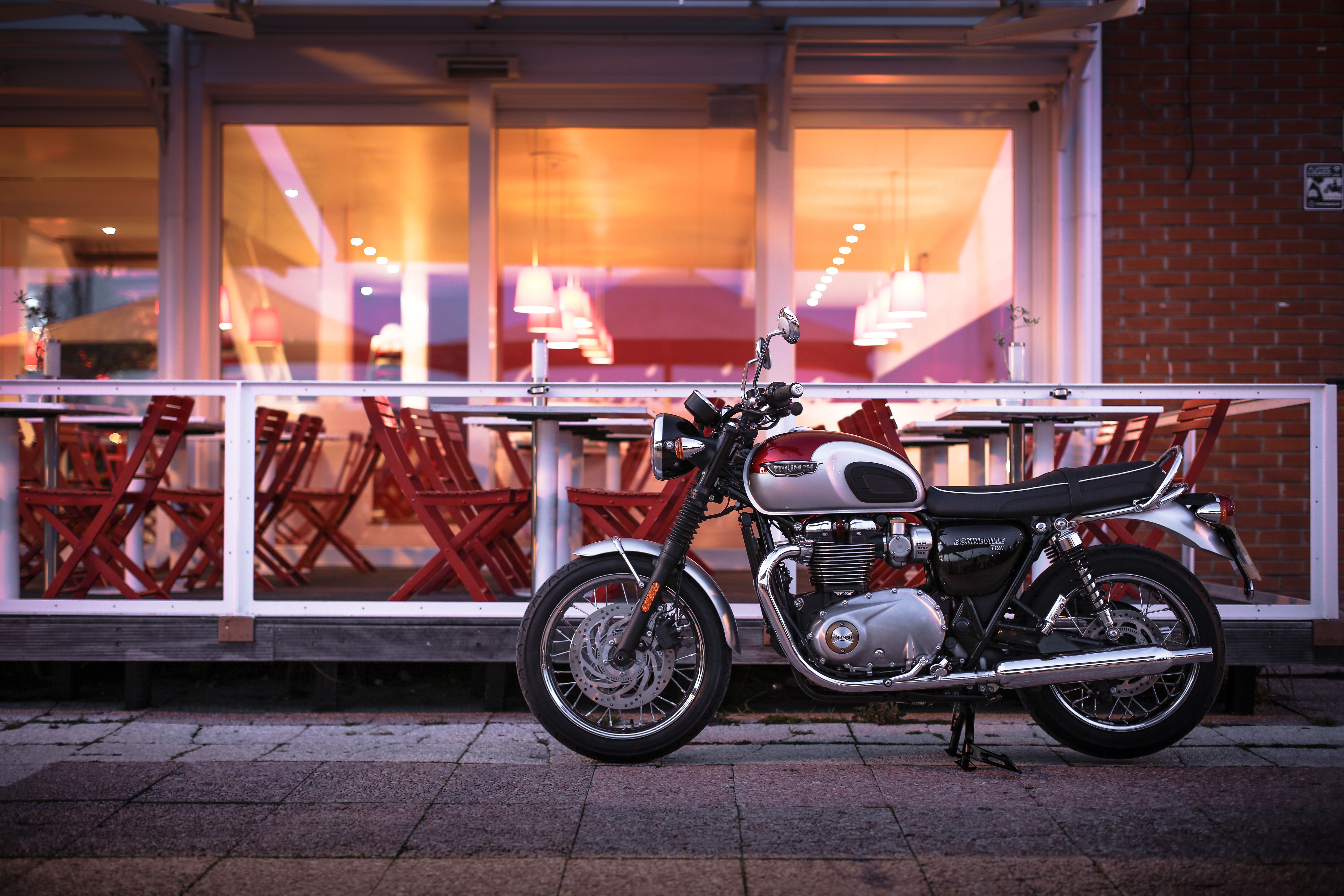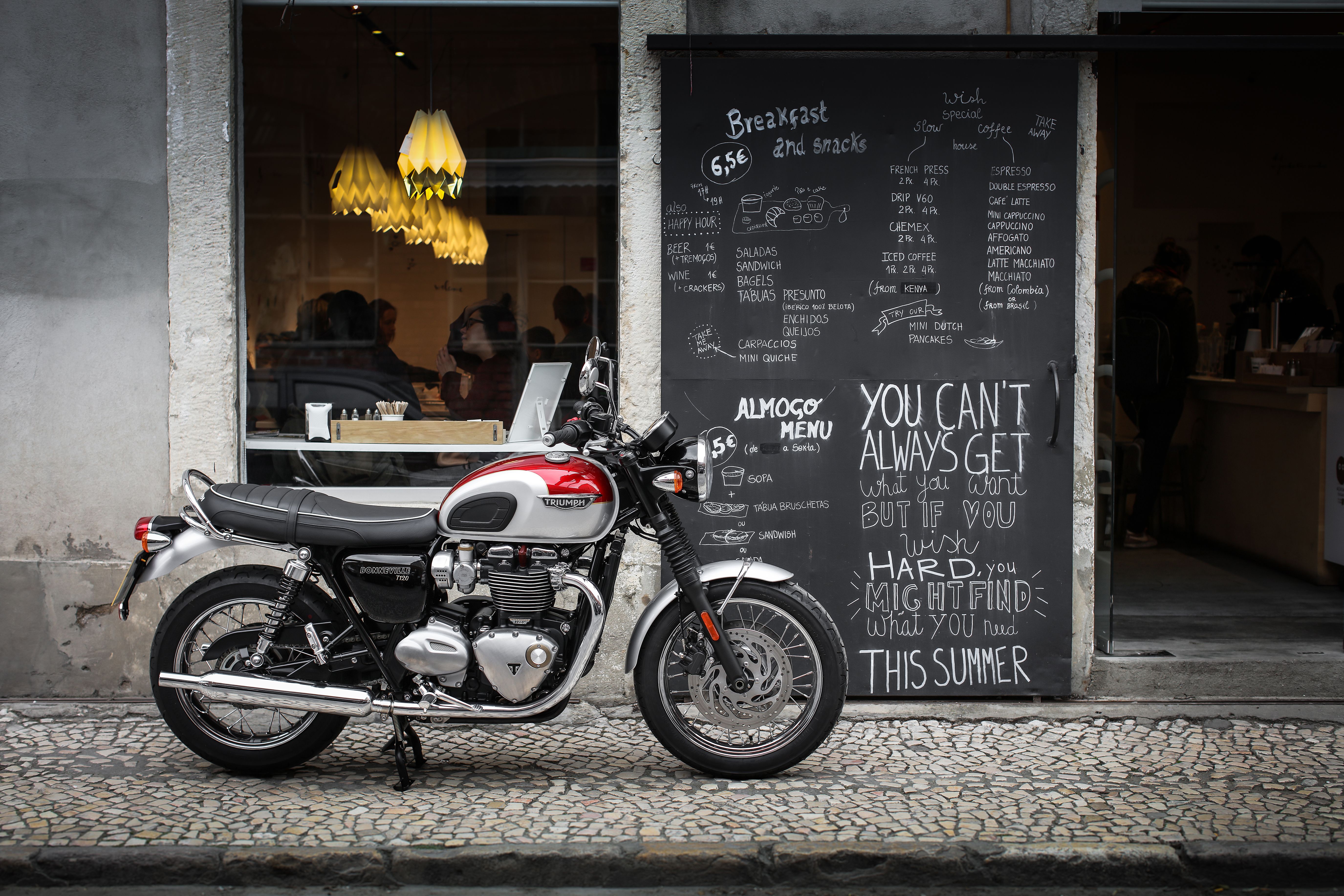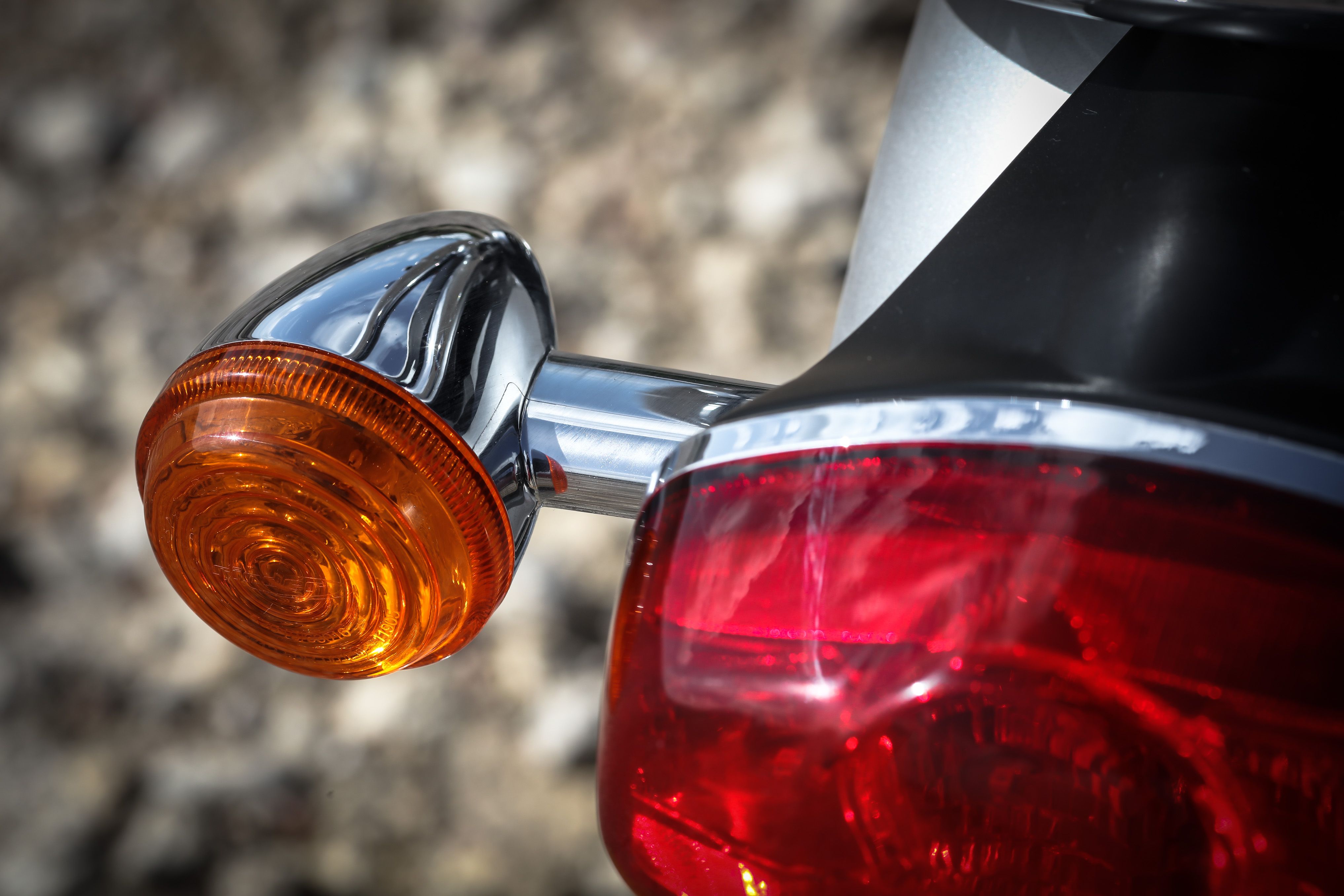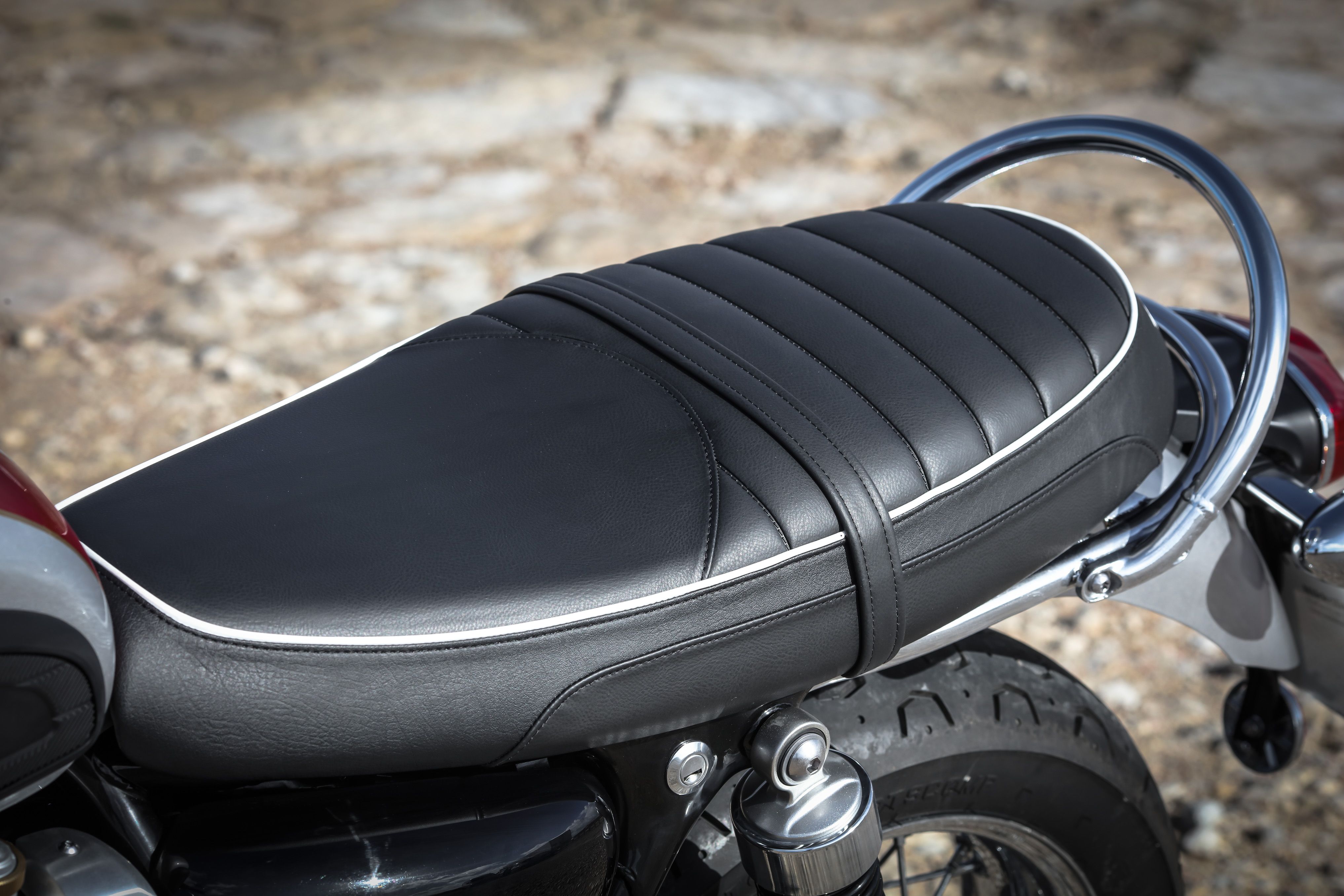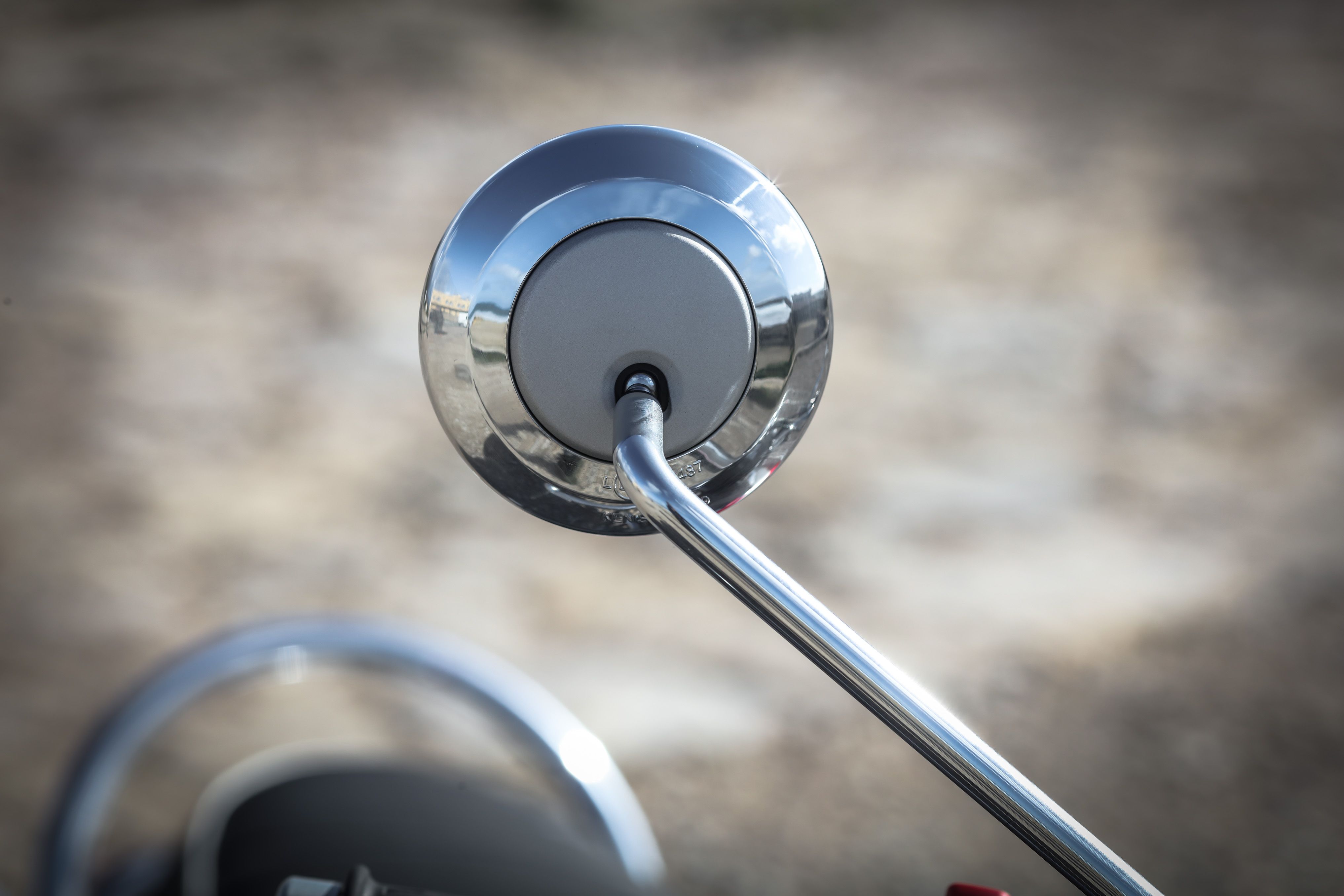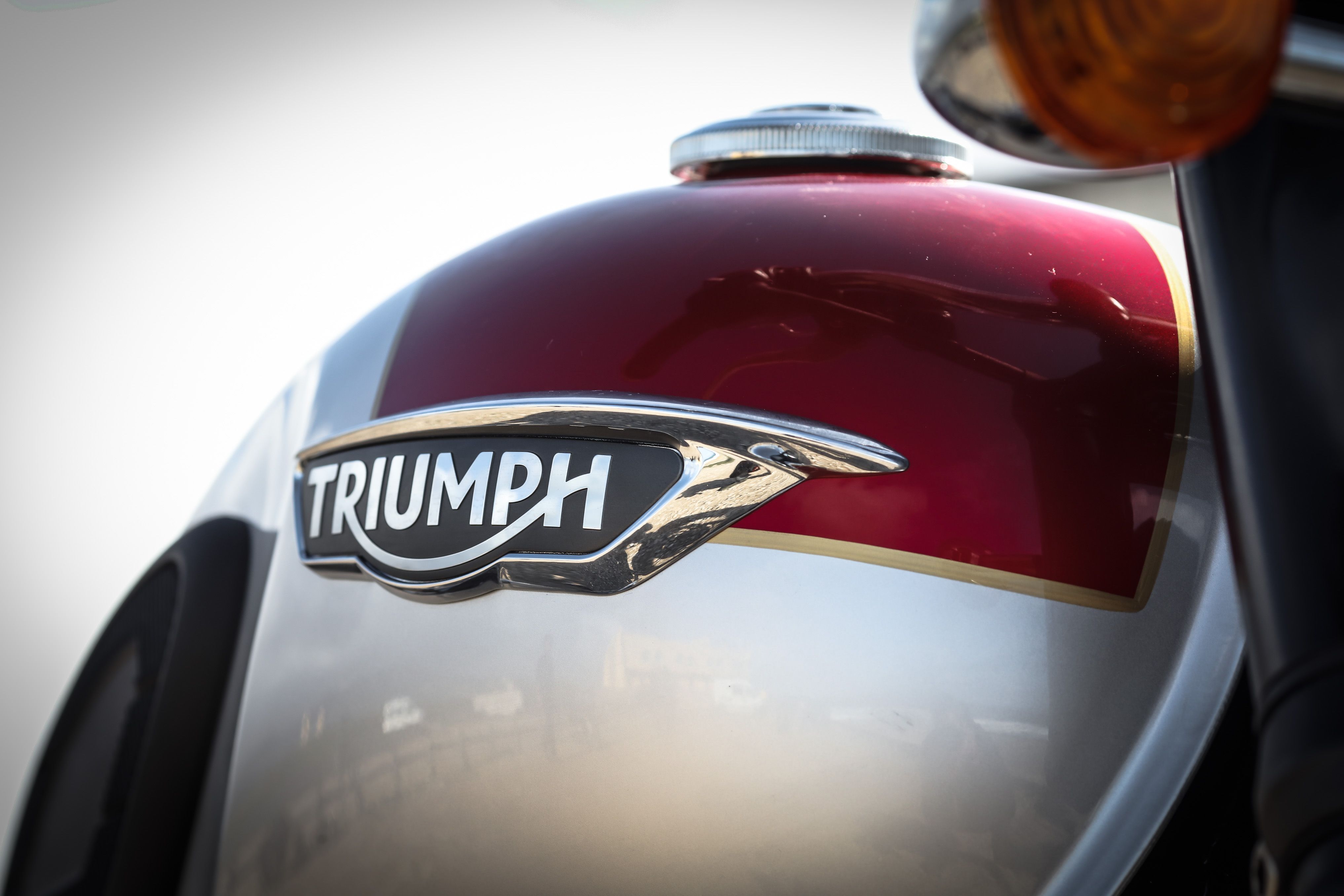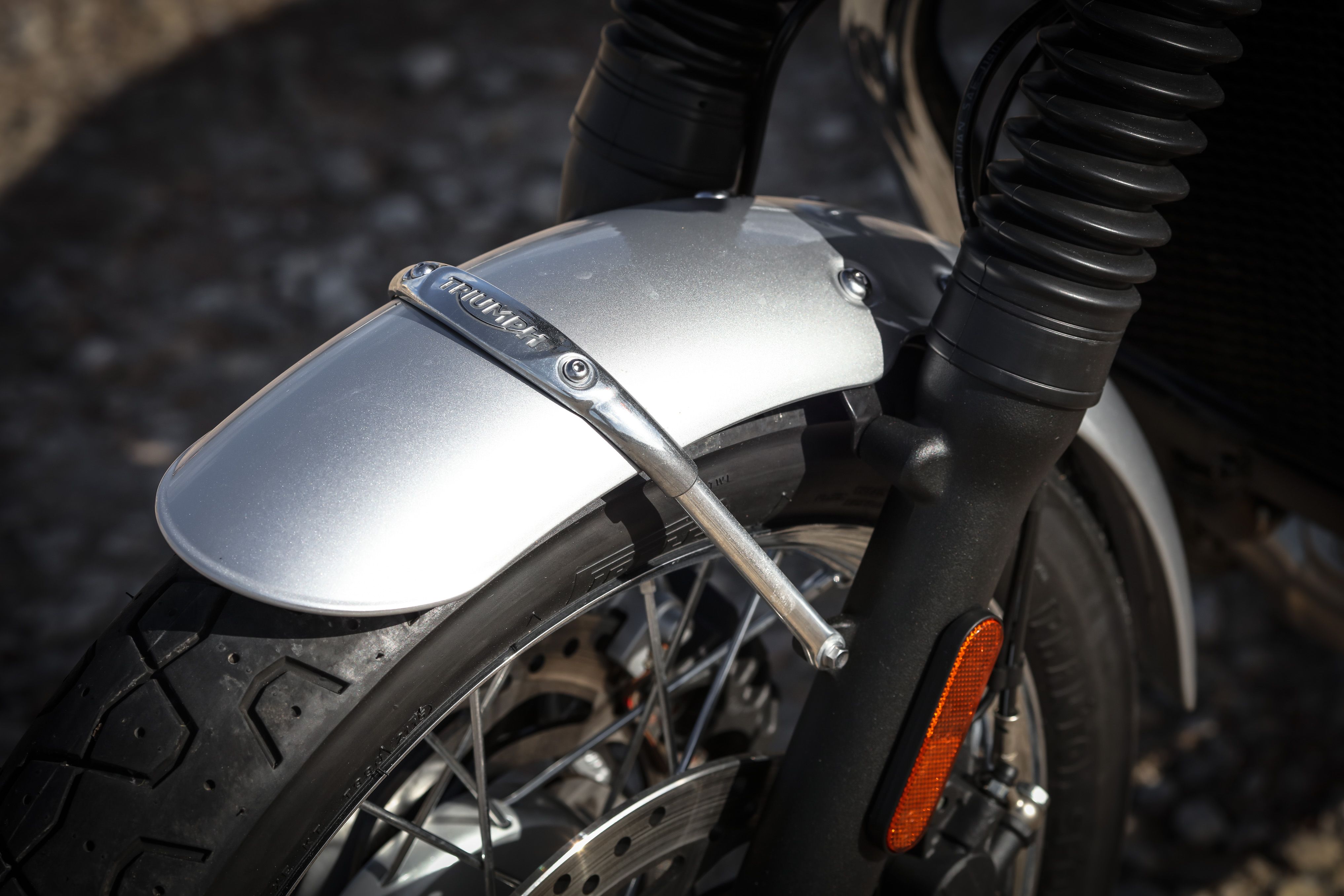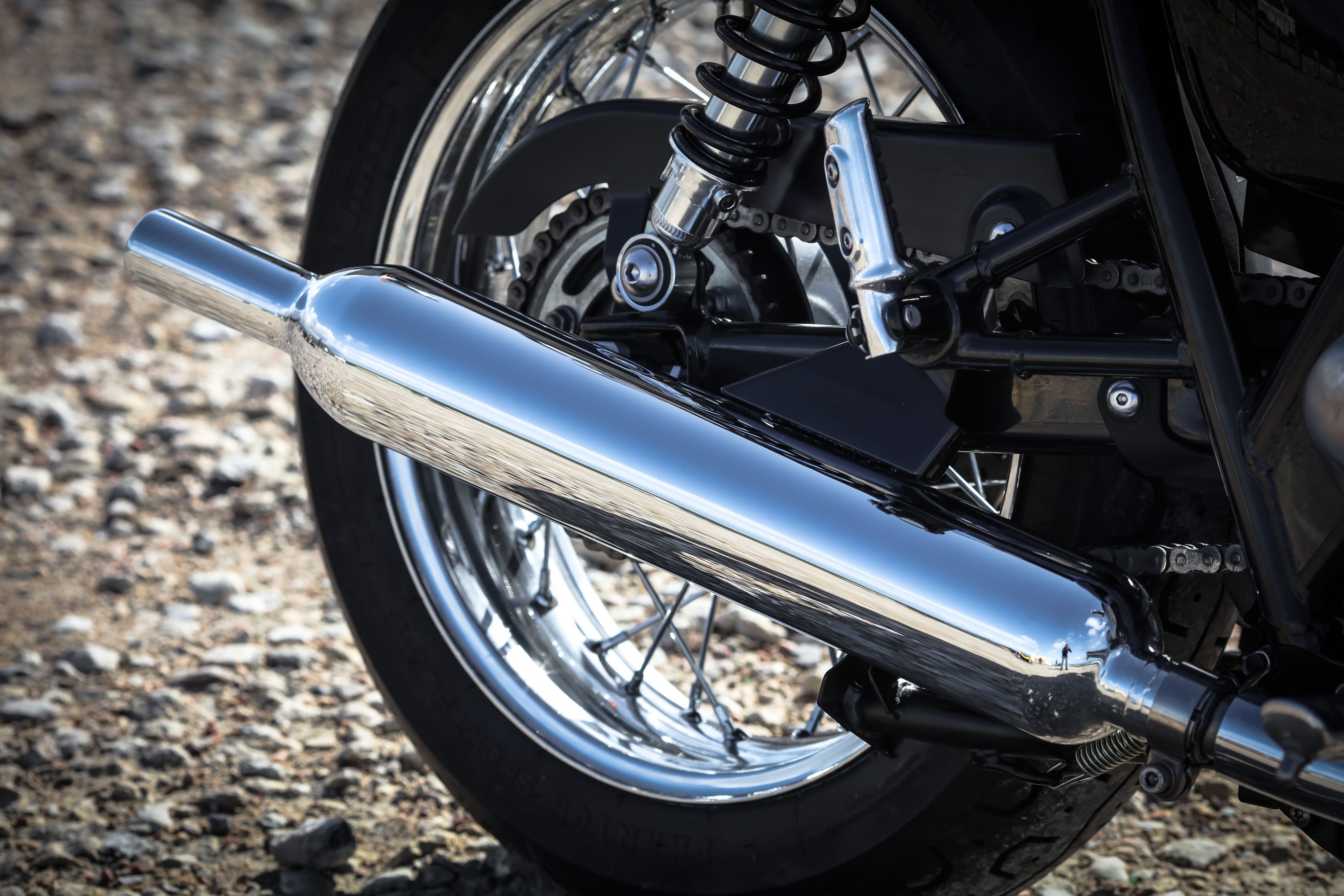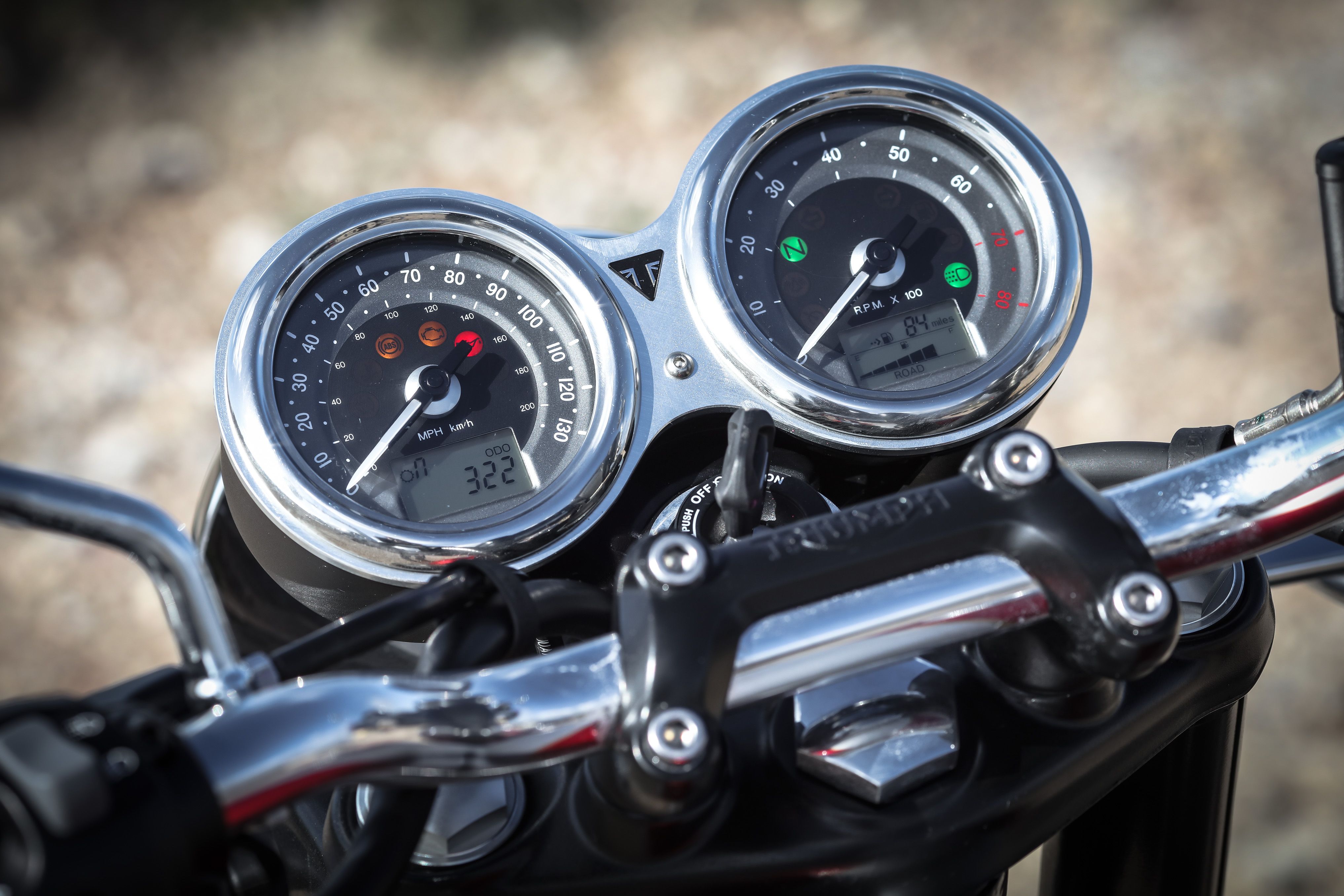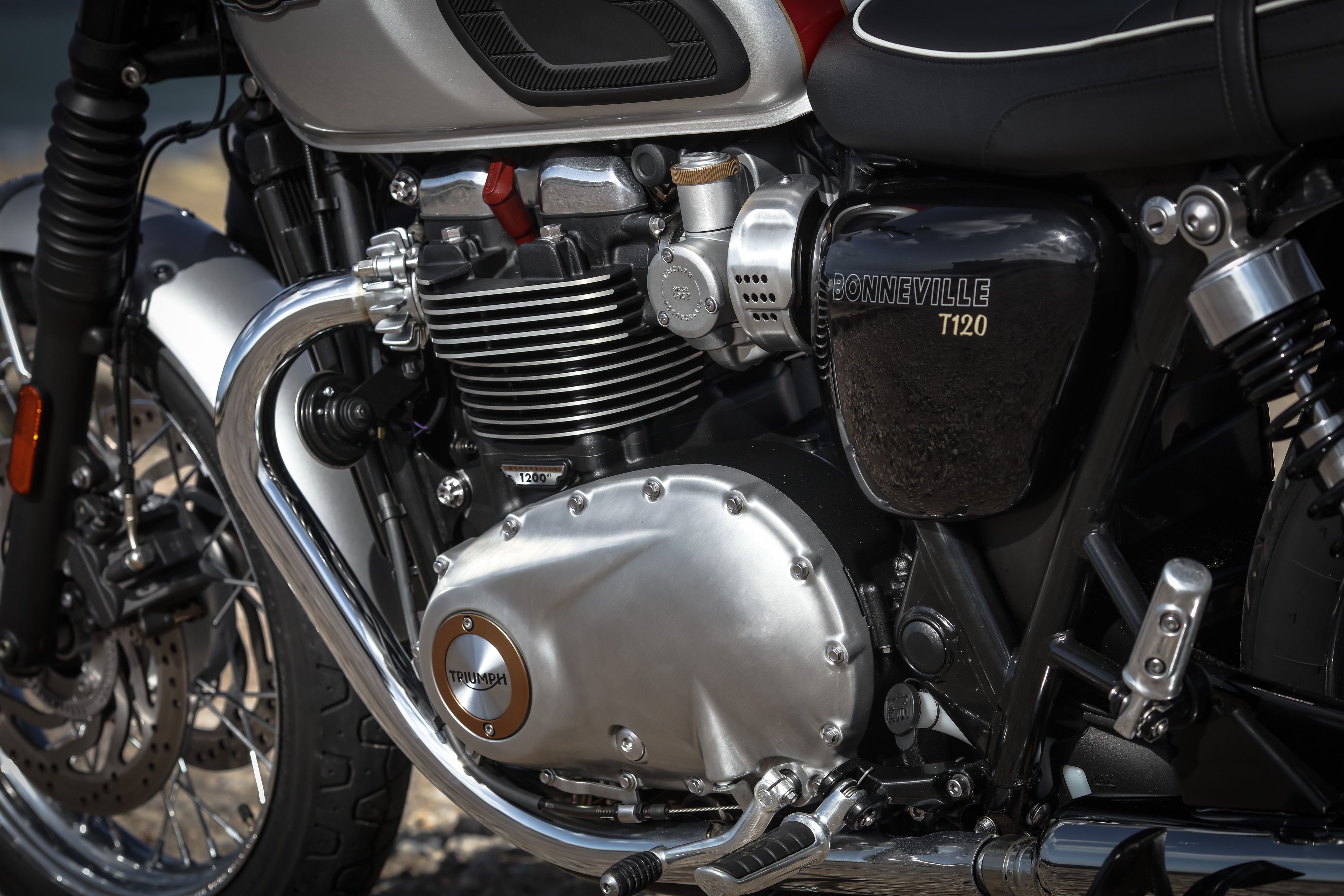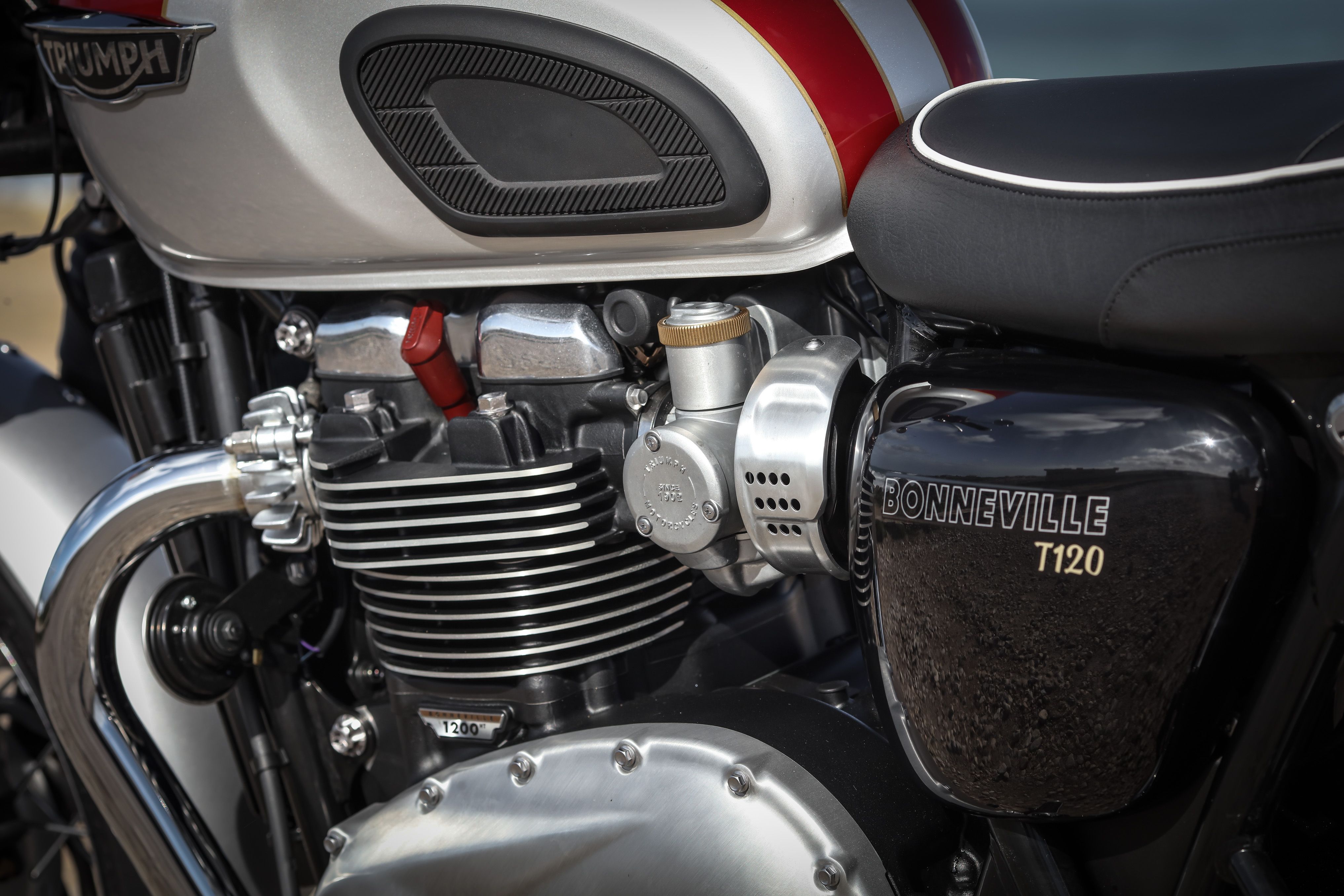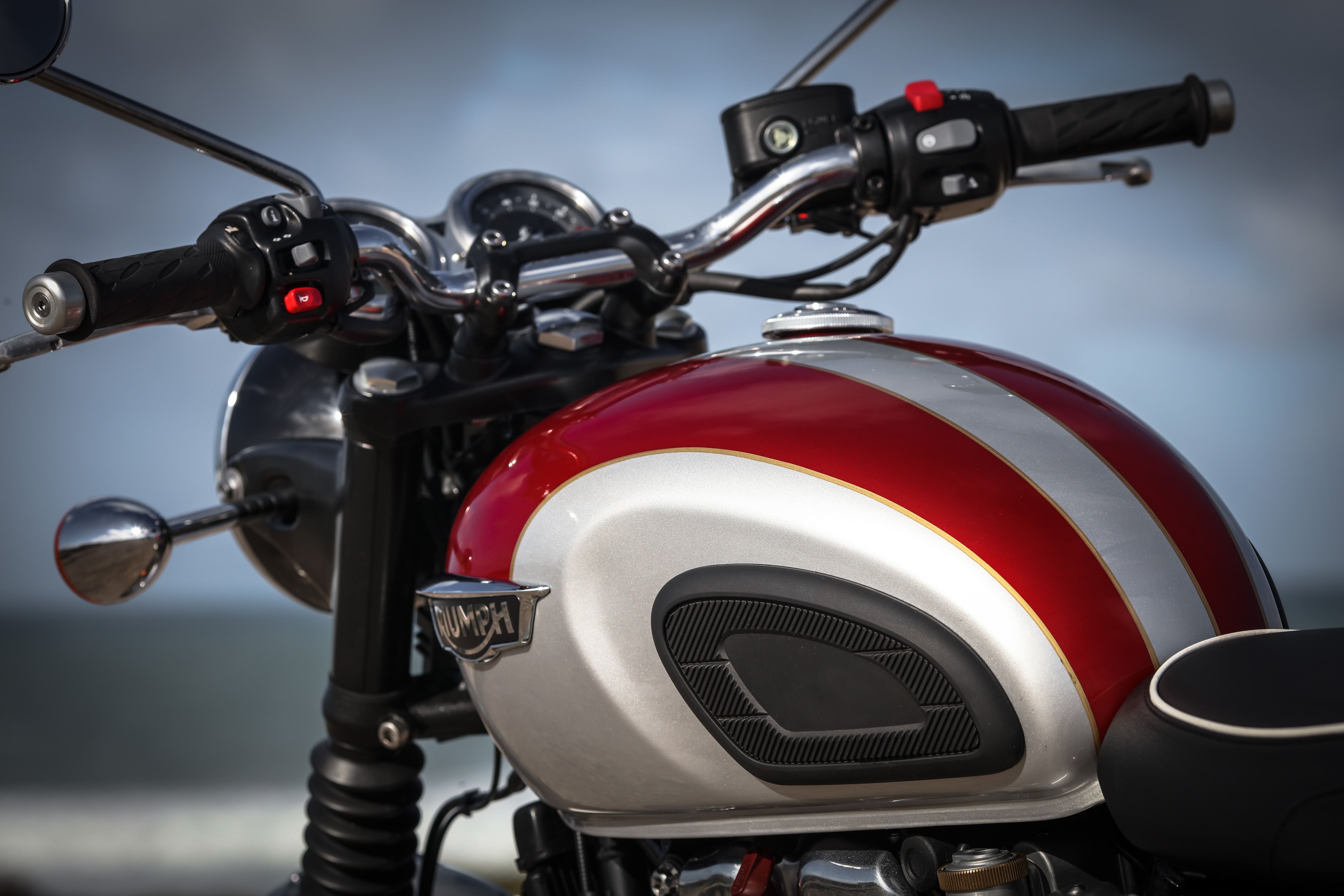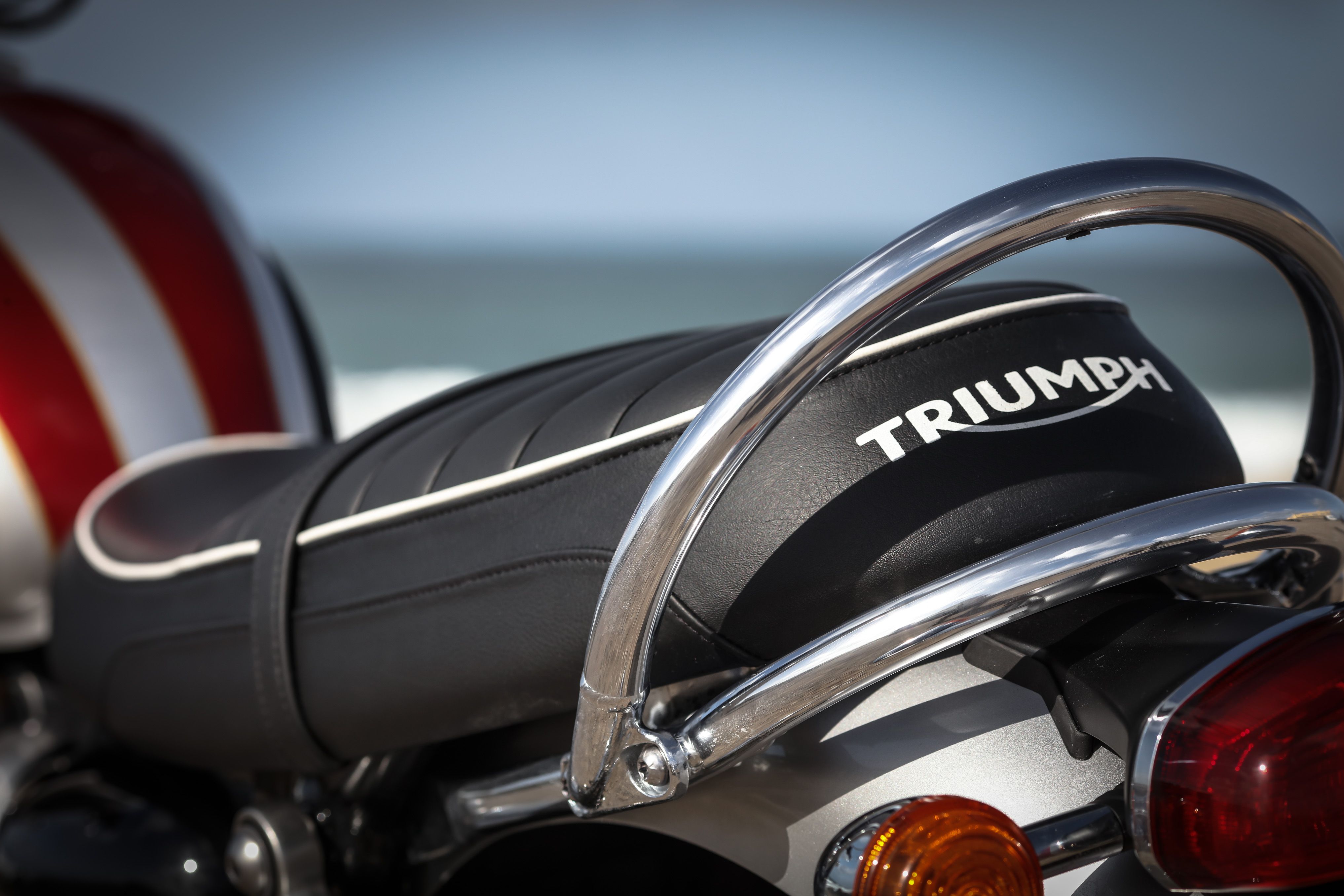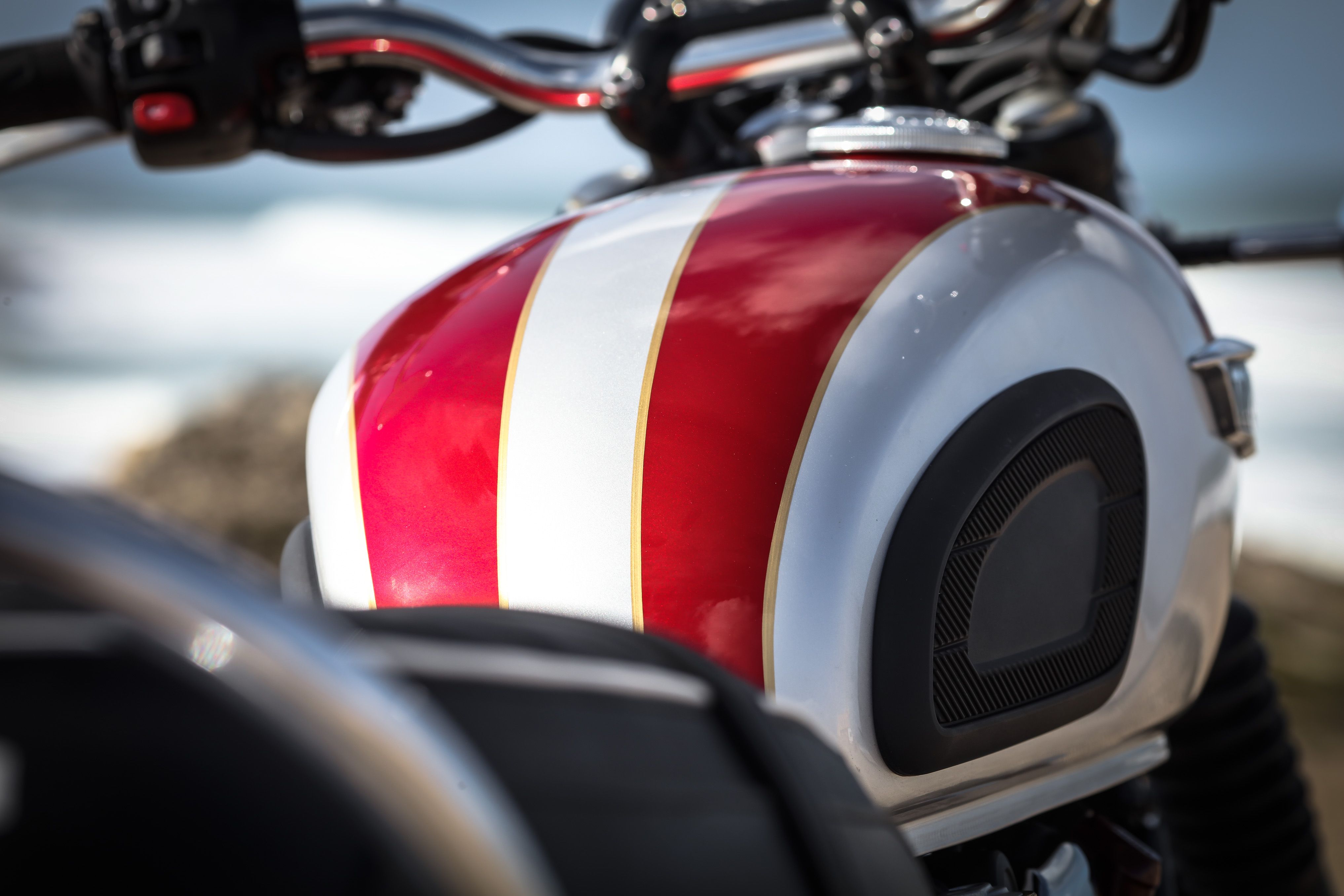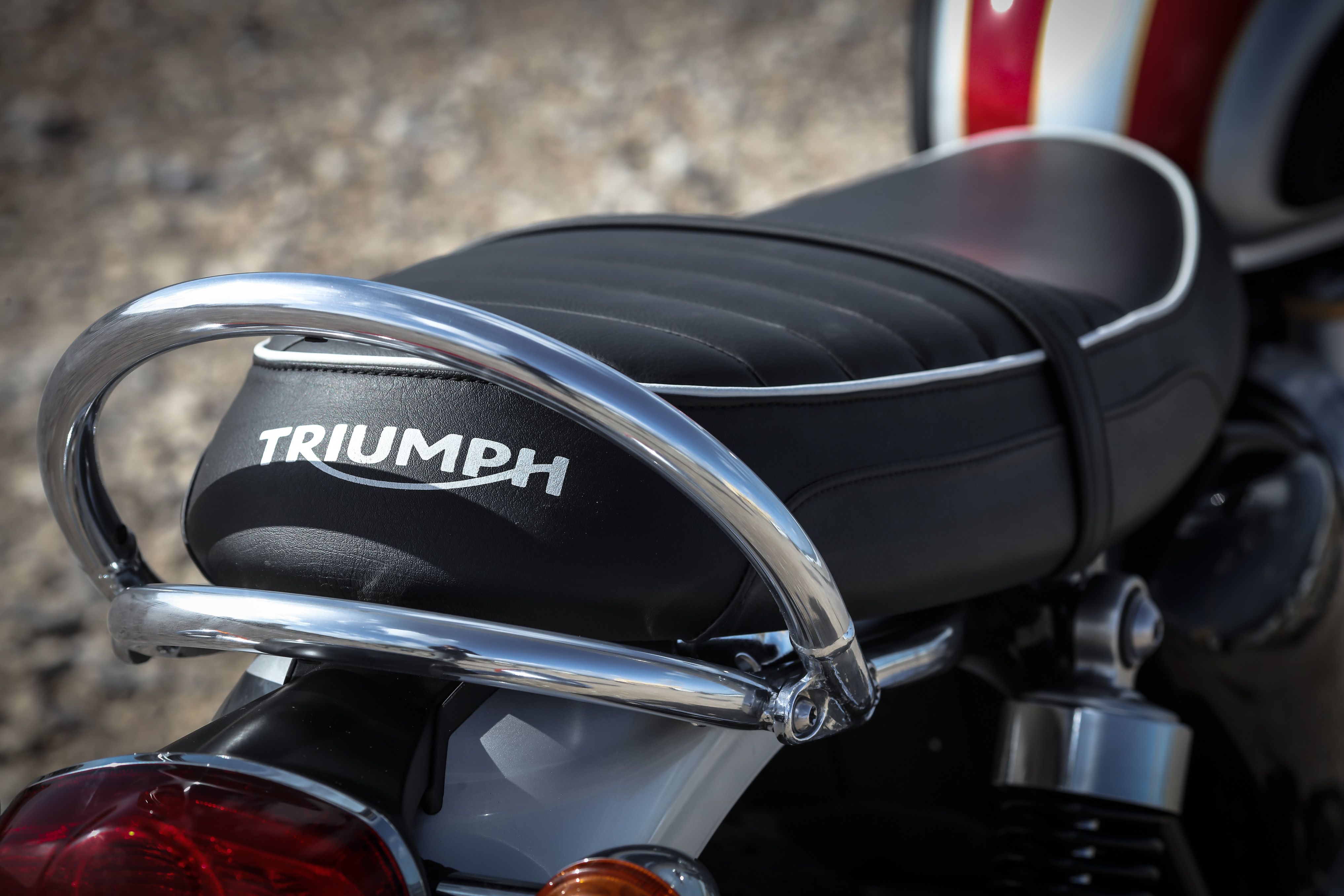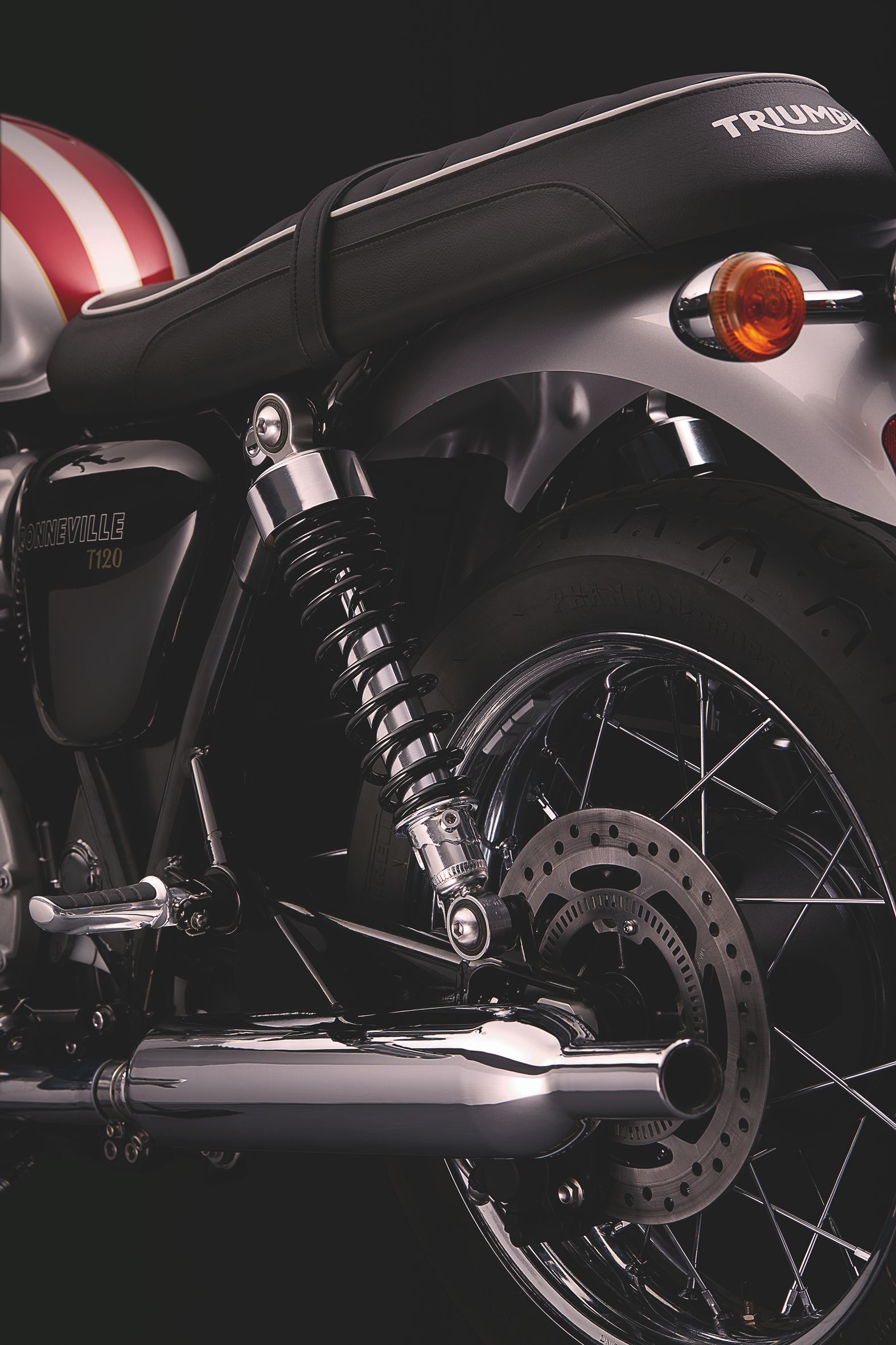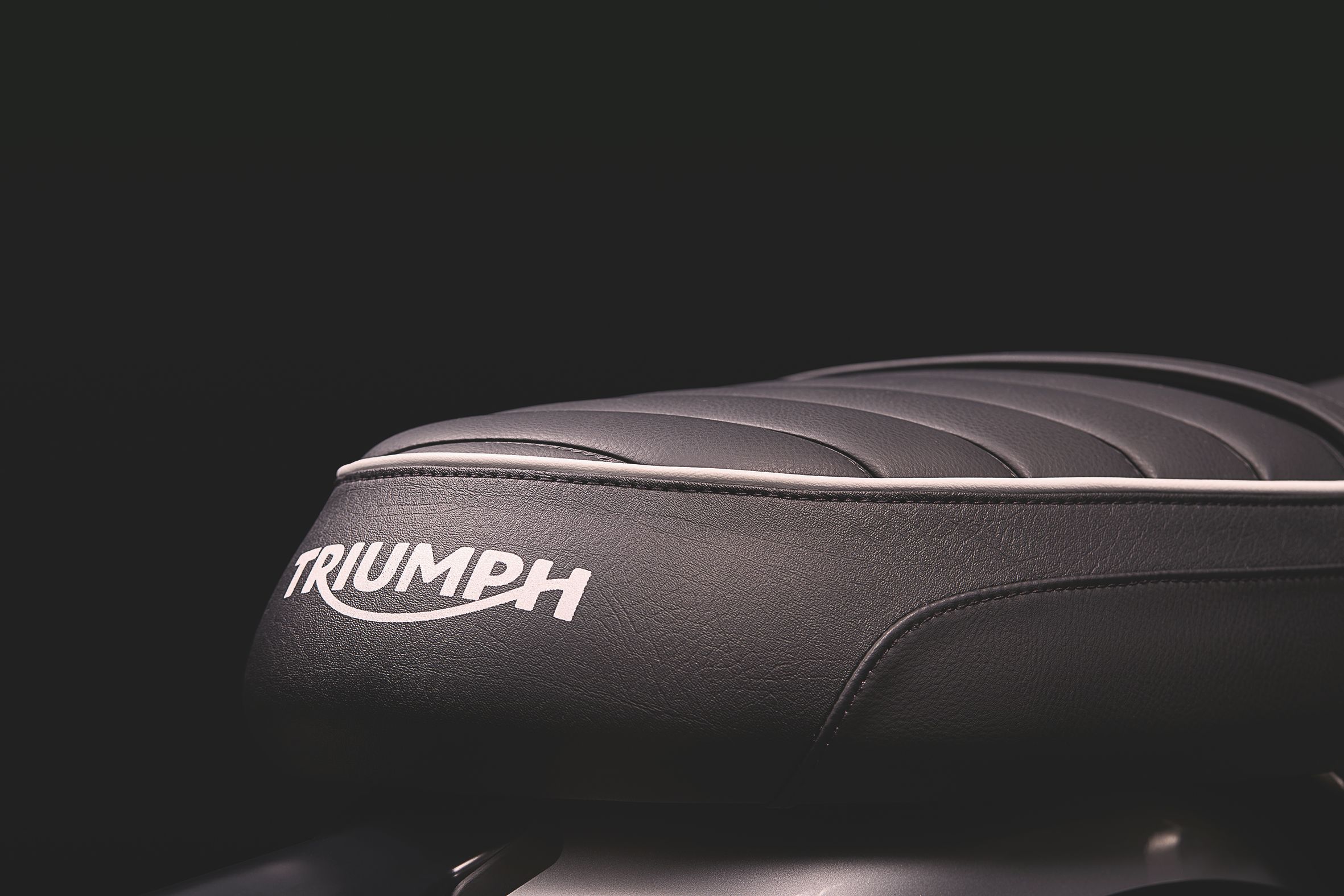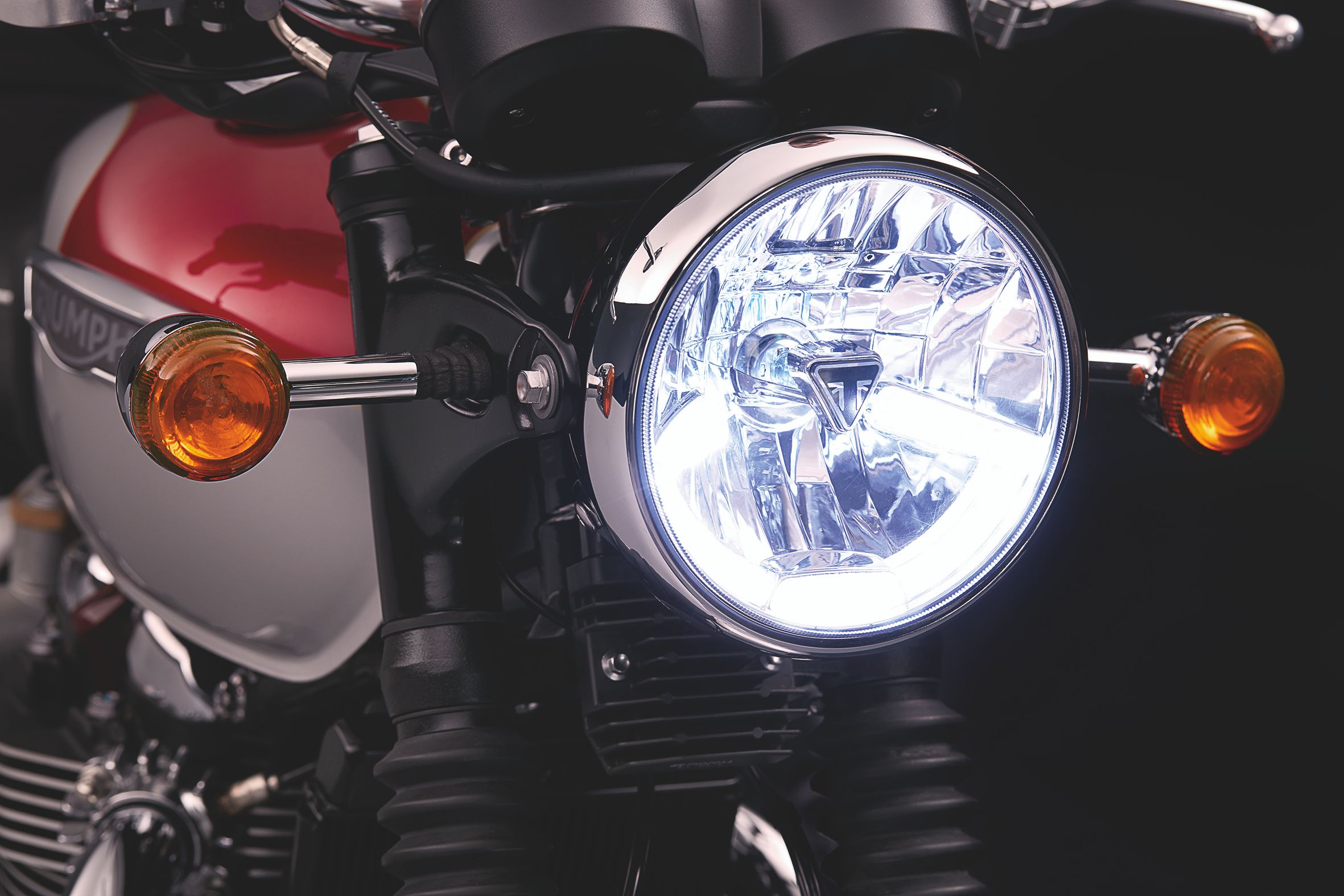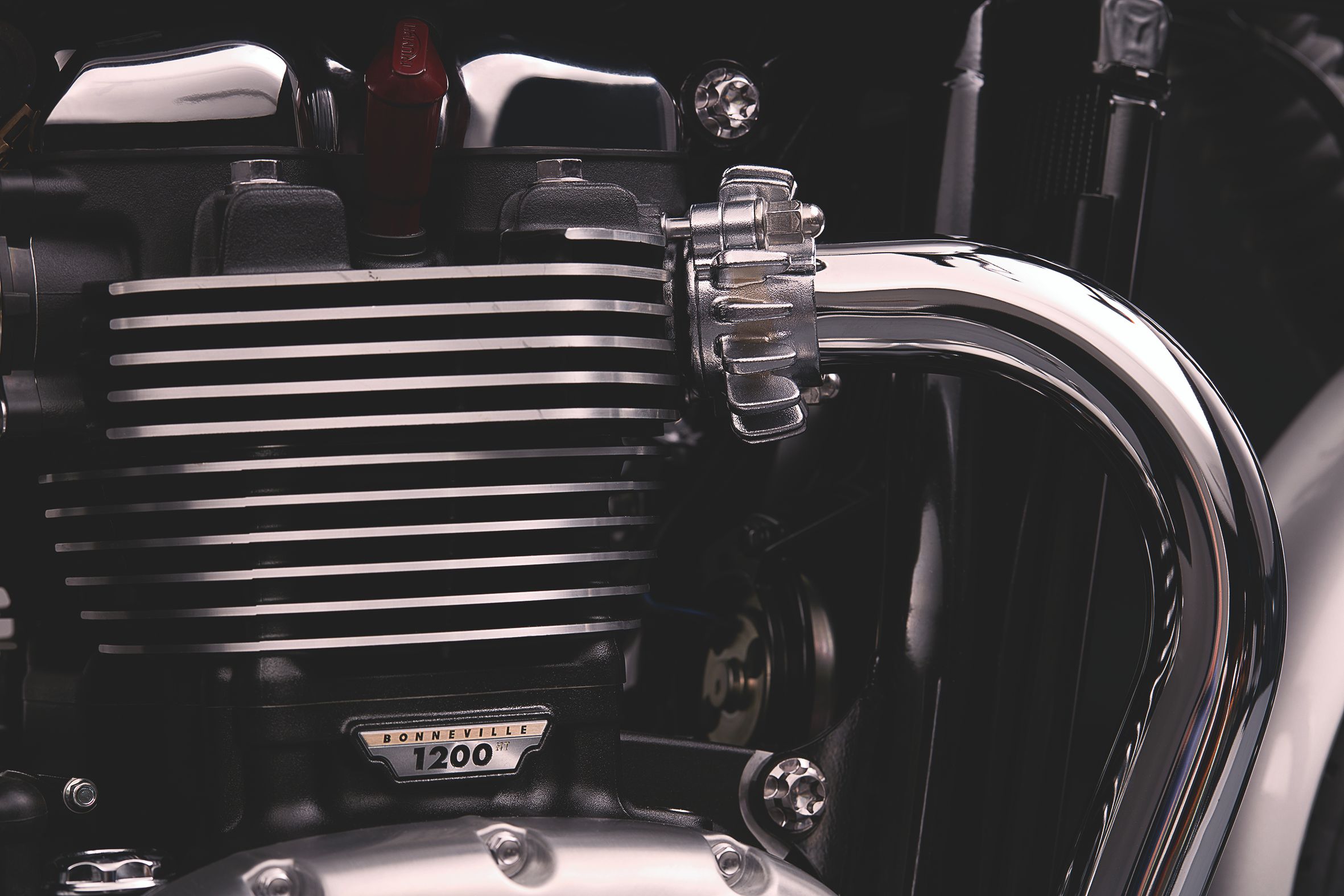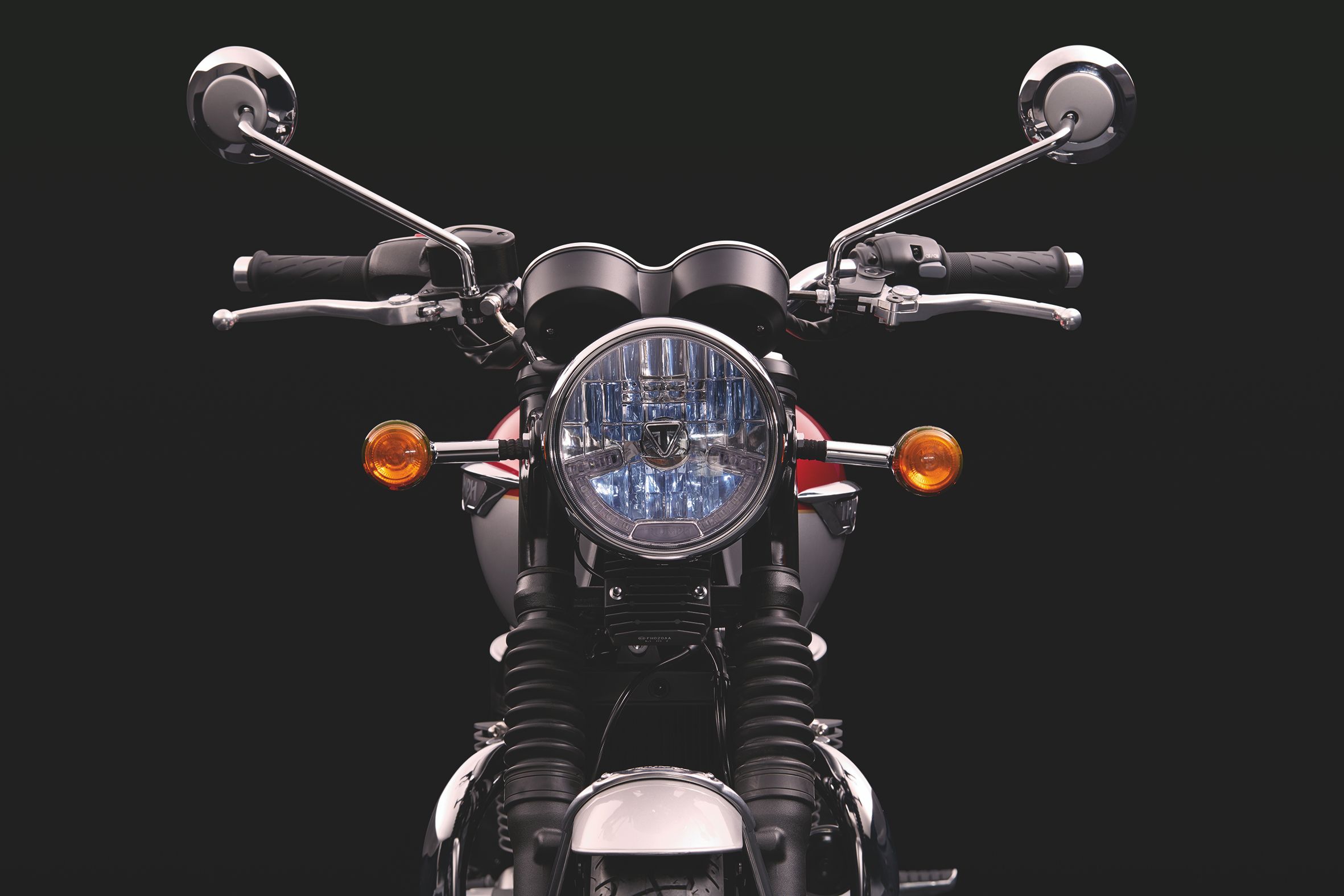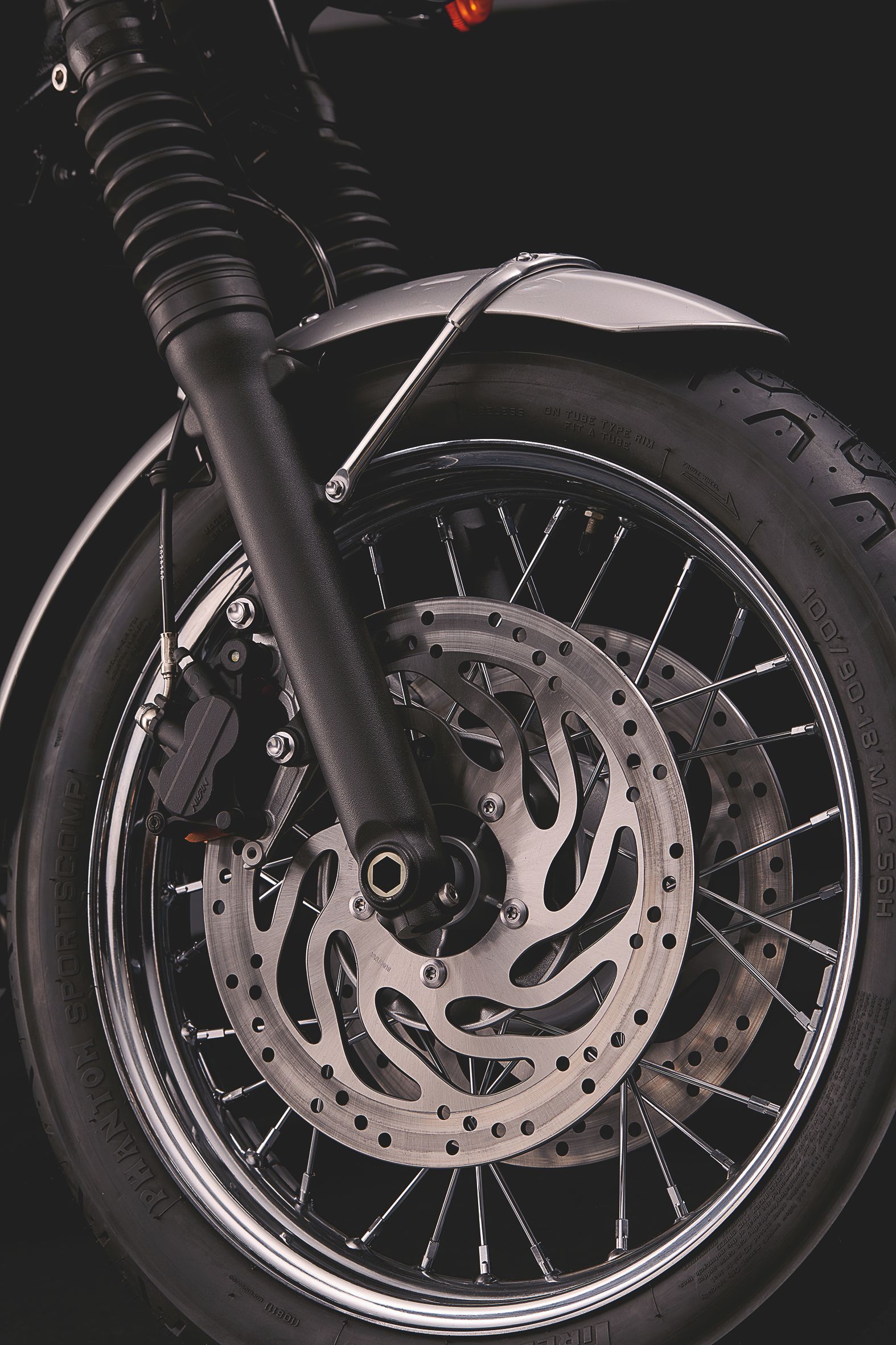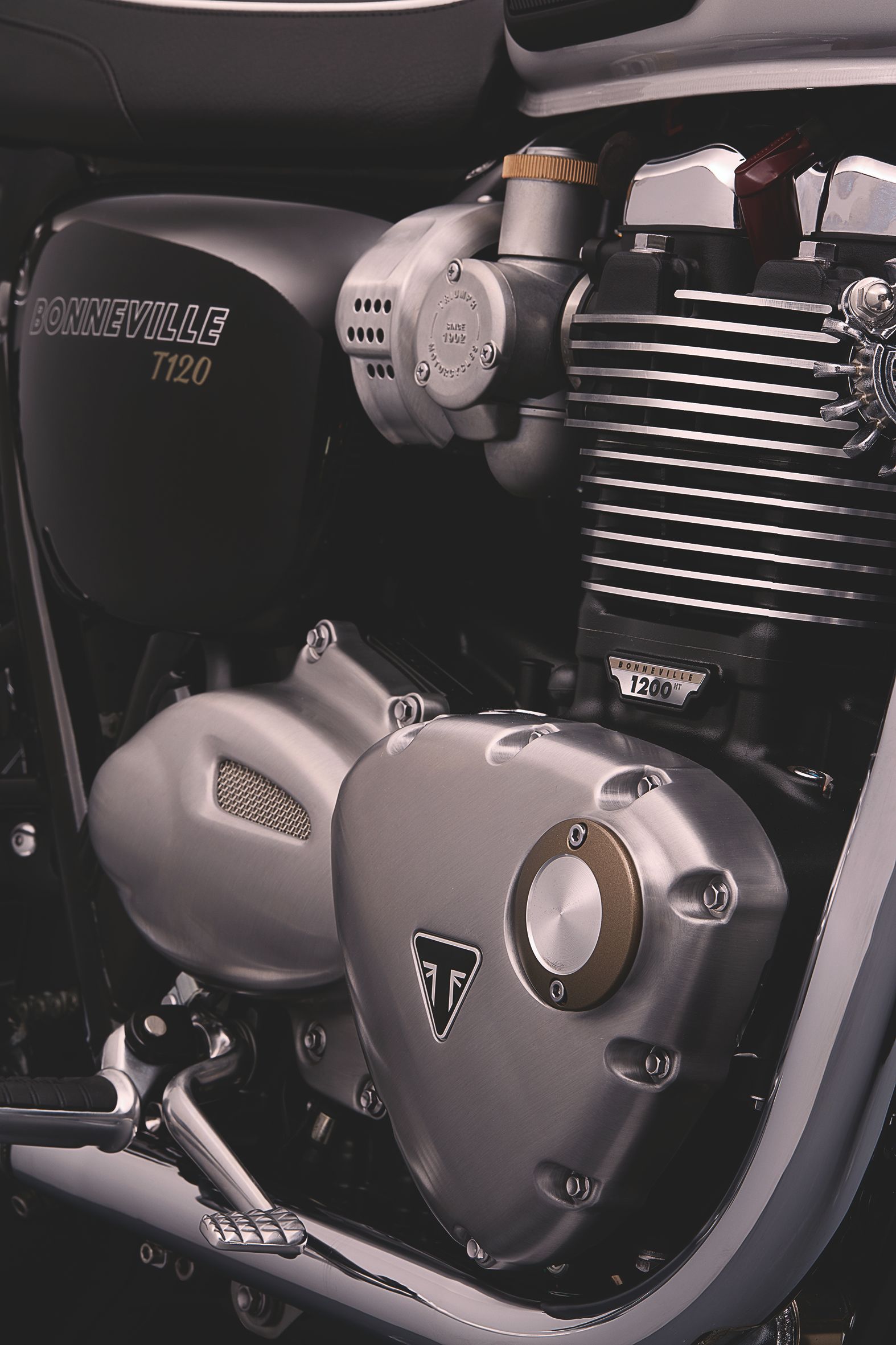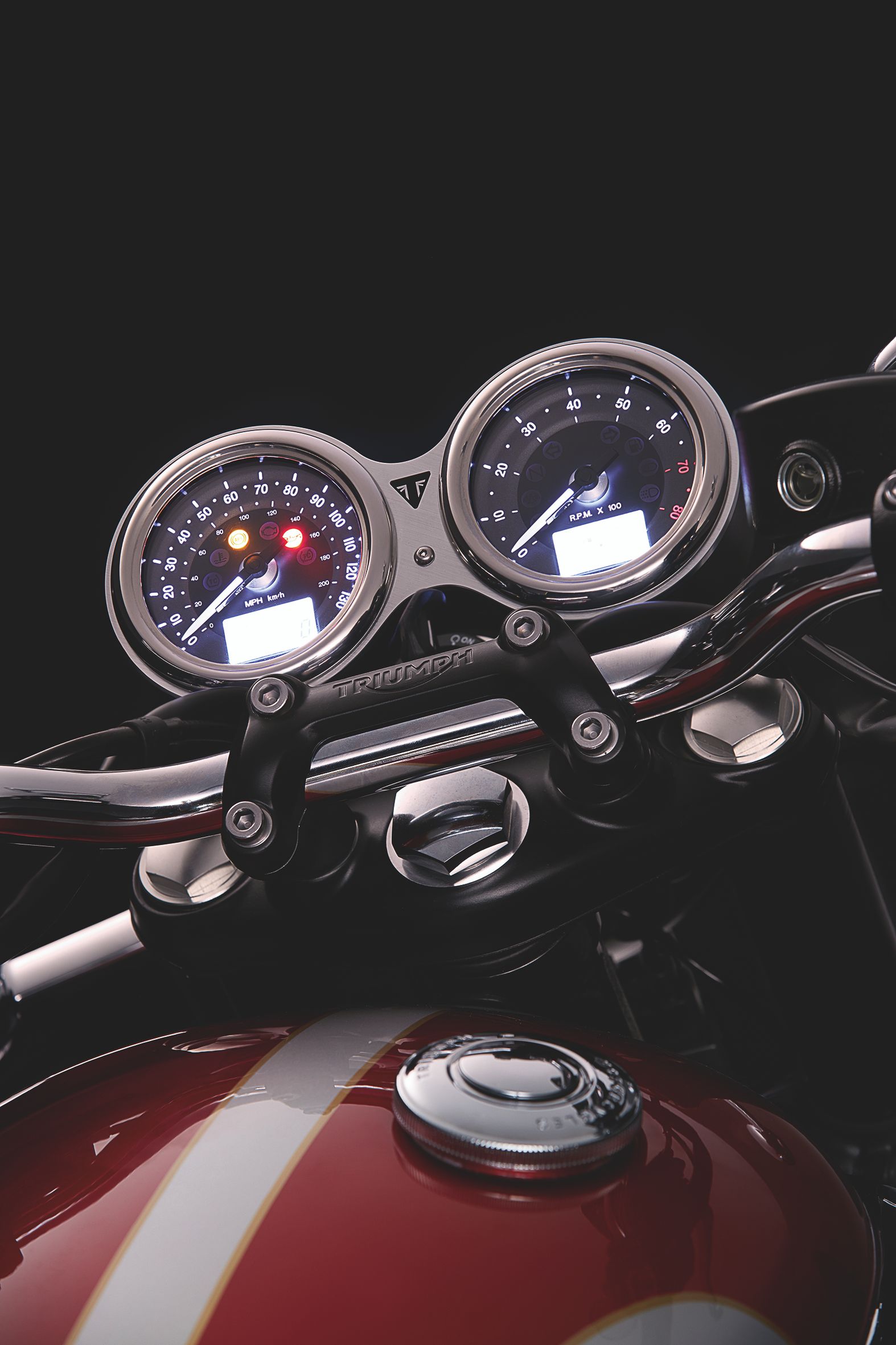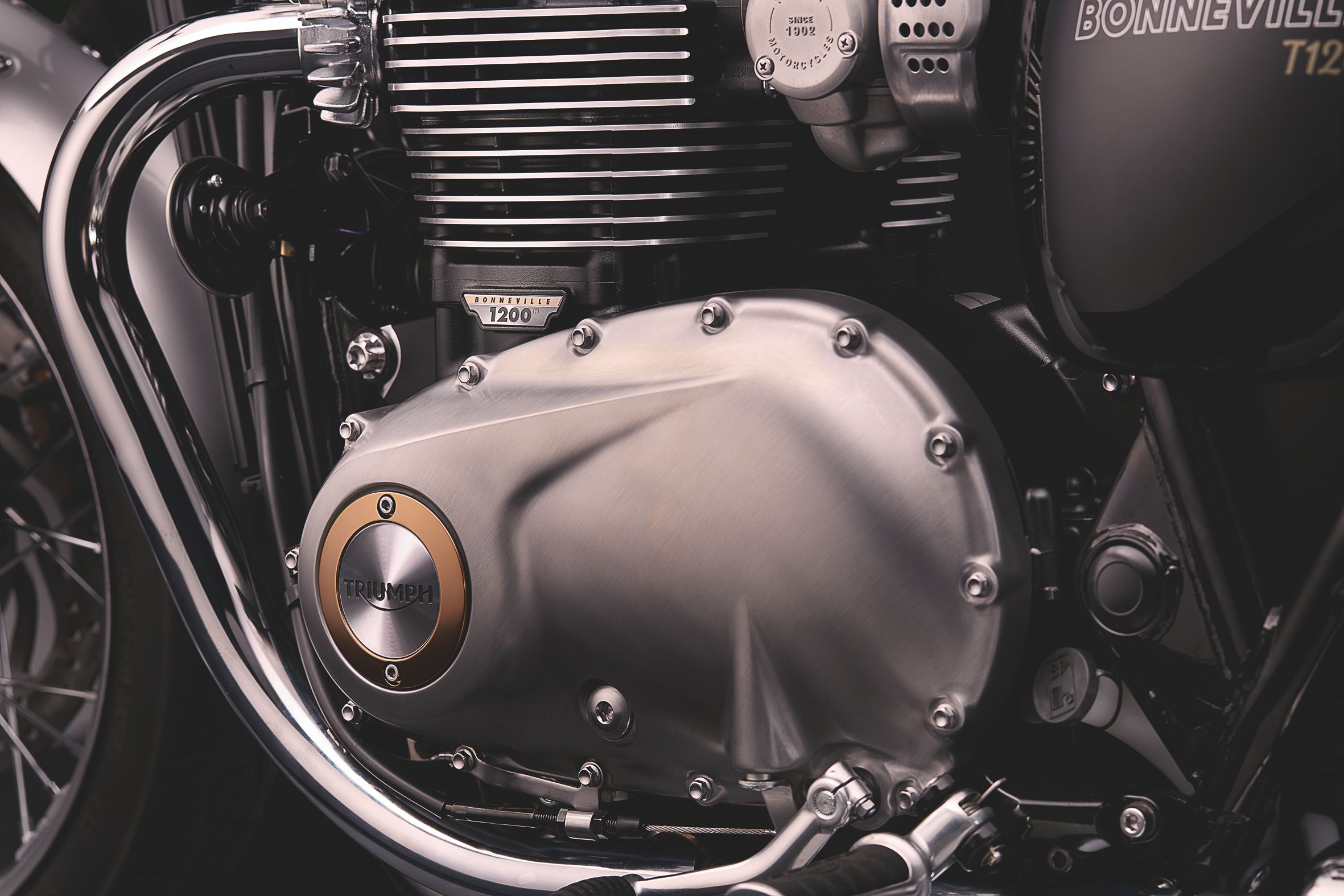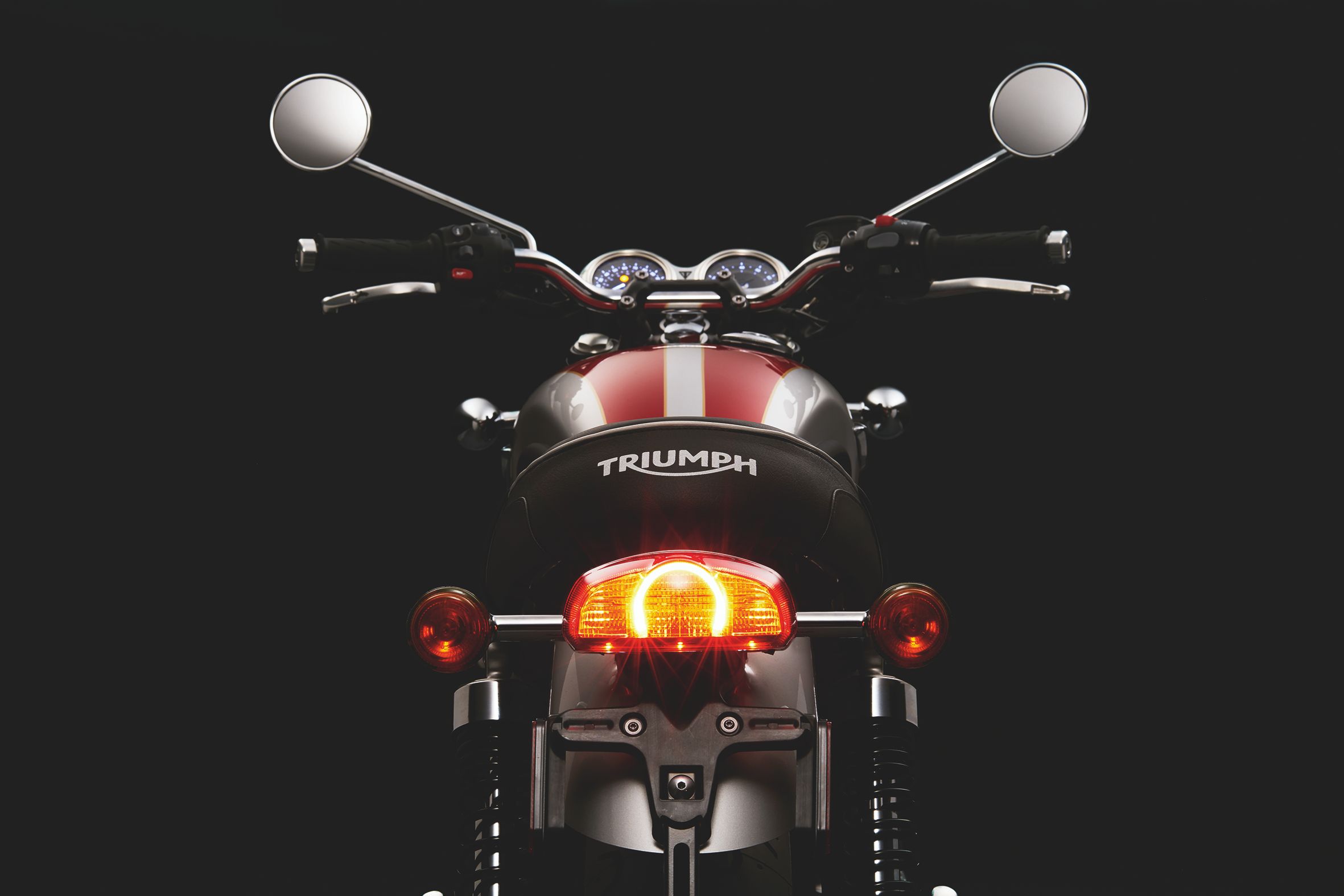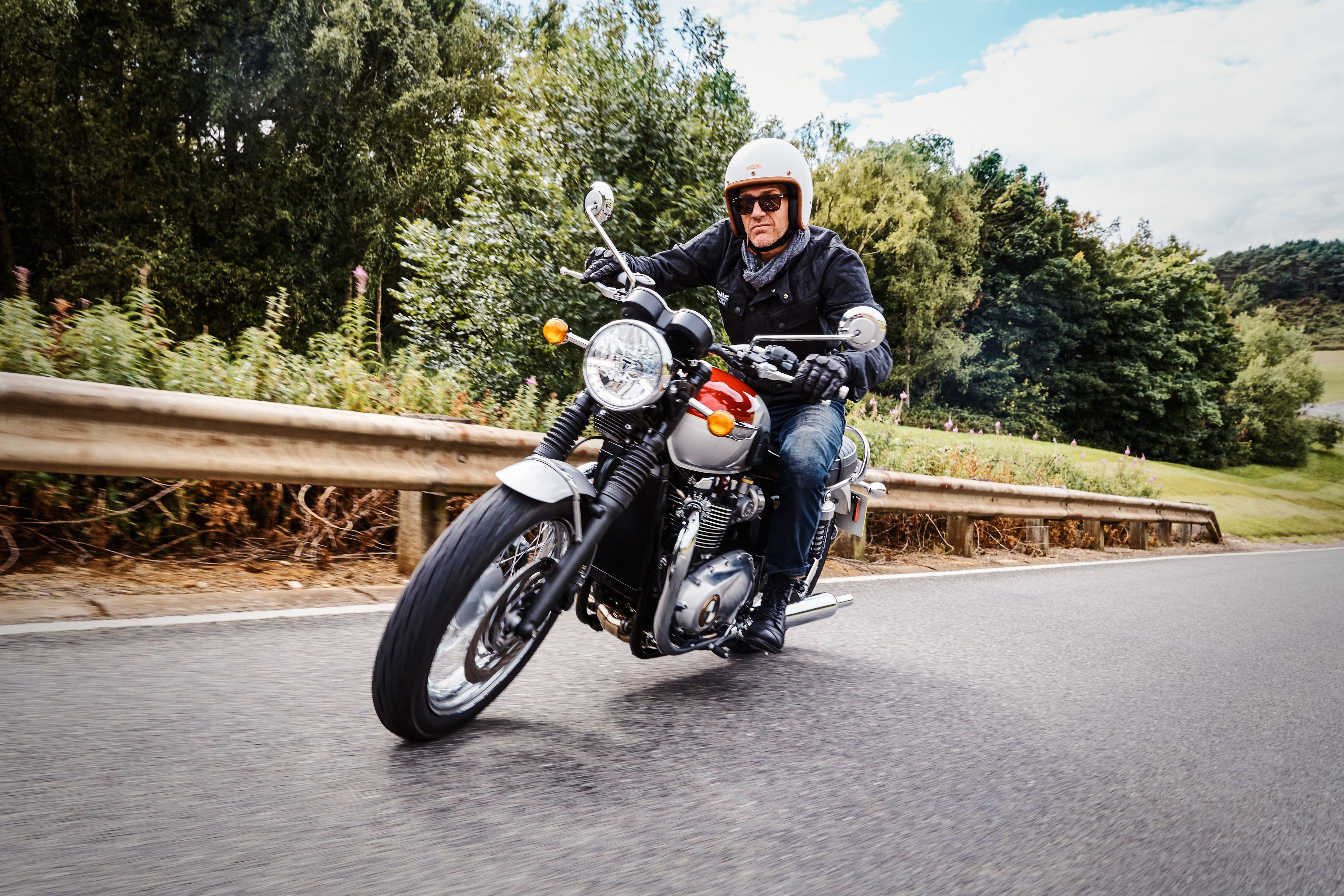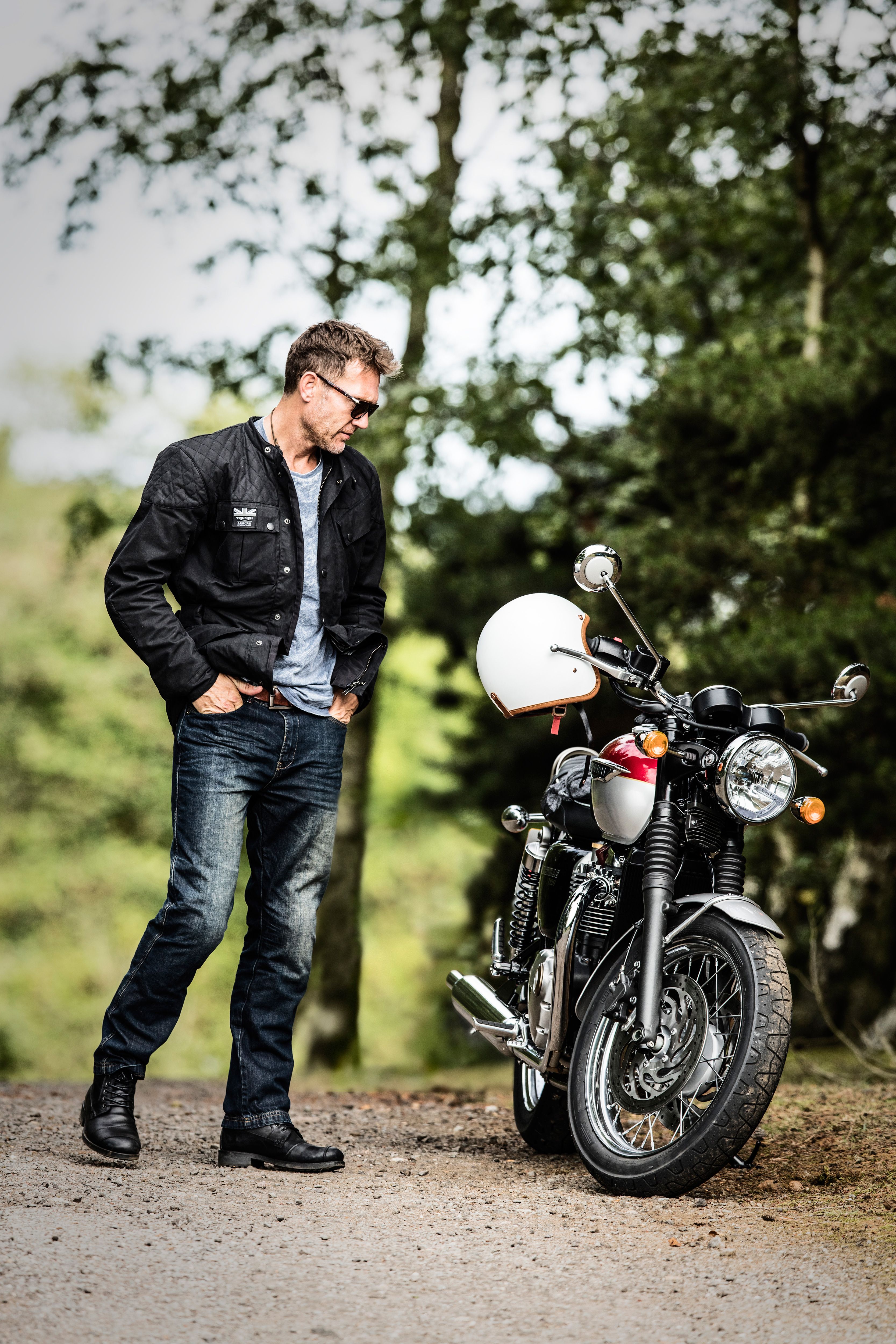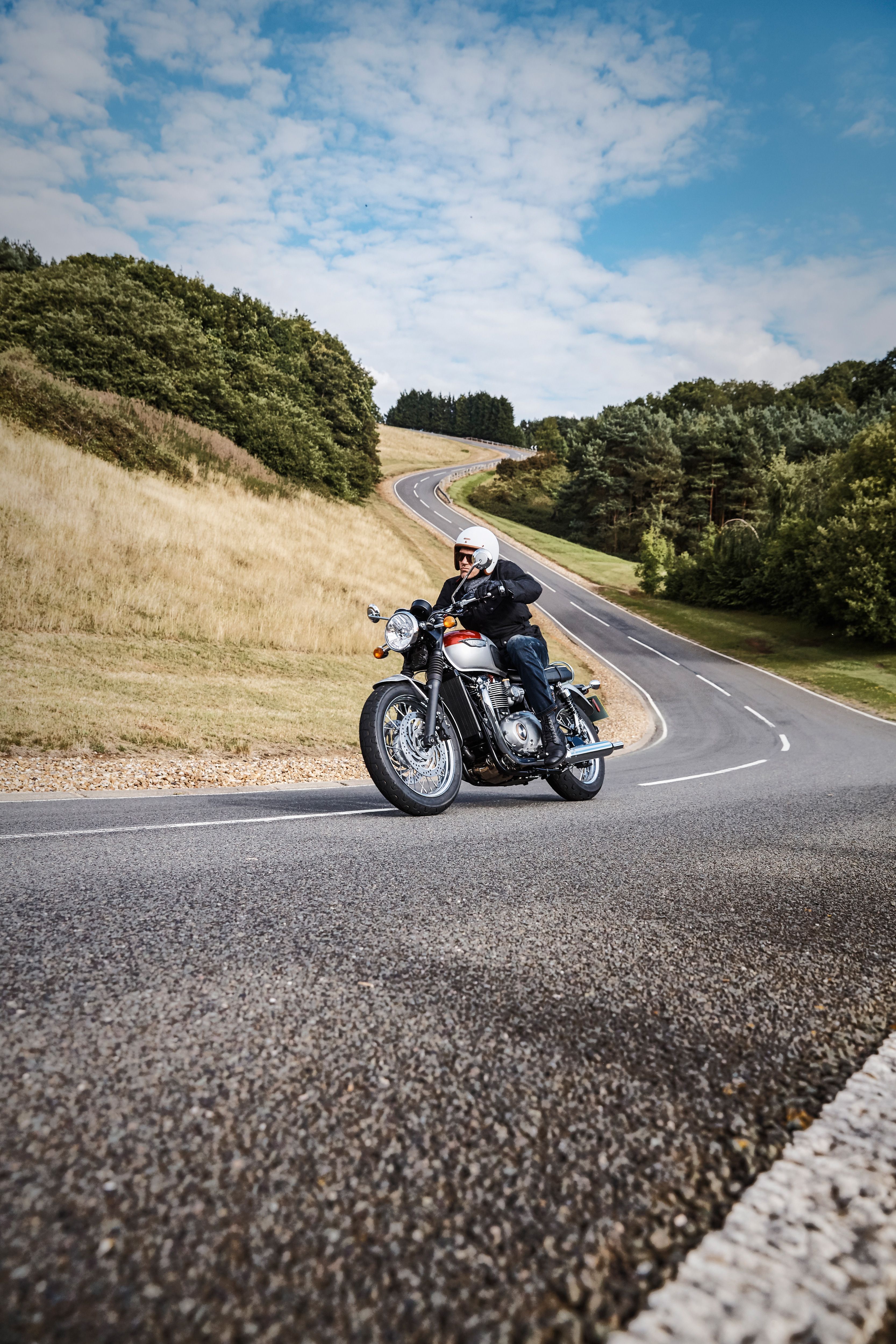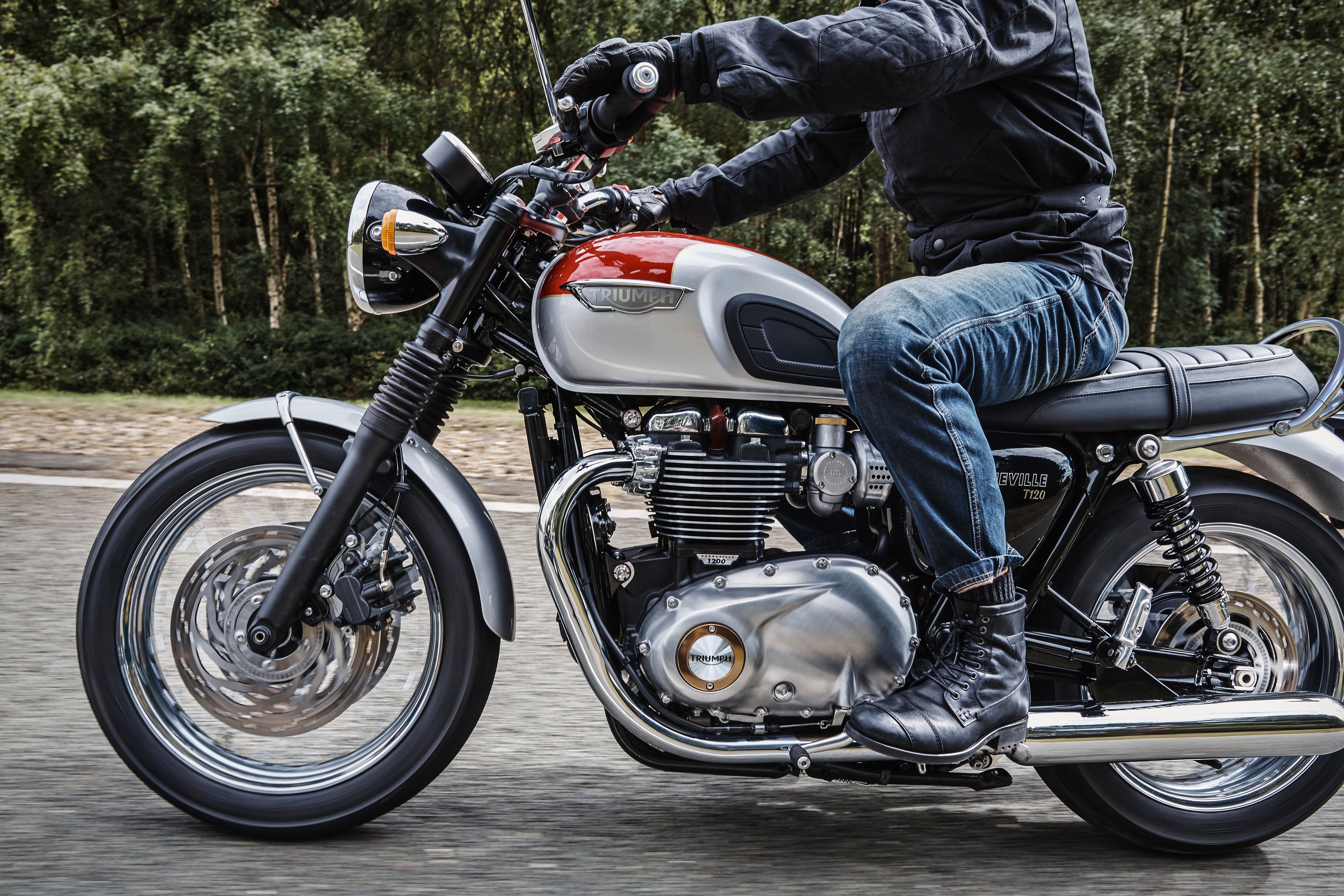Triumph carries the Bonneville name into a new generation with the Bonneville T120 and T120 “Black.” Such a classic name deserves to be treated with dignity with a certain amount of retro appeal, and the factory took extraordinary steps to keep this ride as old school as possible. The designers didn't go too far, though; a modern mill cranks out 80 ponies and over 77 pounds of grunt under a ride-by-wire throttle and traction control. A modern ride through and through, but with a very definite, and dated, curb appeal.
2016 - 2020 Triumph Bonneville T120 / T120 Black
- Make: Array
- Model: 2016 - 2020 Triumph Bonneville T120 / T120 Black
- Segment: Array
- Engine/Motor: Parallel Twin
- [do not use] Vehicle Model: Array
Triumph Bonneville T120 Design
Folks, this here is one acorn that didn't fall far from the tree. At a glance one can see shades of the original Bonnie, circa 1959, in the shape of the front fender and fork gaiters, the bench seat, and even the frame geometry on the T120. Granted, the new T120s aren't likely to fool anyone, but it's more of a tribute piece than an actual replica, after all. What we wind up with is a classy cruiser with an unmistakable Britishness about it.
A round headlight can and dual-clock instrumentation keeps things clean at the steering head with bars that run just enough rise to not qualify as drag bars. Tall mirror standoffs are as unattractive as ever, but there's always the aftermarket, and both of these Bonnie brethren scream out for bar-end mirrors.
The classic tank shape, with its padded indents and badging fits the dated look nicely, and even the flange construction isn't enough to cheapen the panache. From the curve of the tank, the flylines flatten out over the bench seat before tumbling down the sweep of the rear fender. A compact tail-lamp housing and standoff turn signals over a tag holder are the only things cluttering up the rear fender.
As for the looks of the drivetrain, I gotta say Trumpet delivered pure sex on two wheels. Though it's obviously a liquid-cooled engine, functional cooling fins lend it a classic look while carrying away a certain amount of waste heat. Naturally, Trumpet had to use fuel injection to meet performance and emissions demands, but the designers blessed be thy name built throttle bodies that look like the old-fashioned, mechanical-slide carburetors used back in the day.
As much as I loathe liquid-cooling on cruisers, the blackout radiator does a good job of making itself inconspicuous on both models, but especially on the blackout version. There ya have it, folks. I, for one, am pleased with the looks of the thing, so let's check out the nuts and bolts.
Triumph Bonneville T120 Chassis
Tubular-steel members make up the double-downtube, double-cradle frame on the T120 for a time-tested foundation. The 25.5-degree steering head keeps the front wheel nice and tight with a compact, 56.9-inch wheelbase and 4.1 inches of trail. Although the bike weighs in at just six pounds shy of a quarter ton dry, these steering figures give us some pretty decent cornering capabilities for a cruiser.
A yoke-style swingarm articulates the rear wheel with a pair of preload-adjustable, coil-over Kayaba shocks to tame the motion. The 41 mm front forks also come courtesy of Kayaba, and while they have the same 4.72 inches of travel at the axle, the front stems come with no adjustments whatsoever.
Fully loaded with fuel-plus-rider, the Bonnie range can get pretty heavy, but the factory gave us plenty of brakes to work with to help manage all that energy. All around, twin-piston Nissin calipers bind the dual, 310 mm front discs and 255 mm rear disc for almost sportsbike-like stopping power. ABS protection comes as part of the stock equipment package, so you can make the most of all this braking power with confidence.
Laced rims mount the 18-inch front hoop and the 17-inch rear, and honestly, nothing else would look quite right on this ride. Seat height falls out in the midrange at 30.9-inches tall, and the rider triangle encourages a relaxed, slightly forward-leaning riding position.
|
Frame: |
Tubular steel cradle |
|
Swingarm: |
Twin-sided, tubular steel |
|
Rake: |
25.5º |
|
Trail: |
4.1 in (105.2 mm) |
|
Suspension, Front/Rear: |
KYB 41 mm cartidge forks, 120 mm travel/ KYB twin shocks with adjustable preload, 120 mm rear wheel travel |
|
Wheels, Front/Rear: |
32-spoke 18 x 2.75 in/ 32-spoke 17 x 4.25 in |
|
Tires, Front/Rear: |
100/90 -18/150/70 R17 |
|
Brakes, Front/Rear: |
Twin 310 mm discs, Nissin 2-piston floating calipers, ABS/ Single 255 mm disc, Nissin 2-piston floating caliper, ABS |
Triumph Bonneville T120 Drivetrain
As with the rest of the bike, the engine is a mixed bag of old and new. Triumph stuck with its classic parallel-twin mill, but rather than have it fire every 180-degrees for the old twingle sound, this new plant fires on the 270-degree mark for a lopey idle and none of the old angry-lawnmower racket.
Since it's a liquid-cooled engine, the water jacket absorbs some of the mechanical noises from within the case for a bit of extra social value, if ya know what I mean. The eight-valve head is timed by a SOHC, and the 97.6 mm bore and 80 mm stroke gives us 1,200 cc and a mildish 10-to-1 compression ratio.
The ride-by-wire throttle enables the switchable traction control that reduces engine power automatically whenever rear-wheel slip is detected, and it provides seamless throttle response across the board. Additionally, you get to customize engine power delivery through a couple of different riding modes labeled “Road” and “Rain.”
Fuel injection and electronic engine management give the engine a respectable performance capability with 80 horsepower on tap at 6,550 rpm and 77.4 pound-feet of torque at 3,100 rpm, plenty for the bike at its fighting weight. Trumpet threw on a slipper clutch for an extra level of traction protection that will prevent wheel hop and over-revs during aggressive downshifts.
|
Engine: |
Liquid cooled, 8 valve, SOHC, 270° crank angle parallel twin |
|
Displacement: |
1200 cc |
|
Bore x Stroke: |
97.6 mm x 80 mm |
|
Compression: |
10.0:1 |
|
Max Power EC: |
80 hp (59kW) @ 6,550 rpm |
|
Max Torque EC: |
77.4 lb-ft (105 Nm) @ 3,100 rpm |
|
System: |
Multipoint sequential electronic fuel injection |
|
Exhaust: |
Chromed 2 into 2 exhaust system with twin chrome silencers |
|
Final drive: |
x ring chain |
|
Clutch: |
Wet, multi-plate assist clutch |
|
Gearbox: |
6-speed |
Triumph Bonneville T120 Pricing
The final price depends on which color scheme you want. For 2020, get either in basic black for $11,850. Solid colors – Aluminium Silver for the T120 and Matt Graphite for the “Black” -- will run you $12,100 and two-tones for the T120 bump that up to $12,350.
|
Instrument Display and Functions: |
LCD multi-functional instrument pack with analogue speedometer, analogue tachometer, gear position indicator, fuel gauge, range to empty indication, service indicator, clock, trip computer, scroll and mode buttons on handlebars, heated grip status, fuel consumption display, traction control status and throttle mode display. |
|
Colors: |
|
|
└ T120: |
Jet Black, Aluminium Silver, Competition Green/Fusion White, Cranberry Red/Aluminium Silver |
|
└ T120 Black: |
Jet Black, Matt Graphite |
|
Price: |
|
|
└ T120: |
$11,850, Color: $12,100, Two-Tone: $12,350 |
|
└ T120 Black: |
$11,850, Color: $12,100 |
Triumph Bonneville T120 Competitors
|
|
left> 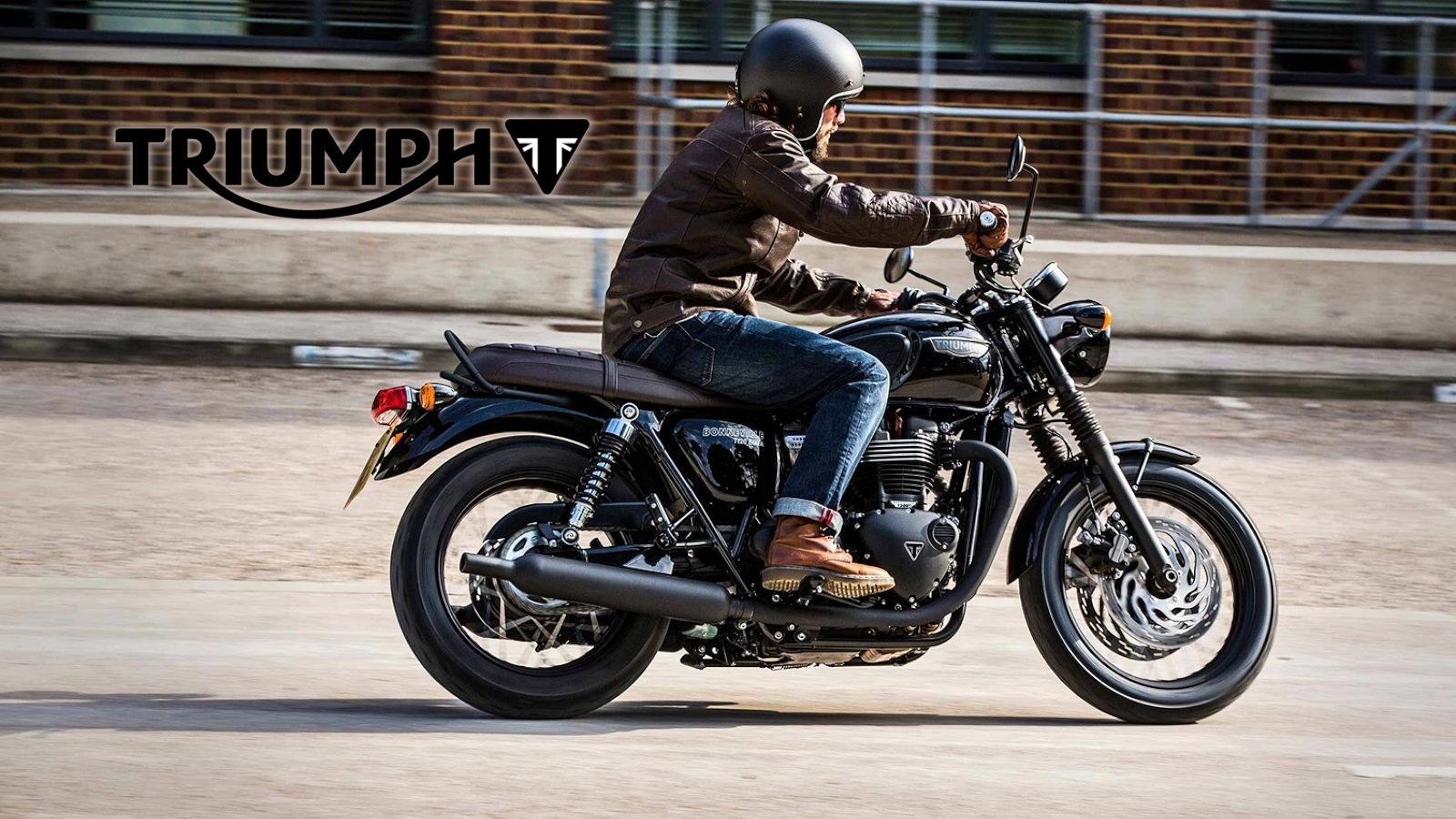
|
Looking at the displacement and classic panache, I felt I had to give the Harley-Davidson Iron 1200 a serious look as the competitor for the Bonneville T120. I've never made secret my love of the Sportster, but I also like me some old-school Brit bikes too, so even I don't know where to land yet. Let's take a look at what each is bringing to the table.
Trumpet carries the day on classic looks, mainly because it is built to look very much like the original Bonneville while the Iron 1200 is just part of the natural evolution of the Sportster since the K-model first rolled in 1952. Each carries signature DNA that readily identifies its respective lineage, and even though I like the Sporty, the new Bonnie has a certain appeal even with the radiator. As always, looks are subject to taste, but these rides could be brothers from another mother, or a flip side of the same coin.
Neither ride gets any kind of adjustments to the front forks, nor do they get anything beyond the obligatory preload adjustment in back. Both can be had with ABS, but while it's standard equipment on the T120, Sporty customers can expect to pay another $795 for the ABS protection. Harley seems to have decided to save some money on the front brakes, the 1200 Custom only runs a single disc up front in spite of its 564-pound curb weight.
Naturally, H-D uses an air-cooled V-Twin to drive the Custom. Total displacement measures out at 1,202.8 cc, just a skosh more than the Bonnie, but puts out a bit less with only 73 pounds of grunt versus 77.4 pounds from the T120. Not a big difference, but a difference all the same. The biggest put-off here will be the lack of engine gadgetry with the Sportster. No traction control or rider modes to be had here, which may be a bonus to some riders, but we are fast approaching a time at which such things will be expected. To be fair, the MoCo has started experimenting with a whole bundle of ride-quality systems under the Reflex Defensive Rider System, but so far that spot of wizardry is reserved for CVO models and touring bikes.
Price has never been Harley's strongest point, to put it kindly. The MoCo has a product that people will pay for, and it is utterly without shame that it asks $9,999 for its Vivid Black base model, just a tad under the $11,850 T120 in the same color. The next-tier color option drives the H-D's price as high as $10,349, still less than the $12,300 tag on the optional-paint T120 even after you start looking at the $795 ABS and security system options on the Sporty and suddenly the prices are neck and neck. Technologically, Trumpet beats the socks off Harley this round, and if Harley doesn't have some traction control and variable power delivery in R&D yet, they had better get on the schtick.
He Said
“Love it. Even the radiator bothers me less than I would expect. I think the black-on-black in that area on both bikes helps the rad blend in, and the way the exhaust pipes conceal the sides of the rad helps a lot, too. Very well done, that.”
She Said
My wife and fellow motorcycle writer, Allyn Hinton, says, "It looks like Triumph took very seriously the effort to keep the classic styling of their most popular-ever bike, the Bonneville, and update it with technology without making it look modern. The most obvious is the air-cooling fins on the jugs even though the engine is liquid-cooled now, and I like that they hung on to the sweep-dial instrumentation. The 1,200 cc engine -- a big update over the old Bonneville -- delivers half again more power and torque than the old, so classic meets modern is a good thing here. Power delivery is smooth and very linear. "
Triumph Bonneville T120 Specifications
|
Engine & Drivetrain: |
|
|
Engine: |
Liquid cooled, 8 valve, SOHC, 270° crank angle parallel twin |
|
Displacement: |
1,200 cc |
|
Bore Stroke: |
97.6 mm / 80 mm |
|
Compression: |
10.0:1 |
|
Max Power EC: |
80 hp (59kW) @ 6,550 rpm |
|
Max Torque EC: |
77.4 lb-ft (105 Nm) @ 3,100 rpm |
|
System: |
Multipoint sequential electronic fuel injection |
|
Exhaust: |
Chromed 2 into 2 exhaust system with twin chrome silencers |
|
Final drive: |
x ring chain |
|
Clutch: |
Wet, multi-plate assist clutch |
|
Gearbox: |
6-speed |
|
Chassis: |
|
|
Frame: |
Tubular steel cradle |
|
Swingarm: |
Twin-sided, tubular steel |
|
Rake: |
25.5º |
|
Trail: |
4.1 in (105.2 mm) |
|
Front Suspension: |
KYB 41mm cartidge forks, 120mm travel |
|
Rear Suspension: |
KYB twin shocks with adjustable preload, 120mm rear wheel travel |
|
Front Wheel: |
32-spoke 18 x 2.75in |
|
Rear Wheel: |
32-spoke 17 x 4.25in |
|
Front Tire: |
100/90-18 |
|
Rear Tire: |
150/70 R17 |
|
Brakes, Front: |
Twin 310 mm discs, Nissin 2-piston floating calipers, ABS |
|
Brakes, Rear: |
Single 255 mm disc, Nissin 2-piston floating caliper, ABS |
|
Dimensions & Capacities: |
|
|
Width Handlebars: |
30.9 in (785 mm) |
|
Height Without Mirror: |
44.3 in (1,125 mm) |
|
Seat Height: |
30.9 in (785 mm) |
|
Wheelbase: |
56.9 in (1,445 mm) |
|
Dry Weight: |
494 lbs (224 Kg) |
|
Tank Capacity: |
3.8 Gal |
|
Details: |
|
|
Instrument Display and Functions: |
LCD multi-functional instrument pack with analogue speedometer, analogue tachometer, gear position indicator, fuel gauge, range to empty indication, service indicator, clock, trip computer, scroll and mode buttons on handlebars, heated grip status, fuel consumption display, traction control status and throttle mode display. |
|
Colors: |
|
|
└ T120: |
Jet Black, Aluminium Silver, Competition Green/Fusion White, Cranberry Red/Aluminium Silver |
|
└ T120 Black: |
Jet Black, Matt Graphite |
|
Price: |
|
|
└ T120: |
$11,850, Color: $12,100, Two-Tone: $12,350 |
|
└ T120 Black: |
$11,850, Color: $12,100 |
Further Reading
Harley-Davidson 1200 Custom
|
|
center> |
See our review of the Harley-Davidson 1200 Custom.
Triumph Bonneville T100 / T100 Black
|
|
center> |
See our review of the Triumph Bonneville T100 / T100 Black.
Triumph
Read more Triumph news.


